Tag #product line
1049 papers:
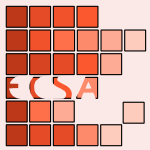 ECSA-2019-WagemannKS #architecture #multi #optimisation
ECSA-2019-WagemannKS #architecture #multi #optimisation- ADOOPLA - Combining Product-Line- and Product-Level Criteria in Multi-objective Optimization of Product Line Architectures (TW, RTK, KS), pp. 126–142.
 ICSME-2019-OumazizF0BK #learning
ICSME-2019-OumazizF0BK #learning- Handling Duplicates in Dockerfiles Families: Learning from Experts (MAO, JRF, XB0, TFB, JK), pp. 524–535.
- IFM-2019-LienhardtDTT #summary
- Summary of: On Checking Delta-Oriented Software Product Lines of Statecharts (ML, FD, LT, GT), pp. 534–537.
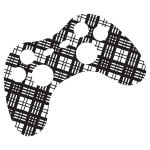 DiGRA-2019-Altice #game studies
DiGRA-2019-Altice #game studies- Joy Family: Japanese Board Games in the Post-War Shōwa Period (NA).
 FDG-2019-Poor #community #game studies #online #scalability
FDG-2019-Poor #community #game studies #online #scalability- Building and sustaining large, long-term online communities: family business and gamifying the game (NP), p. 12.
 ICML-2019-LiSSG #exponential #kernel #learning
ICML-2019-LiSSG #exponential #kernel #learning- Learning deep kernels for exponential family densities (WL, DJS, HS, AG), pp. 6737–6746.
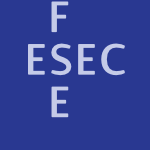 ESEC-FSE-2019-Greiner #model transformation #on the #reuse
ESEC-FSE-2019-Greiner #model transformation #on the #reuse- On extending single-variant model transformations for reuse in software product line engineering (SG), pp. 1160–1163.
 ESEC-FSE-2019-ShahinCS #analysis
ESEC-FSE-2019-ShahinCS #analysis- Lifting Datalog-based analyses to software product lines (RS, MC, RS), pp. 39–49.
 GPCE-2019-HinterreiterNLS #evolution #feature model #modelling
GPCE-2019-HinterreiterNLS #evolution #feature model #modelling- Harmonized temporal feature modeling to uniformly perform, track, analyze, and replay software product line evolution (DH, MN, LL, CS, HP, PG), pp. 115–128.
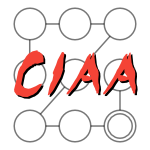 CIAA-2018-IbarraM
CIAA-2018-IbarraM - Semilinearity of Families of Languages (OHI, IM), pp. 211–222.
 CHI-PLAY-2018-RosenqvistBPM #game studies #mobile #social
CHI-PLAY-2018-RosenqvistBPM #game studies #mobile #social- MeteorQuest - Bringing Families Together Through Proxemics Play In A Mobile Social Game (RR, JB, EP, TM), pp. 439–450.
 MoDELS-2018-LaraGCS #model transformation
MoDELS-2018-LaraGCS #model transformation- Model Transformation Product Lines (JdL, EG, MC, RS), pp. 67–77.
 ESEC-FSE-2018-MansoorSSBCF #case study #experience #modelling #testing
ESEC-FSE-2018-MansoorSSBCF #case study #experience #modelling #testing- Modeling and testing a family of surgical robots: an experience report (NM, JAS, BS, HB, MBC, SF), pp. 785–790.
- ICSE-2018-GarciaHM #android #detection #identification #lightweight #obfuscation
- Lightweight, obfuscation-resilient detection and family identification of Android malware (JG, MH, SM), p. 497.
- ICSE-2018-GuoS #case study #re-engineering #search-based
- To preserve or not to preserve invalid solutions in search-based software engineering: a case study in software product lines (JG, KS0), pp. 1027–1038.
 GPCE-2018-Peldszus0J #analysis #feature model #modelling #security
GPCE-2018-Peldszus0J #analysis #feature model #modelling #security- Model-based security analysis of feature-oriented software product lines (SP, DS0, JJ), pp. 93–106.
 GPCE-2018-RulandLBLTLR #effectiveness #testing
GPCE-2018-RulandLBLTLR #effectiveness #testing- Measuring effectiveness of sample-based product-line testing (SR, LL, JB, SL, TT, ML, MR), pp. 119–133.
 SLE-2018-GuerraLCS #metamodelling
SLE-2018-GuerraLCS #metamodelling- Analysing meta-model product lines (EG, JdL, MC, RS), pp. 160–173.
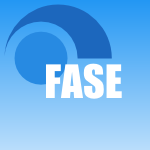 FASE-2018-0001PJ #multi #variability
FASE-2018-0001PJ #multi #variability- Taming Multi-Variability of Software Product Line Transformations (DS0, SP, JJ), pp. 337–355.
 ECSA-2017-CamaraGS #synthesis #trade-off #verification
ECSA-2017-CamaraGS #synthesis #trade-off #verification- Synthesis and Quantitative Verification of Tradeoff Spaces for Families of Software Systems (JC, DG, BRS), pp. 3–21.
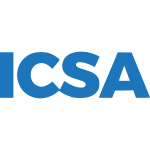 ICSA-2017-ZhengCA #architecture #consistency #source code #traceability
ICSA-2017-ZhengCA #architecture #consistency #source code #traceability- Mapping Features to Source Code through Product Line Architecture: Traceability and Conformance (YZ, CC, HUA), pp. 225–234.
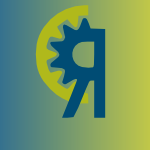 SANER-2017-FenskeMSSS #migration #refactoring
SANER-2017-FenskeMSSS #migration #refactoring- Variant-preserving refactorings for migrating cloned products to a product line (WF, JM, SS, SS, GS), pp. 316–326.
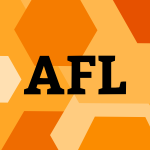 AFL-2017-MedunaM #component #context-sensitive grammar
AFL-2017-MedunaM #component #context-sensitive grammar- CD Grammar Systems with Two Propagating Scattered Context Components Characterize the Family of Context Sensitive Languages (AM, JM), pp. 170–179.
- ICFP-2017-MorrisE
- Constrained type families (JGM, RAE), p. 28.
 FDG-2017-Mawhorter #case study #generative #performance #representation #using
FDG-2017-Mawhorter #case study #generative #performance #representation #using- Efficiency, realism, and representation in generated content: a case study using family tree generation (PAM), p. 4.
 ICML-2017-LiuB #exponential
ICML-2017-LiuB #exponential- Zero-Inflated Exponential Family Embeddings (LPL, DMB), pp. 2140–2148.
 MoDELS-2017-FamelisRCSC #design #nondeterminism #reasoning #variability
MoDELS-2017-FamelisRCSC #design #nondeterminism #reasoning #variability- Software Product Lines with Design Choices: Reasoning about Variability and Design Uncertainty (MF, JR, KC, RS, MC), pp. 93–100.
 MoDELS-2017-TaentzerSSC #category theory #framework
MoDELS-2017-TaentzerSSC #category theory #framework- Transformations of Software Product Lines: A Generalizing Framework Based on Category Theory (GT, RS, DS, MC), pp. 101–111.
 OOPSLA-2017-ZhangM #interface #morphism #named #polymorphism
OOPSLA-2017-ZhangM #interface #morphism #named #polymorphism- Familia: unifying interfaces, type classes, and family polymorphism (YZ, ACM), p. 31.
 ESEC-FSE-2017-KnuppelTMMS #feature model #modelling #question #research
ESEC-FSE-2017-KnuppelTMMS #feature model #modelling #question #research- Is there a mismatch between real-world feature models and product-line research? (AK, TT, SM, JM, IS), pp. 291–302.
 ESEC-FSE-2017-OhBMS #random
ESEC-FSE-2017-OhBMS #random- Finding near-optimal configurations in product lines by random sampling (JO, DSB, MM, NS), pp. 61–71.
- ICSE-2017-BehringerPB #editing #named #projectional
- PEoPL: projectional editing of product lines (BB, JP, TB), pp. 563–574.
 FASE-2017-ZschalerD #composition #flexibility #graph transformation
FASE-2017-ZschalerD #composition #flexibility #graph transformation- GTS Families for the Flexible Composition of Graph Transformation Systems (SZ, FD), pp. 208–225.
 TAP-2017-DamianiHL #abstraction #analysis #refinement
TAP-2017-DamianiHL #abstraction #analysis #refinement- Abstraction Refinement for the Analysis of Software Product Lines (FD, RH, ML), pp. 3–20.
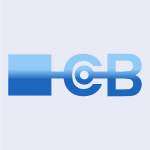 CBSE-2016-ColaTLQS #component
CBSE-2016-ColaTLQS #component- A Component Model for Defining Software Product Families with Explicit Variation Points (SDC, CMT, KKL, CQ0, MS), pp. 79–84.
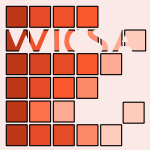 WICSA-2016-AmalfitanoSFLS #design #experience #industrial #modelling #process
WICSA-2016-AmalfitanoSFLS #design #experience #industrial #modelling #process- Introducing Software Product Lines in Model-Based Design Processes: An Industrial Experience (DA, VDS, ARF, ML, SS), pp. 287–290.
 SANER-2016-ArcegaFHC #evolution
SANER-2016-ArcegaFHC #evolution- Achieving Knowledge Evolution in Dynamic Software Product Lines (LA, JF, ØH, CC), pp. 505–516.
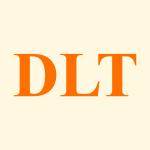 DLT-2016-IbarraM #on the
DLT-2016-IbarraM #on the- On Families of Full Trios Containing Counter Machine Languages (OHI, IM), pp. 216–228.
- IFM-2016-DamianiL #on the #type checking
- On Type Checking Delta-Oriented Product Lines (FD, ML), pp. 47–62.
 ICML-2016-InouyeRD #dependence #exponential #modelling #multi #visual notation
ICML-2016-InouyeRD #dependence #exponential #modelling #multi #visual notation- Square Root Graphical Models: Multivariate Generalizations of Univariate Exponential Families that Permit Positive Dependencies (DII, PR, ISD), pp. 2445–2453.
 ICML-2016-YaoK #learning #performance
ICML-2016-YaoK #learning #performance- Efficient Learning with a Family of Nonconvex Regularizers by Redistributing Nonconvexity (QY, JTK), pp. 2645–2654.
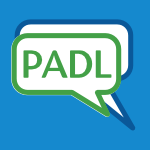 PADL-2016-Tarau16a
PADL-2016-Tarau16a - Computing with Catalan Families, Generically (PT), pp. 117–134.
 ASE-2016-SchwagerlW #collaboration #modelling #named #tool support
ASE-2016-SchwagerlW #collaboration #modelling #named #tool support- SuperMod: tool support for collaborative filtered model-driven software product line engineering (FS, BW), pp. 822–827.
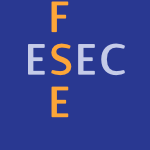 FSE-2016-Hajri #case study #development #testing
FSE-2016-Hajri #case study #development #testing- Supporting change in product lines within the context of use case-driven development and testing (IH), pp. 1082–1084.
 FSE-2016-HajriGBS #case study #domain model #modelling #named
FSE-2016-HajriGBS #case study #domain model #modelling #named- PUMConf: a tool to configure product specific use case and domain models in a product line (IH, AG, LCB, TS), pp. 1008–1012.
 GPCE-2016-Al-HajjajiKTLS #incremental #named #performance #testing #using
GPCE-2016-Al-HajjajiKTLS #incremental #named #performance #testing #using- IncLing: efficient product-line testing using incremental pairwise sampling (MAH, SK, TT, ML, GS), pp. 144–155.
 GPCE-2016-BoussaaBBS #automation #code generation #non-functional #testing
GPCE-2016-BoussaaBBS #automation #code generation #non-functional #testing- Automatic non-functional testing of code generators families (MB, OB, BB, GS), pp. 202–212.
 GPCE-2016-PereiraMKSS #personalisation #recommendation
GPCE-2016-PereiraMKSS #personalisation #recommendation- A feature-based personalized recommender system for product-line configuration (JAP, PM, SK, MS, GS), pp. 120–131.
 GPCE-2016-SteindorferV #towards
GPCE-2016-SteindorferV #towards- Towards a software product line of trie-based collections (MJS, JJV), pp. 168–172.
 CAV-2016-ChistikovMN #source code
CAV-2016-ChistikovMN #source code- Hitting Families of Schedules for Asynchronous Programs (DC, RM, FN), pp. 157–176.
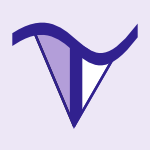 ICST-2016-Kunze #testing
ICST-2016-Kunze #testing- Symbolic Characterisation of Commonalities in Testing Software Product Lines (SK), pp. 387–388.
 ICST-2016-LuYAZ #recommendation
ICST-2016-LuYAZ #recommendation- Nonconformity Resolving Recommendations for Product Line Configuration (HL0, TY0, SA0, LZ0), pp. 57–68.
 ECSA-2015-AbbasA #adaptation #architecture #case study #reasoning #self
ECSA-2015-AbbasA #adaptation #architecture #case study #reasoning #self- Architectural Reasoning Support for Product-Lines of Self-adaptive Software Systems — A Case Study (NA, JA), pp. 20–36.
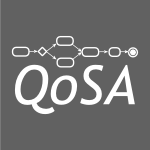 QoSA-2015-MyllarniemiRM #configuration management #representation #security #variability
QoSA-2015-MyllarniemiRM #configuration management #representation #security #variability- Representing and Configuring Security Variability in Software Product Lines (VM, MR, TM), pp. 1–10.
 SANER-2015-LianZ #feature model #non-functional #requirements #towards
SANER-2015-LianZ #feature model #non-functional #requirements #towards- Optimized feature selection towards functional and non-functional requirements in Software Product Lines (XL, LZ), pp. 191–200.
 SANER-2015-LityBS #incremental #slicing #towards
SANER-2015-LityBS #incremental #slicing #towards- Towards incremental model slicing for delta-oriented software product lines (SL, HB, IS), pp. 530–534.
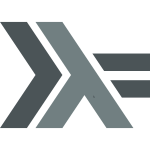 Haskell-2015-SerranoHB
Haskell-2015-SerranoHB - Type families with class, type classes with family (AS0, JH, PB), pp. 129–140.
 Haskell-2015-StolarekJE #haskell #injection
Haskell-2015-StolarekJE #haskell #injection- Injective type families for Haskell (JS, SLPJ, RAE), pp. 118–128.
 ICGT-2015-KissingerZ #diagrams #equation #reasoning #string
ICGT-2015-KissingerZ #diagrams #equation #reasoning #string- Equational Reasoning with Context-Free Families of String Diagrams (AK, VZ), pp. 138–154.
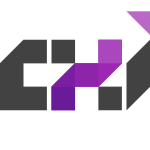 CHI-2015-MelvinBON #communication #dependence
CHI-2015-MelvinBON #communication #dependence- The Effect of Signal Expense and Dependability on Family Communication in Rural and Northern Canada (RMM, AB, EO, CN), pp. 717–726.
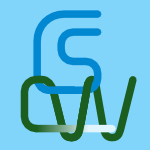 CSCW-2015-BarbarinVK
CSCW-2015-BarbarinVK - Taking our Time: Chronic Illness and Time-Based Objects in Families (AB, TCV, PVK), pp. 288–301.
 CSCW-2015-SaksonoRKCHWP #collaboration #design #game studies
CSCW-2015-SaksonoRKCHWP #collaboration #design #game studies- Spaceship Launch: Designing a Collaborative Exergame for Families (HS, AR, GK, CCS, JAH, CW, AGP), pp. 1776–1787.
 CSCW-2015-SchaefbauerKLSS
CSCW-2015-SchaefbauerKLSS - Snack Buddy: Supporting Healthy Snacking in Low Socioeconomic Status Families (CLS, DUK, AL, GS, KAS), pp. 1045–1057.
 HCI-UC-2015-StarrBBR
HCI-UC-2015-StarrBBR - Historical Registry of Our Families Through Textiles (CLS, SLB, SB, JJR), pp. 125–132.
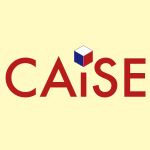 CAiSE-2015-PalmieriCA
CAiSE-2015-PalmieriCA - Handling Regulatory Goal Model Families as Software Product Lines (AP, PC, DA), pp. 181–196.
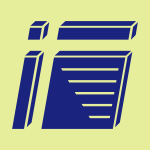 ICEIS-v2-2015-BayaADM #approach #composition #scalability
ICEIS-v2-2015-BayaADM #approach #composition #scalability- Dynamic Large Scale Product Lines through Modularization Approach (AB, BEA, ID, ZM), pp. 439–444.
 ICEIS-v2-2015-IanzenFPMR #automation
ICEIS-v2-2015-IanzenFPMR #automation- Scoping Automation in Software Product Lines (AI, RMF, MAP, AM, SSR), pp. 82–91.
 ICEIS-v2-2015-McharfiADBK #traceability
ICEIS-v2-2015-McharfiADBK #traceability- Return on Investment of Software Product Line Traceability in the Short, Mid and Long Term (ZM, BEA, ID, AB, AK), pp. 463–468.
 ICEIS-v2-2015-TangL #framework #mining #top-down
ICEIS-v2-2015-TangL #framework #mining #top-down- Top-down Feature Mining Framework for Software Product Line (YT, HL), pp. 71–81.
 CIKM-2015-HashemBAKT #performance
CIKM-2015-HashemBAKT #performance- Efficient Computation of Trips with Friends and Families (TH, SB, MEA, LK, ET), pp. 931–940.
 ICML-2015-CohenW #exponential
ICML-2015-CohenW #exponential- Harmonic Exponential Families on Manifolds (TC, MW), pp. 1757–1765.
 ICML-2015-TanseyPSR #exponential #markov #random
ICML-2015-TanseyPSR #exponential #markov #random- Vector-Space Markov Random Fields via Exponential Families (WT, OHMP, ASS, PR), pp. 684–692.
 SEKE-2015-AdjoyanS #architecture
SEKE-2015-AdjoyanS #architecture- An Architecture Description Language for Dynamic Service-Oriented Product Lines (SA, AS), pp. 231–236.
 SEKE-2015-LaserRDOZ #architecture #case study #evolution #experience
SEKE-2015-LaserRDOZ #architecture #case study #evolution #experience- Architectural Evolution of a Software Product Line: an experience report (ML, EMR, ARPD, FMdO, AFZ), pp. 217–222.
 SEKE-2015-OliveiraBFM #development #user interface
SEKE-2015-OliveiraBFM #development #user interface- Adoption of Software Product Line Development to an Environment of Voice User Interface (DRFO, BLDB, ELSXF, AMAM), pp. 705–708.
 ICMT-2015-FamelisLSSSCCDV #case study #migration
ICMT-2015-FamelisLSSSCCDV #case study #migration- Migrating Automotive Product Lines: A Case Study (MF, LL, GMKS, ADS, RS, MC, JRC, JD, HV, SR), pp. 82–97.
 MoDELS-2015-HajriGBS #approach #case study #embedded #industrial #lessons learnt #modelling
MoDELS-2015-HajriGBS #approach #case study #embedded #industrial #lessons learnt #modelling- Applying product line Use case modeling in an industrial automotive embedded system: Lessons learned and a refined approach (IH, AG, LCB, TS), pp. 338–347.
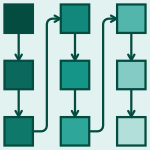 PLEASE-2015-CalefatoNLL
PLEASE-2015-CalefatoNLL - Product Line Engineering for NGO Projects (FC, RDN, FL, FL), pp. 3–6.
 PLEASE-2015-ChitchyanNG #re-engineering #what
PLEASE-2015-ChitchyanNG #re-engineering #what- What Can Software Engineering Do for Sustainability: Case of Software Product Lines (RC, JN, IG), pp. 11–14.
 PLEASE-2015-Gallina #reuse #safety #towards
PLEASE-2015-Gallina #reuse #safety #towards- Towards Enabling Reuse in the Context of Safety-Critical Product Lines (BG), pp. 15–18.
 PLEASE-2015-TzeremesG #approach #development
PLEASE-2015-TzeremesG #approach #development- A Software Product Line Approach for End User Development of Smart Spaces (VT, HG), pp. 23–26.
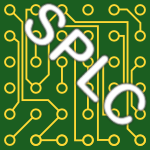 SPLC-2015-AbbasA #adaptation #self #variability
SPLC-2015-AbbasA #adaptation #self #variability- Harnessing variability in product-lines of self-adaptive software systems (NA, JA), pp. 191–200.
 SPLC-2015-ArrietaSE #algorithm #cyber-physical #validation
SPLC-2015-ArrietaSE #algorithm #cyber-physical #validation- Test control algorithms for the validation of cyber-physical systems product lines (AA, GS, LE), pp. 273–282.
 SPLC-2015-BeekFG #adaptation #analysis #paradigm
SPLC-2015-BeekFG #adaptation #analysis #paradigm- Applying the product lines paradigm to the quantitative analysis of collective adaptive systems (MHtB, AF, SG), pp. 321–326.
 SPLC-2015-BeekFGM #analysis #using
SPLC-2015-BeekFGM #analysis #using- Using FMC for family-based analysis of software product lines (MHtB, AF, SG, FM), pp. 432–439.
 SPLC-2015-BeekLLV #analysis #constraints #modelling #probability #statistics
SPLC-2015-BeekLLV #analysis #constraints #modelling #probability #statistics- Statistical analysis of probabilistic models of software product lines with quantitative constraints (MHtB, AL, ALL, AV), pp. 11–15.
 SPLC-2015-BergerLRGS0CC #industrial #what
SPLC-2015-BergerLRGS0CC #industrial #what- What is a feature?: a qualitative study of features in industrial software product lines (TB, DL, JR, PG, AS, MB, MC, KC), pp. 16–25.
 SPLC-2015-Beuche15a #requirements
SPLC-2015-Beuche15a #requirements- Managing requirements in product lines (DB), p. 387.
 SPLC-2015-BeucheH #lifecycle #using
SPLC-2015-BeucheH #lifecycle #using- Using pure: : variants across the product line lifecycle (DB, RH), pp. 352–354.
 SPLC-2015-ColaLTQ
SPLC-2015-ColaLTQ - An MDE tool for defining software product families with explicit variation points (SDC, KKL, CMT, CQ), pp. 355–360.
 SPLC-2015-CordyDGGH #specification
SPLC-2015-CordyDGGH #specification- All-at-once-synthesis of controllers from scenario-based product line specifications (MC, JMD, JG, EG, PH), pp. 26–35.
 SPLC-2015-DhunganaFHS #ecosystem #smarttech
SPLC-2015-DhunganaFHS #ecosystem #smarttech- Smart factory product lines: a configuration perspective on smart production ecosystems (DD, AAF, AH, HS), pp. 201–210.
 SPLC-2015-FederleFCV #architecture #design #named #search-based
SPLC-2015-FederleFCV #architecture #design #named #search-based- OPLA-tool: a support tool for search-based product line architecture design (ÉLF, TdNF, TEC, SRV), pp. 370–373.
 SPLC-2015-FilhoABAB #empirical #java #source code
SPLC-2015-FilhoABAB #empirical #java #source code- Assessing product line derivation operators applied to Java source code: an empirical study (JBFF, SA, OB, MA, BB), pp. 36–45.
 SPLC-2015-FontAHC #concept
SPLC-2015-FontAHC #concept- Building software product lines from conceptualized model patterns (JF, LA, ØH, CC), pp. 46–55.
 SPLC-2015-FontBHC #automation #formal method #variability
SPLC-2015-FontBHC #automation #formal method #variability- Automating the variability formalization of a model family by means of common variability language (JF, MB, ØH, CC), pp. 411–418.
 SPLC-2015-GaetaC #modelling
SPLC-2015-GaetaC #modelling- Modeling aerospace systems product lines in SysML (JPG, KC), pp. 293–302.
 SPLC-2015-GreggSC
SPLC-2015-GreggSC - The more you do, the more you save: the superlinear cost avoidance effect of systems product line engineering (SPG, RS, PC), pp. 303–310.
 SPLC-2015-HeinemanHDR #framework #migration #object-oriented #synthesis #towards
SPLC-2015-HeinemanHDR #framework #migration #object-oriented #synthesis #towards- Towards migrating object-oriented frameworks to enable synthesis of product line members (GTH, AH, BD, JR), pp. 56–60.
 SPLC-2015-Krueger #lifecycle
SPLC-2015-Krueger #lifecycle- Mechanical product lifecycle management meets product line engineering (CWK), pp. 316–320.
 SPLC-2015-KruegerC #generative
SPLC-2015-KruegerC #generative- Second generation systems and software product line engineering (CWK, PCC), pp. 388–389.
 SPLC-2015-KuhnCO
SPLC-2015-KuhnCO - Choosy and picky: configuration of language product lines (TK, WC, DMO), pp. 71–80.
 SPLC-2015-LachmannLLBSS #integration #testing
SPLC-2015-LachmannLLBSS #integration #testing- Delta-oriented test case prioritization for integration testing of software product lines (RL, SL, SL, SB, SS, IS), pp. 81–90.
 SPLC-2015-MartinezZBKT #approach #bottom-up
SPLC-2015-MartinezZBKT #approach #bottom-up- Bottom-up adoption of software product lines: a generic and extensible approach (JM, TZ, TFB, JK, YLT), pp. 101–110.
 SPLC-2015-MazoMRST #named
SPLC-2015-MazoMRST #named- VariaMos: an extensible tool for engineering (dynamic) product lines (RM, JCMF, LR, CS, GT), pp. 374–379.
 SPLC-2015-McVoy
SPLC-2015-McVoy - Preliminary product line support in BitKeeper (LM), pp. 245–252.
 SPLC-2015-QuintonRVGB #challenge #evolution
SPLC-2015-QuintonRVGB #challenge #evolution- Evolution in dynamic software product lines: challenges and perspectives (CQ, RR, MV, PG, LB), pp. 126–130.
 SPLC-2015-ReulingBRLK #effectiveness #generative #testing
SPLC-2015-ReulingBRLK #effectiveness #generative #testing- Fault-based product-line testing: effective sample generation based on feature-diagram mutation (DR, JB, SR, ML, UK), pp. 131–140.
 SPLC-2015-RumpeSWRM #behaviour #evolution #maintenance #modelling
SPLC-2015-RumpeSWRM #behaviour #evolution #maintenance #modelling- Behavioral compatibility of simulink models for product line maintenance and evolution (BR, CS, MvW, JOR, PM), pp. 141–150.
 SPLC-2015-SchmidE #ecosystem #named #variability
SPLC-2015-SchmidE #ecosystem #named #variability- EASy-Producer: from product lines to variability-rich software ecosystems (KS, HE), pp. 390–391.
 SPLC-2015-SmileySD #architecture #evolution #industrial
SPLC-2015-SmileySD #architecture #evolution #industrial- Evolving an industrial analytics product line architecture (KS, WS, AD), pp. 263–272.
 SPLC-2015-SoutoGdMKB #debugging #detection #feature model #modelling #performance
SPLC-2015-SoutoGdMKB #debugging #detection #feature model #modelling #performance- Faster bug detection for software product lines with incomplete feature models (SS, DG, Md, DM, SK, DSB), pp. 151–160.
 SPLC-2015-SteffenLM #constraints #synthesis
SPLC-2015-SteffenLM #constraints #synthesis- User-level synthesis: treating product lines as systems of constraints (BS, ALL, TMS), pp. 427–431.
 SPLC-2015-TeixeiraABG #evolution #reasoning
SPLC-2015-TeixeiraABG #evolution #reasoning- A product line of theories for reasoning about safe evolution of product lines (LT, VA, PB, RG), pp. 161–170.
 SPLC-2015-TeixeiraBG #evolution #multi
SPLC-2015-TeixeiraBG #evolution #multi- Safe evolution of product populations and multi product lines (LT, PB, RG), pp. 171–175.
 SPLC-2015-TraskR #architecture #modelling
SPLC-2015-TraskR #architecture #modelling- Leveraging model driven engineering in software product line architectures (BT, AR), p. 392.
 SPLC-2015-ValeAFG #case study #comparative #metric
SPLC-2015-ValeAFG #case study #comparative #metric- Defining metric thresholds for software product lines: a comparative study (GV, DA, EF, AFG), pp. 176–185.
 SPLC-2015-VasilevskiyHCJS
SPLC-2015-VasilevskiyHCJS - The BVR tool bundle to support product line engineering (AV, ØH, FC, MFJ, DS), pp. 380–384.
 SPLC-2015-WozniakC #how
SPLC-2015-WozniakC #how- How automotive engineering is taking product line engineering to the extreme (LW, PC), pp. 327–336.
 SPLC-2015-YueAS #analysis #case study #cyber-physical #experience
SPLC-2015-YueAS #analysis #case study #cyber-physical #experience- Cyber-physical system product line engineering: comprehensive domain analysis and experience report (TY, SA, BS), pp. 338–347.
 ASE-2015-MartinezZBKT #automation #modelling
ASE-2015-MartinezZBKT #automation #modelling- Automating the Extraction of Model-Based Software Product Lines from Model Variants (T) (JM, TZ, TFB, JK, YLT), pp. 396–406.
 ASE-2015-PietschKKRO #framework #modelling #named
ASE-2015-PietschKKRO #framework #modelling #named- SiPL — A Delta-Based Modeling Framework for Software Product Line Engineering (CP, TK, UK, DR, MO), pp. 852–857.
 ESEC-FSE-2015-AcherBCBJ
ESEC-FSE-2015-AcherBCBJ - Product lines can jeopardize their trade secrets (MA, GB, BC, BB, JMJ), pp. 930–933.
 GTTSE-2015-Rubin
GTTSE-2015-Rubin - To Merge or Not to Merge: Managing Software Product Families (JR), pp. 73–97.
 ICSE-v1-2015-Ben-DavidSAB #model checking #requirements #satisfiability #using
ICSE-v1-2015-Ben-DavidSAB #model checking #requirements #satisfiability #using- Symbolic Model Checking of Product-Line Requirements Using SAT-Based Methods (SBD, BS, JMA, SB), pp. 189–199.
 ICSE-v1-2015-HenardPHT #configuration management #constraints #multi #scalability #theorem proving
ICSE-v1-2015-HenardPHT #configuration management #constraints #multi #scalability #theorem proving- Combining Multi-Objective Search and Constraint Solving for Configuring Large Software Product Lines (CH, MP, MH, YLT), pp. 517–528.
 ICSE-v2-2015-Assuncao #architecture #migration #search-based
ICSE-v2-2015-Assuncao #architecture #migration #search-based- Search-Based Migration of Model Variants to Software Product Line Architectures (WKGA), pp. 895–898.
 ICSE-v2-2015-Dintzner #evolution
ICSE-v2-2015-Dintzner #evolution- Safe Evolution Patterns for Software Product Lines (ND), pp. 875–878.
 ICSE-v2-2015-SchroederH0HLM #architecture #case study #design #evaluation #industrial #multi #self
ICSE-v2-2015-SchroederH0HLM #architecture #case study #design #evaluation #industrial #multi #self- Design and Evaluation of a Customizable Multi-Domain Reference Architecture on Top of Product Lines of Self-Driving Heavy Vehicles — An Industrial Case Study (JS, DH, CB, CJH, LL, AM), pp. 189–198.
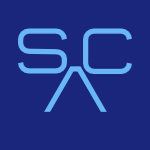 SAC-2015-LabibPCG #approach #development #learning #reuse
SAC-2015-LabibPCG #approach #development #learning #reuse- Enforcing reuse and customization in the development of learning objects: a product line approach (AEL, MCP, JHC, AG), pp. 261–263.
 SAC-2015-SenaCK #exception
SAC-2015-SenaCK #exception- An investigation on the evolutionary nature of exception handling violations in software product lines (DS, RC, UK), pp. 1616–1623.
 SAC-2015-TizzeiABC #architecture #case study #tool support #using
SAC-2015-TizzeiABC #architecture #case study #tool support #using- Architecting cloud tools using software product line techniques: an exploratory study (LPT, LGA, MdB, RFGC), pp. 1441–1448.
 GPCE-2015-FontAHC #metamodelling #modelling
GPCE-2015-FontAHC #metamodelling #modelling- Addressing metamodel revisions in model-based software product lines (JF, LA, ØH, CC), pp. 161–170.
 GPCE-2015-SeidlSS #design pattern #development #generative #using #variability
GPCE-2015-SeidlSS #design pattern #development #generative #using #variability- Generative software product line development using variability-aware design patterns (CS, SS, IS), pp. 151–160.
 DAC-2015-KrishnaNRT #analysis #composition #modelling
DAC-2015-KrishnaNRT #analysis #composition #modelling- Compositional modeling and analysis of automotive feature product lines (SNK, GKN, SR, AT), p. 6.
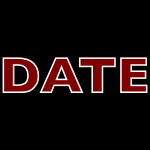 DATE-2015-JovanovicP
DATE-2015-JovanovicP - Fault-based attacks on the Bel-T block cipher family (PJ, IP), pp. 601–604.
 FASE-2015-BurdekLBHRA015 #generative #multi #reuse #testing
FASE-2015-BurdekLBHRA015 #generative #multi #reuse #testing- Facilitating Reuse in Multi-goal Test-Suite Generation for Software Product Lines (JB, ML, SB, AH, AvR, SA, DB), pp. 84–99.
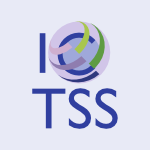 ICTSS-2015-WeisslederWL #automation #bound #design
ICTSS-2015-WeisslederWL #automation #bound #design- Automated Test Design for Boundaries of Product Line Variants (SW, FW, HL), pp. 86–101.
 CBSE-2014-BuresHP #architecture #continuation #modelling #runtime
CBSE-2014-BuresHP #architecture #continuation #modelling #runtime- Strengthening architectures of smart CPS by modeling them as runtime product-lines (TB, PH, FP), pp. 91–96.
 WICSA-2014-SmileyMW #adaptation #architecture #performance #reuse
WICSA-2014-SmileyMW #adaptation #architecture #performance #reuse- A Dynamic Software Product Line Architecture for Prepackaged Expert Analytics: Enabling Efficient Capture, Reuse and Adaptation of Operational Knowledge (KS, SM, PW), pp. 205–214.
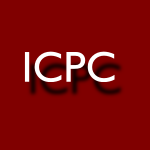 ICPC-2014-WenT #clustering #evaluation
ICPC-2014-WenT #clustering #evaluation- The MoJo family: a story about clustering evaluation (ZW, VT), p. 2.
 AFL-2014-HolzerJ #automaton #regular expression
AFL-2014-HolzerJ #automaton #regular expression- More Structural Characterizations of Some Subregular Language Families by Biautomata (MH, SJ), pp. 271–285.
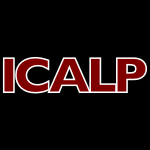 ICALP-v1-2014-GolovnevKM #approach #problem
ICALP-v1-2014-GolovnevKM #approach #problem- Families with Infants: A General Approach to Solve Hard Partition Problems (AG, ASK, IM), pp. 551–562.
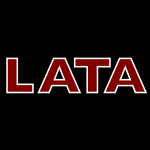 LATA-2014-Tarau
LATA-2014-Tarau - Computing with Catalan Families (PT), pp. 565–575.
 Haskell-2014-EisenbergS #haskell
Haskell-2014-EisenbergS #haskell- Promoting functions to type families in Haskell (RAE, JS), pp. 95–106.
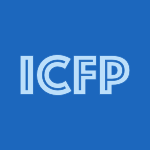 ICFP-2014-ChenE #analysis #parametricity #type system
ICFP-2014-ChenE #analysis #parametricity #type system- Type-based parametric analysis of program families (SC, ME), pp. 39–51.
 CHI-2014-OduorNJHPH #communication #how
CHI-2014-OduorNJHPH #communication #how- How technology supports family communication in rural, suburban, and urban kenya (EO, CN, TKJ, KH, CP, SH), pp. 2705–2714.
 CSCW-2014-LeshedHK #coordination #quote
CSCW-2014-LeshedHK #coordination #quote- “Our life is the farm and farming is our life”: home-work coordination in organic farm families (GL, MH, JK), pp. 487–498.
 CSCW-2014-Willever-FarrF #matter #online
CSCW-2014-Willever-FarrF #matter #online- Family matters: control and conflict in online family history production (HWF, AF), pp. 475–486.
 DUXU-DP-2014-JeurensTB
DUXU-DP-2014-JeurensTB - Increasing Family Involvement in Elderly Care (JJ, KvT, RB), pp. 403–411.
 HIMI-AS-2014-HamaguchiAWA #communication #effectiveness
HIMI-AS-2014-HamaguchiAWA #communication #effectiveness- Investigating the Effective Factors of Communication for Family Members Living Apart (NH, DA, MW, YA), pp. 373–382.
 SCSM-2014-KamalNB #communication #distributed #mobile #quote
SCSM-2014-KamalNB #communication #distributed #mobile #quote- “Presence in Absence”: Distributed Family Communication Practices for Familial Bonding via Mobile Communication Technology (FMK, NLMN, HB), pp. 474–485.
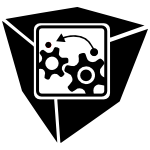 VISSOFT-2014-MartinezZMBKT #constraints #graph #paradigm #visualisation
VISSOFT-2014-MartinezZMBKT #constraints #graph #paradigm #visualisation- Feature Relations Graphs: A Visualisation Paradigm for Feature Constraints in Software Product Lines (JM, TZ, RM, TFB, JK, YLT), pp. 50–59.
 CAiSE-2014-NobauerSG #analysis #approach #automation #evaluation #similarity
CAiSE-2014-NobauerSG #analysis #approach #automation #evaluation #similarity- Similarity Analysis within Product Line Scoping: An Evaluation of a Semi-automatic Approach (MN, NS, IG), pp. 165–179.
 CAiSE-2014-Reinhartz-BergerIW #ontology #semantics #using #variability
CAiSE-2014-Reinhartz-BergerIW #ontology #semantics #using #variability- Analyzing Variability of Software Product Lines Using Semantic and Ontological Considerations (IRB, NI, YW), pp. 150–164.
 ICEIS-v1-2014-LettnerZ #data analysis #framework #industrial
ICEIS-v1-2014-LettnerZ #data analysis #framework #industrial- A Data Analysis Framework for High-variety Product Lines in the Industrial Manufacturing Domain (CL, MZ), pp. 209–216.
 ICEIS-v2-2014-OliveiraG #architecture #empirical #metric #validation
ICEIS-v2-2014-OliveiraG #architecture #empirical #metric #validation- Empirical Validation of Product-line Architecture Extensibility Metrics (EAOJ, IMdSG), pp. 111–118.
 ICEIS-v2-2014-PintoDOC #aspect-oriented #development #framework #modelling #multi #programming #towards
ICEIS-v2-2014-PintoDOC #aspect-oriented #development #framework #modelling #multi #programming #towards- Evaluating the Effort for Modularizing Multiple-Domain Frameworks Towards Framework Product Lines with Aspect-oriented Programming and Model-driven Development (VHSCP, RSD, ALO, VVdC), pp. 60–70.
 ICEIS-v2-2014-SilvaFG #configuration management #runtime #towards
ICEIS-v2-2014-SilvaFG #configuration management #runtime #towards- Toward a QoS Based Run-time Reconfiguration in Service-oriented Dynamic Software Product Lines (JRFdS, ASdMF, VCG), pp. 460–465.
 ICML-c2-2014-GunasekarRG #constraints #exponential #matrix
ICML-c2-2014-GunasekarRG #constraints #exponential #matrix- Exponential Family Matrix Completion under Structural Constraints (SG, PR, JG), pp. 1917–1925.
 SEKE-2014-BarreirosM #flexibility #modelling
SEKE-2014-BarreirosM #flexibility #modelling- Flexible Modeling and Product Derivation in Software Product Lines (JB, AMDM), pp. 67–70.
 SEKE-2014-JuniorFJB #learning #mobile #towards
SEKE-2014-JuniorFJB #learning #mobile #towards- Towards the Establishment of a Software Product Line for Mobile Learning Applications (VFJ, NFDF, EAdOJ, EFB), pp. 678–683.
 SEKE-2014-LianZ #feature model
SEKE-2014-LianZ #feature model- An Evolutionary Methodology for Optimized Feature Selection in Software Product Lines (XL, LZ), pp. 63–66.
 SEKE-2014-NoorianBD #comprehension
SEKE-2014-NoorianBD #comprehension- From Intentions to Decisions: Understanding Stakeholders’ Objectives in Software Product Line Configuration (MN, EB, WD), pp. 671–677.
 SEKE-2014-QueirozB #approach #embedded #modelling
SEKE-2014-QueirozB #approach #embedded #modelling- A Critical Embedded System Product Line Model-based Approach (PGGQ, RTVB), pp. 71–75.
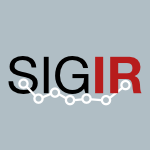 SIGIR-2014-KoopmanZ #comprehension #information retrieval
SIGIR-2014-KoopmanZ #comprehension #information retrieval- Understanding negation and family history to improve clinical information retrieval (BK, GZ), pp. 971–974.
 MoDELS-2014-VasilevskiyH
MoDELS-2014-VasilevskiyH - Resolution of Interfering Product Fragments in Software Product Line Engineering (AV, ØH), pp. 467–483.
 SPLC-2014-AcherBBJ #3d
SPLC-2014-AcherBBJ #3d- Customization and 3D printing: a challenging playground for software product lines (MA, BB, OB, JMJ), pp. 142–146.
 SPLC-2014-Al-HajjajiTMLS #similarity #testing
SPLC-2014-Al-HajjajiTMLS #similarity #testing- Similarity-based prioritization in software product-line testing (MAH, TT, JM, ML, GS), pp. 197–206.
 SPLC-2014-AngererPLGG #dependence #graph #identification
SPLC-2014-AngererPLGG #dependence #graph #identification- Identifying inactive code in product lines with configuration-aware system dependence graphs (FA, HP, DL, AG, PG), pp. 52–61.
 SPLC-2014-Baresi #adaptation #self
SPLC-2014-Baresi #adaptation #self- Self-adaptive systems, services, and product lines (LB), pp. 2–4.
 SPLC-2014-ChitchyanNG
SPLC-2014-ChitchyanNG - Sustainability in software product lines (RC, JN, IG), p. 367.
 SPLC-2014-ColanziVGO #approach #design #search-based
SPLC-2014-ColanziVGO #approach #design #search-based- A search-based approach for software product line design (TEC, SRV, IMSG, WNO), pp. 237–241.
 SPLC-2014-DamianiSW #multi
SPLC-2014-DamianiSW #multi- Delta-oriented multi software product lines (FD, IS, TW), pp. 232–236.
 SPLC-2014-DieumegardTP #approach #data flow #library #semantics #specification
SPLC-2014-DieumegardTP #approach #data flow #library #semantics #specification- A software product line approach for semantic specification of block libraries in dataflow languages (AD, AT, MP), pp. 217–226.
 SPLC-2014-DillonRD #approach
SPLC-2014-DillonRD #approach- A methodical approach to product line adoption (MD, JR, RD), pp. 340–349.
 SPLC-2014-GreggSLC #aspect-oriented #lessons learnt #multi
SPLC-2014-GreggSLC #aspect-oriented #lessons learnt #multi- Lessons from AEGIS: organizational and governance aspects of a major product line in a multi-program environment (SPG, RS, EL, PC), pp. 264–273.
 SPLC-2014-HarmanJKLPZ #overview #re-engineering
SPLC-2014-HarmanJKLPZ #overview #re-engineering- Search based software engineering for software product line engineering: a survey and directions for future work (MH, YJ, JK, WBL, JP, YZ), pp. 5–18.
 SPLC-2014-HartmannLB #testing
SPLC-2014-HartmannLB #testing- Risk based testing for software product line engineering (HH, FvdL, JB), pp. 227–231.
 SPLC-2014-Hubaux #research #what
SPLC-2014-Hubaux #research #what- What research in software product line engineering is not solving in configuration (AH), p. 19.
 SPLC-2014-KnappRS #development #modelling #on the #testing #using
SPLC-2014-KnappRS #development #modelling #on the #testing #using- On the use of test cases in model-based software product line development (AK, MR, BHS), pp. 247–251.
 SPLC-2014-KruegerC #generative
SPLC-2014-KruegerC #generative- Second generation systems and software product line engineering (CWK, PCC), p. 358.
 SPLC-2014-MannionS #architecture #requirements
SPLC-2014-MannionS #architecture #requirements- Mapping product line requirements to a product line architecture (MM, JS), p. 362.
 SPLC-2014-NasrSAB #industrial #towards
SPLC-2014-NasrSAB #industrial #towards- Moving toward product line engineering in a nuclear industry consortium (SBN, NS, MA, BB), pp. 294–303.
 SPLC-2014-OlaecheaRGC #approximate #comparison #multi #optimisation
SPLC-2014-OlaecheaRGC #approximate #comparison #multi #optimisation- Comparison of exact and approximate multi-objective optimization for software product lines (RO, DR, JG, KC), pp. 92–101.
 SPLC-2014-SchroterSTS #interface #programming
SPLC-2014-SchroterSTS #interface #programming- Feature-context interfaces: tailored programming interfaces for software product lines (RS, NS, TT, GS), pp. 102–111.
 SPLC-2014-SeidlSA #variability
SPLC-2014-SeidlSA #variability- Integrated management of variability in space and time in software families (CS, IS, UA), pp. 22–31.
 SPLC-2014-ShakerA #behaviour #interactive
SPLC-2014-ShakerA #behaviour #interactive- Behaviour interactions among product-line features (PS, JMA), pp. 242–246.
 SPLC-2014-SimidchievaO #composition #generative #verification
SPLC-2014-SimidchievaO #composition #generative #verification- Generation, composition, and verification of families of human-intensive systems (BIS, LJO), pp. 207–216.
 SPLC-2014-ThumMBHRS #model checking #proving #theorem proving
SPLC-2014-ThumMBHRS #model checking #proving #theorem proving- Potential synergies of theorem proving and model checking for software product lines (TT, JM, FB, MH, AvR, GS), pp. 177–186.
 SPLC-2014-TraskR #architecture #modelling
SPLC-2014-TraskR #architecture #modelling- Leveraging model driven engineering in software product line architectures (BT, AR), pp. 360–361.
 SPLC-2014-UrliBC #approach
SPLC-2014-UrliBC #approach- Handling complex configurations in software product lines: a tooled approach (SU, MBF, PC), pp. 112–121.
 SPLC-2014-WangBAGPL #case study #industrial #multi #testing
SPLC-2014-WangBAGPL #case study #industrial #multi #testing- Multi-objective test prioritization in software product line testing: an industrial case study (SW, DB, SA, AG, DP, ML), pp. 32–41.
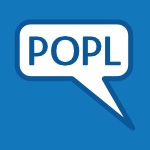 POPL-2014-EisenbergVJW #equation
POPL-2014-EisenbergVJW #equation- Closed type families with overlapping equations (RAE, DV, SLPJ, SW), pp. 671–684.
 ASE-2014-Angerer #impact analysis #multi #variability
ASE-2014-Angerer #impact analysis #multi #variability- Variability-aware change impact analysis of multi-language product lines (FA), pp. 903–906.
 FSE-2014-CordyHLSDL #abstraction #behaviour #modelling #refinement
FSE-2014-CordyHLSDL #abstraction #behaviour #modelling #refinement- Counterexample guided abstraction refinement of product-line behavioural models (MC, PH, AL, PYS, BD, ML), pp. 190–201.
 ICSE-2014-SalayFRSC #model transformation
ICSE-2014-SalayFRSC #model transformation- Lifting model transformations to product lines (RS, MF, JR, ADS, MC), pp. 117–128.
 SAC-2014-ParraJGI #approach #automation
SAC-2014-ParraJGI #approach #automation- An SOA approach for automating software product line adoption (CP, DJ, LG, AI), pp. 1231–1238.
 SAC-2014-ZiadiHPZT #approach #independence #towards
SAC-2014-ZiadiHPZT #approach #independence #towards- Towards a language-independent approach for reverse-engineering of software product lines (TZ, CH, MP, MZ, YLT), pp. 1064–1071.
 GPCE-2014-MaAZS #performance #testing
GPCE-2014-MaAZS #performance #testing- Efficient testing of software product lines via centralization (LM, CA, CZ, HS), pp. 49–52.
 GPCE-2014-RuprechtHL #automation #feature model #scalability
GPCE-2014-RuprechtHL #automation #feature model #scalability- Automatic feature selection in large-scale system-software product lines (AR, BH, DL), pp. 39–48.
 SLE-2014-KuhnLGSA #metamodelling #modelling #programming language
SLE-2014-KuhnLGSA #metamodelling #modelling #programming language- A Metamodel Family for Role-Based Modeling and Programming Languages (TK, ML, SG, CS, UA), pp. 141–160.
 ICST-2014-BallerLLS #incremental #multi #optimisation #testing
ICST-2014-BallerLLS #incremental #multi #optimisation #testing- Multi-objective Test Suite Optimization for Incremental Product Family Testing (HB, SL, ML, IS), pp. 303–312.
 ICST-2014-DemuthLE #automation #incremental #optimisation
ICST-2014-DemuthLE #automation #incremental #optimisation- Automatic and Incremental Product Optimization for Software Product Lines (AD, RELH, AE), pp. 31–40.
 ICST-2014-LacknerTWW #design #modelling
ICST-2014-LacknerTWW #design #modelling- Model-Based Test Design of Product Lines: Raising Test Design to the Product Line Level (HL, MT, FW, SW), pp. 51–60.
 ICST-2014-SanchezSC #comparison #testing
ICST-2014-SanchezSC #comparison #testing- A Comparison of Test Case Prioritization Criteria for Software Product Lines (ABS, SS, ARC), pp. 41–50.
 ECSA-2013-SilvaMCB #architecture #lightweight
ECSA-2013-SilvaMCB #architecture #lightweight- A Lightweight Language for Software Product Lines Architecture Description (ES, ALM, EC, TVB), pp. 114–121.
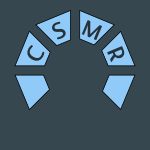 CSMR-2013-ArnaoudovaPAG #anti
CSMR-2013-ArnaoudovaPAG #anti- A New Family of Software Anti-patterns: Linguistic Anti-patterns (VA, MDP, GA, YGG), pp. 187–196.
 CSMR-2013-DubinskyRBDBC #case study #industrial
CSMR-2013-DubinskyRBDBC #case study #industrial- An Exploratory Study of Cloning in Industrial Software Product Lines (YD, JR, TB, SD, MB, KC), pp. 25–34.
 ICSM-2013-Lopez-HerrejonCFEA #multi #testing
ICSM-2013-Lopez-HerrejonCFEA #multi #testing- Multi-objective Optimal Test Suite Computation for Software Product Line Pairwise Testing (RELH, JFC, JF, AE, EA), pp. 404–407.
 LATA-2013-BabaaliK #automaton #on the
LATA-2013-BabaaliK #automaton #on the- On the Construction of a Family of Automata That Are Generically Non-minimal (PB, CK), pp. 80–91.
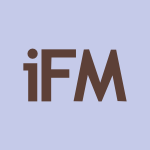 IFM-2013-MilloRKN #composition #verification
IFM-2013-MilloRKN #composition #verification- Compositional Verification of Software Product Lines (JVM, SR, SNK, GKN), pp. 109–123.
 FDG-2013-DumasHRS
FDG-2013-DumasHRS - The Simula Family (JED, NH, UR, NS), pp. 393–395.
 CHI-2013-HakanssonS
CHI-2013-HakanssonS - Beyond being green: simple living families and ICT (MH, PS), pp. 2725–2734.
 CHI-2013-NeustaedterBM #energy #how #process
CHI-2013-NeustaedterBM #energy #how #process- Everyday activities and energy consumption: how families understand the relationship (CN, LB, AM), pp. 1183–1192.
 CHI-2013-YamashitaKHK #comprehension
CHI-2013-YamashitaKHK #comprehension- Understanding the conflicting demands of family caregivers caring for depressed family members (NY, HK, KH, TK), pp. 2637–2646.
 CHI-2013-YuillRR #collaboration
CHI-2013-YuillRR #collaboration- Pass the iPad: collaborative creating and sharing in family groups (NY, YR, JR), pp. 941–950.
 CSCW-2013-InkpenTJTV #case study #experience #named #process
CSCW-2013-InkpenTJTV #case study #experience #named #process- Experiences2Go: sharing kids’ activities outside the home with remote family members (KI, BT, SJ, JCT, GV), pp. 1329–1340.
 CSCW-2013-KazakosHV
CSCW-2013-KazakosHV - Revisiting the relationship between reunion and technology-mediated separation in periodically transitioning families (KK, SH, FV), pp. 1157–1168.
 CSCW-2013-NeustaedterG #chat #interactive #video
CSCW-2013-NeustaedterG #chat #interactive #video- Exploring pet video chat: the remote awareness and interaction needs of families with dogs and cats (CN, JG), pp. 1549–1554.
 DUXU-NTE-2013-FabriWT #behaviour
DUXU-NTE-2013-FabriWT #behaviour- Changing Eating Behaviors through a Cooking-Based Website for the Whole Family (MF, AW, PT), pp. 484–493.
 HCI-UC-2013-TsaiHCL #communication #named #network #online #social #using
HCI-UC-2013-TsaiHCL #communication #named #network #online #social #using- Memotree: Using Online Social Networking to Strengthen Family Communication (THT, YLH, HTC, YWL), pp. 359–367.
 HIMI-D-2013-MogawaSI #algorithm #representation #set
HIMI-D-2013-MogawaSI #algorithm #representation #set- Generalized Algorithm for Obtaining a Family of Evaluating Attributes’ Sets Representing Customer’s Preference (TM, FS, SI), pp. 494–504.
 HIMI-HSM-2013-EverardJM #mobile
HIMI-HSM-2013-EverardJM #mobile- Enabling Access to Healthy Food Alternatives for Low-Income Families: The Role of Mobile Technology (AE, BMJ, SM), pp. 245–251.
 HIMI-HSM-2013-KinoeOS #communication #design
HIMI-HSM-2013-KinoeOS #communication #design- Qualitative Study for Designing Peripheral Communication between Hospitalized Children and Their Family Members (YK, CO, YS), pp. 275–284.
 VISSOFT-2013-Lopez-HerrejonE #interactive #testing #towards #visualisation
VISSOFT-2013-Lopez-HerrejonE #interactive #testing #towards #visualisation- Towards interactive visualization support for pairwise testing software product lines (RELH, AE), pp. 1–4.
 ICEIS-v2-2013-FragalSGJ #approach #embedded #specification
ICEIS-v2-2013-FragalSGJ #approach #embedded #specification- Application Engineering for Embedded Systems — Transforming SysML Specification to Simulink within a Product-Line based Approach (VHF, RFS, IMdSG, EAdOJ), pp. 94–101.
 ICEIS-v2-2013-SilvaFJGO #approach #embedded #named
ICEIS-v2-2013-SilvaFJGO #approach #embedded #named- SyMPLES — A SysML-based Approach for Developing Embedded Systems Software Product Lines (RFS, VHF, EAdOJ, IMdSG, FO), pp. 257–264.
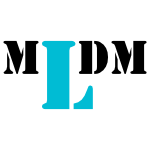 MLDM-2013-ElGibreenA #learning #multi
MLDM-2013-ElGibreenA #learning #multi- Multi Model Transfer Learning with RULES Family (HE, MSA), pp. 42–56.
 SEKE-2013-FerreiraVQ #approach #testing
SEKE-2013-FerreiraVQ #approach #testing- A Mutation Approach to Feature Testing of Software Product Lines (JMF, SRV, MAQ), pp. 232–237.
 SEKE-2013-NetoMGA #effectiveness #testing
SEKE-2013-NetoMGA #effectiveness #testing- Analyzing the Effectiveness of a System Testing Tool for Software Product Line Engineering (CRLN, IdCM, VCG, ESdA), pp. 584–588.
 SEKE-2013-SilvaVMA #approach
SEKE-2013-SilvaVMA #approach- Scrum-based Approach for Analyzing Commonalities and Variabilities in Software Product Lines (IFdS, TV, SRLM, ESdA), pp. 238–243.
 SEKE-2013-SouzaV #agile
SEKE-2013-SouzaV #agile- Selecting Agile Practices for Developing Software Product Lines (DSdS, PV), pp. 220–225.
 PLEASE-2013-Campbell
PLEASE-2013-Campbell - Products as product lines (GHC), pp. 37–40.
 PLEASE-2013-ChimalakondaN #education #question #what
PLEASE-2013-ChimalakondaN #education #question #what- What makes it hard to apply software product lines to educational technologies? (SC, KVN), pp. 17–20.
 PLEASE-2013-KramerOKC #user interface #visual notation
PLEASE-2013-KramerOKC #user interface #visual notation- Graphical user interfaces in dynamic software product lines (DK, SO, PK, TC), pp. 25–28.
 PLEASE-2013-UrliMBC #how #multi #question
PLEASE-2013-UrliMBC #how #multi #question- How to exploit domain knowledge in Multiple Software Product Lines? (SU, SM, MBF, PC), pp. 13–16.
 SPLC-2013-BashariB #adaptation #self
SPLC-2013-BashariB #adaptation #self- Engineering self-adaptive systems and dynamic software product line (MB, EB), p. 285.
 SPLC-2013-Beuche #legacy
SPLC-2013-Beuche #legacy- Transforming legacy systems into software product lines (DB), p. 275.
 SPLC-2013-Beuche13a #requirements
SPLC-2013-Beuche13a #requirements- Managing requirements in product lines (DB), p. 276.
 SPLC-2013-ChastekM
SPLC-2013-ChastekM - Production planning in a software product line organization (GJC, JDM), p. 281.
 SPLC-2013-Donohoe
SPLC-2013-Donohoe - Introduction to software product lines (PD), p. 274.
 SPLC-2013-DumitrescuMSD #experience #modelling #variability
SPLC-2013-DumitrescuMSD #experience #modelling #variability- Bridging the gap between product lines and systems engineering: an experience in variability management for automotive model based systems engineering (CD, RM, CS, AD), pp. 254–263.
 SPLC-2013-Fantechi #configuration management
SPLC-2013-Fantechi #configuration management- Topologically configurable systems as product families (AF), pp. 151–156.
 SPLC-2013-FilhoABN #case study #generative #modelling
SPLC-2013-FilhoABN #case study #generative #modelling- Generating counterexamples of model-based software product lines: an exploratory study (JBFF, OB, MA, BB, JLN), pp. 72–81.
 SPLC-2013-HenardPPKT #generative #multi #testing
SPLC-2013-HenardPPKT #generative #multi #testing- Multi-objective test generation for software product lines (CH, MP, GP, JK, YLT), pp. 62–71.
 SPLC-2013-Krueger #multi
SPLC-2013-Krueger #multi- Multistage configuration trees for managing product family trees (CWK), pp. 188–197.
 SPLC-2013-KruegerC #generative
SPLC-2013-KruegerC #generative- Second generation systems and software product line engineering (CWK, PCC), pp. 283–284.
 SPLC-2013-LanmanDRCK #challenge
SPLC-2013-LanmanDRCK #challenge- The challenges of applying service orientation to the U.S. Army’s live training software product line (JTL, RD, JR, PCC, CWK), pp. 244–253.
 SPLC-2013-MannionS #architecture #requirements
SPLC-2013-MannionS #architecture #requirements- Aligning product line business and technical strategies: mapping product line requirements to a product line architecture (MM, JS), p. 278.
 SPLC-2013-MarijanGSH #testing
SPLC-2013-MarijanGSH #testing- Practical pairwise testing for software product lines (DM, AG, SS, AH), pp. 227–235.
 SPLC-2013-MurashkinARC #visualisation
SPLC-2013-MurashkinARC #visualisation- Visualization and exploration of optimal variants in product line engineering (AM, MA, DR, KC), pp. 111–115.
 SPLC-2013-MuthigS #framework
SPLC-2013-MuthigS #framework- A framework for role-based feature management in software product line organizations (DM, JS), pp. 178–187.
 SPLC-2013-MyllarniemiSM #case study #performance #variability
SPLC-2013-MyllarniemiSM #case study #performance #variability- Performance variability in software product lines: a case study in the telecommunication domain (VM, JS, TM), pp. 32–41.
 SPLC-2013-Nakagawa0M #architecture #design #process #towards
SPLC-2013-Nakagawa0M #architecture #design #process #towards- Towards a process to design product line architectures based on reference architectures (EYN, MB, JCM), pp. 157–161.
 SPLC-2013-NorthropJ
SPLC-2013-NorthropJ - Introduction to software product lines adoption (LMN, LGJ), p. 286.
 SPLC-2013-SchmidL
SPLC-2013-SchmidL - Product line engineering for globalization: PLE4G (KS, SL), p. 280.
 SPLC-2013-TraskR #architecture #modelling
SPLC-2013-TraskR #architecture #modelling- Leveraging model driven engineering in software product line architectures (BT, AR), p. 279.
 SPLC-2013-XuCMR #testing
SPLC-2013-XuCMR #testing- Continuous test suite augmentation in software product lines (ZX, MBC, WM, GR), pp. 52–61.
 SPLC-2013-ZhangBPSS #case study #evolution #industrial #variability
SPLC-2013-ZhangBPSS #case study #evolution #industrial #variability- Variability evolution and erosion in industrial product lines: a case study (BZ, MB, TP, KS, JES), pp. 168–177.
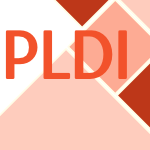 PLDI-2013-BoddenTRBBM #named
PLDI-2013-BoddenTRBBM #named- SPLLIFT: statically analyzing software product lines in minutes instead of years (EB, TT, MR, CB, PB, MM), pp. 355–364.
 ER-BR-2013-GuedesSC #approach
ER-BR-2013-GuedesSC #approach- Goals and Scenarios to Software Product Lines: the GS2SPL Approach (GG, CTLLS, JC).
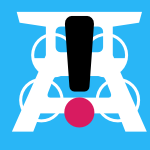 REFSQ-2013-AdamS #effectiveness #elicitation #empirical #requirements
REFSQ-2013-AdamS #effectiveness #elicitation #empirical #requirements- Effective Requirements Elicitation in Product Line Application Engineering — An Experiment (SA, KS), pp. 362–378.
 REFSQ-2013-KlambauerHG #monitoring #multi #requirements
REFSQ-2013-KlambauerHG #monitoring #multi #requirements- Monitoring System-of-Systems Requirements in Multi Product Lines (TK, GH, PG), pp. 379–385.
 ASE-2013-SayyadIMA #scalability
ASE-2013-SayyadIMA #scalability- Scalable product line configuration: A straw to break the camel’s back (ASS, JI, TM, HA), pp. 465–474.
 ESEC-FSE-2013-GreenyerBCHG #incremental #specification
ESEC-FSE-2013-GreenyerBCHG #incremental #specification- Incrementally synthesizing controllers from scenario-based product line specifications (JG, CB, MC, PH, EG), pp. 433–443.
 ICSE-2013-ApelRWGB #case study #verification
ICSE-2013-ApelRWGB #case study #verification- Strategies for product-line verification: case studies and experiments (SA, AvR, PW, AG, DB), pp. 482–491.
 ICSE-2013-CordySHL #model checking #multi
ICSE-2013-CordySHL #model checking #multi- Beyond boolean product-line model checking: dealing with feature attributes and multi-features (MC, PYS, PH, AL), pp. 472–481.
 ICSE-2013-Sanchez #adaptation #self #towards
ICSE-2013-Sanchez #adaptation #self #towards- Toward a software product line for affective-driven self-adaptive systems (JGS), pp. 1381–1384.
 ICSE-2013-SayyadMA #case study #on the #re-engineering #search-based
ICSE-2013-SayyadMA #case study #on the #re-engineering #search-based- On the value of user preferences in search-based software engineering: a case study in software product lines (ASS, TM, HA), pp. 492–501.
 SAC-2013-DiwanCFLBHR #web
SAC-2013-DiwanCFLBHR #web- Applying software product line engineering in building web portals for supercomputing services (PD, PC, EF, YL, TB, DEH, RR), pp. 1765–1771.
 SAC-2013-HollEGV #framework #lifecycle #multi
SAC-2013-HollEGV #framework #lifecycle #multi- An infrastructure for the life cycle management of multi product lines (GH, CE, PG, MV), pp. 1742–1749.
 GPCE-2013-KramerOKC #user interface #using
GPCE-2013-KramerOKC #user interface #using- Using document-oriented GUIs in dynamic software product lines (DK, SO, PK, TC), pp. 85–94.
 FASE-2013-RubinC #quality
FASE-2013-RubinC #quality- Quality of Merge-Refactorings for Product Lines (JR, MC), pp. 83–98.
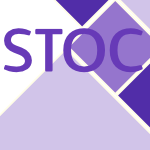 STOC-2013-Ben-SassonGKKS #algebra #geometry
STOC-2013-Ben-SassonGKKS #algebra #geometry- A new family of locally correctable codes based on degree-lifted algebraic geometry codes (EBS, AG, YK, SK, SS), pp. 833–842.
 STOC-2013-BhowmickDL #bound
STOC-2013-BhowmickDL #bound- New bounds for matching vector families (AB, ZD, SL), pp. 823–832.
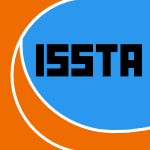 ISSTA-2013-Thum #contract #feature model #verification
ISSTA-2013-Thum #contract #feature model #verification- Product-line verification with feature-oriented contracts (TT), pp. 374–377.
 CBSE-2012-PascualAF #component #pervasive
CBSE-2012-PascualAF #component #pervasive- Component and aspect-based service product line for pervasive systems (GGP, MPA, LFF), pp. 115–124.
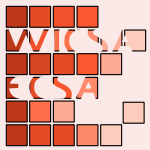 WICSA-ECSA-2012-HeiderVLG #case study #component #evolution
WICSA-ECSA-2012-HeiderVLG #case study #component #evolution- A Case Study on the Evolution of a Component-based Product Line (WH, MV, DL, PG), pp. 1–10.
 WICSA-ECSA-2012-JahnRGLWM #component #maintenance
WICSA-ECSA-2012-JahnRGLWM #component #maintenance- Supporting Model Maintenance in Component-based Product Lines (MJ, RR, PG, ML, RW, HM), pp. 21–30.
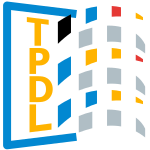 TPDL-2012-MercunZA #approach #named #visualisation
TPDL-2012-MercunZA #approach #named #visualisation- FrbrVis: An Information Visualization Approach to Presenting FRBR Work Families (TM, MZ, TA), pp. 504–507.
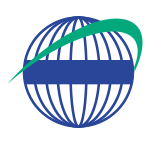 CSEET-2012-WeissL #collaboration
CSEET-2012-WeissL #collaboration- Workshop on Collaborative Software Product Line Engineering (DMW, DL), pp. 77–78.
 CSEET-2012-ZuppiroliCG #game studies #re-engineering
CSEET-2012-ZuppiroliCG #game studies #re-engineering- A Role-Playing Game for a Software Engineering Lab: Developing a Product Line (SZ, PC, MG), pp. 13–22.
 ICPC-2012-Zhang
ICPC-2012-Zhang - Extraction and improvement of conditionally compiled product line code (BZ), pp. 257–258.
 ICSM-2012-DhaliwalKZH #commit #dependence #integration
ICSM-2012-DhaliwalKZH #commit #dependence #integration- Recovering commit dependencies for selective code integration in software product lines (TD, FK, YZ, AEH), pp. 202–211.
 ICSM-2012-YazdanshenasM #component #fine-grained #impact analysis
ICSM-2012-YazdanshenasM #component #fine-grained #impact analysis- Fine-grained change impact analysis for component-based product families (ARY, LM), pp. 119–128.
 ICALP-v1-2012-ChekuriEV #design #graph #network
ICALP-v1-2012-ChekuriEV #design #graph #network- Node-Weighted Network Design in Planar and Minor-Closed Families of Graphs (CC, AE, AV), pp. 206–217.
 LATA-2012-SaloT #automaton #finite #on the #set
LATA-2012-SaloT #automaton #finite #on the #set- On Stable and Unstable Limit Sets of Finite Families of Cellular Automata (VS, IT), pp. 502–513.
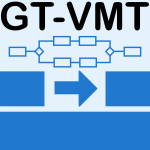 GT-VMT-2012-AnjorinOZS #graph transformation #modelling #optimisation #testing
GT-VMT-2012-AnjorinOZS #graph transformation #modelling #optimisation #testing- Optimizing Model-Based Software Product Line Testing with Graph Transformations (AA, SO, IZ, AS).
 CHI-2012-YardiB #difference
CHI-2012-YardiB #difference- Income, race, and class: exploring socioeconomic differences in family technology use (SY, AB), pp. 3041–3050.
 CSCW-2012-LiuBS #collaboration #design #detection
CSCW-2012-LiuBS #collaboration #design #detection- Conflict detection and resolution for product line design in a collaborative decision making environment (X(L, ECB, JES), pp. 1327–1336.
 CSCW-2012-VasalouOJ #case study
CSCW-2012-VasalouOJ #case study- A case study of non-adoption: the values of location tracking in the family (AV, AMO, ANJ), pp. 779–788.
 CSCW-2012-WycheG #case study #communication #how #quote
CSCW-2012-WycheG #case study #communication #how #quote- “This is how we do it in my country”: a study of computer-mediated family communication among Kenyan migrants in the United States (SW, REG), pp. 87–96.
 CAiSE-2012-EnsanBG #feature model #generative #modelling #search-based #testing
CAiSE-2012-EnsanBG #feature model #generative #modelling #search-based #testing- Evolutionary Search-Based Test Generation for Software Product Line Feature Models (FE, EB, DG), pp. 613–628.
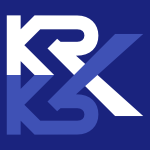 KR-2012-KazakovKS #logic #reasoning
KR-2012-KazakovKS #logic #reasoning- Practical Reasoning with Nominals in the EL Family of Description Logics (YK, MK, FS).
 SEKE-2012-CunhaCAM #modelling #set
SEKE-2012-CunhaCAM #modelling #set- A Set of Inspection Techniques on Software Product Line Models (RC, TC, ESdA, JCM), pp. 657–662.
 SEKE-2012-GuedesSCSDS #named
SEKE-2012-GuedesSCSDS #named- GS2SPL: Goals and Scenarios to Software Product Lines (GG, CTLLS, JC, MS, DD, CS), pp. 651–656.
 SEKE-2012-JuniorGM #architecture #complexity #empirical #metric #validation #variability
SEKE-2012-JuniorGM #architecture #complexity #empirical #metric #validation #variability- Empirical Validation of Variability-based Complexity Metrics for Software Product Line Architecture (EAdOJ, IMdSG, JCM), pp. 622–627.
 SEKE-2012-MedeirosSPM #variability
SEKE-2012-MedeirosSPM #variability- Optimal Variability Selection in Product Line Engineering (RPM, UdSS, FP, LGPM), pp. 635–640.
 SEKE-2012-NetoNAM #testing #tool support
SEKE-2012-NetoNAM #testing #tool support- A Mapping Study on Software Product Lines Testing Tools (CRLN, PAdMSN, ESdA, SRdLM), pp. 628–634.
 SEKE-2012-NoorianBD #classification #non-functional #taxonomy
SEKE-2012-NoorianBD #classification #non-functional #taxonomy- Non-functional Properties in Software Product Lines: A Taxonomy for Classification (MN, EB, WD), pp. 663–667.
 SEKE-2012-RakaLM #approach #generative #modelling
SEKE-2012-RakaLM #approach #generative #modelling- Interoperable EMR Message Generation: A Model-Driven Software Product Line Approach (DR, SHL, MM), pp. 537–540.
 SEKE-2012-RodriguesZJGMD #automation #named
SEKE-2012-RodriguesZJGMD #automation #named- PlugSPL: An Automated Environment for Supporting Plugin-based Software Product Lines (EdMR, AFZ, EAdOJ, IMdSG, JCM, ARPD), pp. 647–650.
 ICMT-2012-Cuadrado #model transformation #towards #transformation language
ICMT-2012-Cuadrado #model transformation #towards #transformation language- Towards a Family of Model Transformation Languages (JSC), pp. 176–191.
 MoDELS-2012-AliYBW #case study #industrial #modelling #testing
MoDELS-2012-AliYBW #case study #industrial #modelling #testing- A Product Line Modeling and Configuration Methodology to Support Model-Based Testing: An Industrial Case Study (SA, TY, LCB, SW), pp. 726–742.
 MoDELS-2012-JohansenHFES #array #generative #modelling
MoDELS-2012-JohansenHFES #array #generative #modelling- Generating Better Partial Covering Arrays by Modeling Weights on Sub-product Lines (MFJ, ØH, FF, AGE, TS), pp. 269–284.
 MoDELS-2012-KulkarniBR #towards
MoDELS-2012-KulkarniBR #towards- Towards Business Application Product Lines (VK, SB, SR), pp. 285–301.
 MoDELS-2012-VierhauserGHHL #consistency #framework #industrial #modelling
MoDELS-2012-VierhauserGHHL #consistency #framework #industrial #modelling- Applying a Consistency Checking Framework for Heterogeneous Models and Artifacts in Industrial Product Lines (MV, PG, WH, GH, DL), pp. 531–545.
 PLEASE-2012-BoffoliCCV #consistency #flexibility #process
PLEASE-2012-BoffoliCCV #consistency #flexibility #process- Driving flexibility and consistency of business processes by means of product-line engineering and decision tables (NB, DC, DC, GV), pp. 33–36.
 PLEASE-2012-FantGP
PLEASE-2012-FantGP - Software product line engineering of space flight software (JSF, HG, RGPI), pp. 41–44.
 PLEASE-2012-FilhoBBN #modelling #multi #variability
PLEASE-2012-FilhoBBN #modelling #multi #variability- Leveraging variability modeling for multi-dimensional model-driven software product lines (JBFF, OB, BB, JLN), pp. 5–8.
 PLEASE-2012-LiY
PLEASE-2012-LiY - Enhance value by building trustworthy software-reliant system of systems from software product lines (DL, YY), pp. 13–16.
 PLEASE-2012-SaratxagaAHEM #variability
PLEASE-2012-SaratxagaAHEM #variability- Product line tool-chain: variability in critical systems (CLS, CAM, ØH, CE, AM), pp. 57–60.
 PLEASE-2012-SozenM #adaptation
PLEASE-2012-SozenM #adaptation- Adapting software product lines for complex certifiable avionics software (NS, EM), pp. 21–24.
 SPLC-2012-BartholdtB
SPLC-2012-BartholdtB - Scope extension of an existing product line (JB, DB), pp. 275–282.
 SPLC-2012-BragaJBL #certification #feature model #modelling
SPLC-2012-BragaJBL #certification #feature model #modelling- Incorporating certification in feature modelling of an unmanned aerial vehicle product line (RTVB, OTJ, KRLJCB, JL), pp. 249–258.
 SPLC-2012-CordySHL #behaviour #modelling #realtime #verification
SPLC-2012-CordySHL #behaviour #modelling #realtime #verification- Behavioural modelling and verification of real-time software product lines (MC, PYS, PH, AL), pp. 66–75.
 SPLC-2012-FloresKC
SPLC-2012-FloresKC - Mega-scale product line engineering at General Motors (RF, CWK, PCC), pp. 259–268.
 SPLC-2012-HofmanSPKB #feature model #modelling
SPLC-2012-HofmanSPKB #feature model #modelling- Domain specific feature modeling for software product lines (PH, TS, TP, MK, AB), pp. 229–238.
 SPLC-2012-LeeKL #overview #testing
SPLC-2012-LeeKL #overview #testing- A survey on software product line testing (JL, SK, DL), pp. 31–40.
 SPLC-2012-MyllarniemiRM #overview #quality #variability
SPLC-2012-MyllarniemiRM #overview #quality #variability- A systematically conducted literature review: quality attribute variability in software product lines (VM, MR, TM), pp. 41–45.
 SPLC-2012-NunesGLL #evolution #heuristic
SPLC-2012-NunesGLL #evolution #heuristic- History-sensitive heuristics for recovery of features in code of evolving program families (CN, AG, CJPdL, JL), pp. 136–145.
 SPLC-2012-OliveiraBN #analysis #debugging
SPLC-2012-OliveiraBN #analysis #debugging- Supporting the analysis of bug prevalence in software product lines with product genealogy (THBdO, MB, EYN), pp. 181–185.
 SPLC-2012-PatzkeBSSSF #case study #evolution #identification
SPLC-2012-PatzkeBSSSF #case study #evolution #identification- Identifying improvement potential in evolving product line infrastructures: 3 case studies (TP, MB, MS, KS, JES, TF), pp. 239–248.
 SPLC-2012-SavolainenMK #multi #platform
SPLC-2012-SavolainenMK #multi #platform- Developing platforms for multiple software product lines (JS, MM, JK), pp. 220–228.
 SPLC-2012-SeidlHA #co-evolution #modelling
SPLC-2012-SeidlHA #co-evolution #modelling- Co-evolution of models and feature mapping in software product lines (CS, FH, UA), pp. 76–85.
 SPLC-2012-TischerBMTAS #architecture
SPLC-2012-TischerBMTAS #architecture- Developing long-term stable product line architectures (CT, BB, AM, AT, RA, KS), pp. 86–95.
 RE-2012-GreenyerSCH #consistency #performance #specification
RE-2012-GreenyerSCH #consistency #performance #specification- Efficient consistency checking of scenario-based product-line specifications (JG, AMS, MC, PH), pp. 161–170.
 RE-2012-LutzLLKMSBH #analysis #requirements
RE-2012-LutzLLKMSBH #analysis #requirements- Requirements analysis for a product family of DNA nanodevices (RRL, JHL, JIL, THK, DM, DMS, TB, ERH), pp. 211–220.
 REFSQ-2012-Adam #elicitation #requirements
REFSQ-2012-Adam #elicitation #requirements- Providing Software Product Line Knowledge to Requirements Engineers — A Template for Elicitation Instructions (SA), pp. 147–164.
 ICSE-2012-Colanzi #architecture #design
ICSE-2012-Colanzi #architecture #design- Search based design of software product lines architectures (TEC), pp. 1507–1510.
 ICSE-2012-CordyCPSHL #abstraction #model checking
ICSE-2012-CordyCPSHL #abstraction #model checking- Simulation-based abstractions for software product-line model checking (MC, AC, GP, PYS, PH, AL), pp. 672–682.
 ICSE-2012-Khoshnevis #approach #variability
ICSE-2012-Khoshnevis #approach #variability- An approach to variability management in service-oriented product lines (SK), pp. 1483–1486.
 ICSE-2012-Thao #evolution
ICSE-2012-Thao #evolution- Managing evolution of software product line (CT), pp. 1619–1621.
 SAC-2012-OliveiraFPC #framework
SAC-2012-OliveiraFPC #framework- Investigating framework product lines (ALdO, FCF, RADP, VVdC), pp. 1177–1182.
 SAC-2012-QueirozB
SAC-2012-QueirozB - Application engineering of service-based software product lines (PGGQ, RTVB), pp. 1996–1997.
 GPCE-2012-DamianiPS #formal method
GPCE-2012-DamianiPS #formal method- A formal foundation for dynamic delta-oriented software product lines (FD, LP, IS), pp. 1–10.
 GPCE-2012-ThumSHA #deduction #verification
GPCE-2012-ThumSHA #deduction #verification- Family-based deductive verification of software product lines (TT, IS, MH, SA), pp. 11–20.
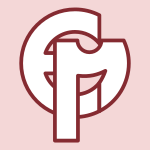 PDP-2012-FlorioB #algorithm #robust
PDP-2012-FlorioB #algorithm #robust- Robust and Tuneable Family of Gossiping Algorithms (VDF, CB), pp. 154–161.
 FASE-2012-RubinC
FASE-2012-RubinC - Combining Related Products into Product Lines (JR, MC), pp. 285–300.
 FASE-2012-ShiCD #composition #execution #integration #symbolic computation #testing #using
FASE-2012-ShiCD #composition #execution #integration #symbolic computation #testing #using- Integration Testing of Software Product Lines Using Compositional Symbolic Execution (JS, MBC, MBD), pp. 270–284.
 ICST-2012-DevineGKLL #empirical #fault #industrial
ICST-2012-DevineGKLL #empirical #fault #industrial- An Empirical Study of Pre-release Software Faults in an Industrial Product Line (TRD, KGP, SK, RRL, JJL), pp. 181–190.
 ICST-2012-RunesonE #3d #problem #testing
ICST-2012-RunesonE #3d #problem #testing- Software Product Line Testing — A 3D Regression Testing Problem (PR, EE), pp. 742–746.
 ICTSS-2012-JohansenHFCEW #agile #automation #interactive #testing
ICTSS-2012-JohansenHFCEW #agile #automation #interactive #testing- A Technique for Agile and Automatic Interaction Testing for Product Lines (MFJ, ØH, FF, EC, JE, TW), pp. 39–54.
 TAP-2012-LochauSKL #incremental #modelling #testing
TAP-2012-LochauSKL #incremental #modelling #testing- Incremental Model-Based Testing of Delta-Oriented Software Product Lines (ML, IS, JK, SL), pp. 67–82.
 ECSA-2011-BarbosaBGS #architecture #aspect-oriented #named
ECSA-2011-BarbosaBGS #architecture #aspect-oriented #named- PL-AspectualACME: An Aspect-Oriented Architectural Description Language for Software Product Lines (EAB, TVB, AFG, ES), pp. 139–146.
 ECSA-2011-DiazPGW #architecture #impact analysis
ECSA-2011-DiazPGW #architecture #impact analysis- Change Impact Analysis in Product-Line Architectures (JD, JP, JG, ALW), pp. 114–129.
 ECSA-2011-JrCCGOFMG #architecture #component #lessons learnt #uml
ECSA-2011-JrCCGOFMG #architecture #component #lessons learnt #uml- Extending UML Components to Develop Software Product-Line Architectures: Lessons Learned (ACCJ, GGC, TEC, IMdSG, EAOJ, SF, PCM, AFG), pp. 130–138.
 ECSA-2011-NakagawaAB #architecture #difference
ECSA-2011-NakagawaAB #architecture #difference- Reference Architecture and Product Line Architecture: A Subtle But Critical Difference (EYN, POA, MB), pp. 207–211.
 ECSA-2011-TizzeiR #architecture #case study #comparative #component #evolution
ECSA-2011-TizzeiR #architecture #case study #comparative #component #evolution- Aspect-Connectors to Support the Evolution of Component-Based Product Line Architectures: A Comparative Study (LPT, CMFR), pp. 59–66.
 QoSA-ISARCS-2011-KavimandanGKG #architecture #model transformation #quality #reuse
QoSA-ISARCS-2011-KavimandanGKG #architecture #model transformation #quality #reuse- Managing the quality of software product line architectures through reusable model transformations (AK, ASG, GK, JG), pp. 13–22.
 WICSA-2011-CoelhoB #architecture #requirements
WICSA-2011-CoelhoB #architecture #requirements- From Requirements to Architecture for Software Product Lines (KC, TVB), pp. 282–289.
 WICSA-2011-MichalikW #impact analysis #towards
WICSA-2011-MichalikW #impact analysis #towards- Towards a Solution for Change Impact Analysis of Software Product Line Products (BM, DW), pp. 290–293.
 WICSA-2011-WeynsMHB #approach #architecture #online
WICSA-2011-WeynsMHB #approach #architecture #online- An Architectural Approach to Support Online Updates of Software Product Lines (DW, BM, AH, NB), pp. 204–213.
 CSMR-2011-CoutoVF #case study #compilation #using
CSMR-2011-CoutoVF #case study #compilation #using- Extracting Software Product Lines: A Case Study Using Conditional Compilation (MVC, MTV, EF), pp. 191–200.
 ICSM-2011-ZhangSPXZ #case study #incremental #industrial #re-engineering #towards
ICSM-2011-ZhangSPXZ #case study #incremental #industrial #re-engineering #towards- Incremental and iterative reengineering towards Software Product Line: An industrial case study (GZ, LS, XP, ZX, WZ), pp. 418–427.
 MSR-2011-KrishnanLG #empirical #evaluation #evolution #reliability
MSR-2011-KrishnanLG #empirical #evaluation #evolution #reliability- Empirical evaluation of reliability improvement in an evolving software product line (SK, RRL, KGP), pp. 103–112.
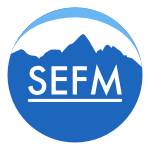 SEFM-2011-MuscheviciPC #composition #modelling
SEFM-2011-MuscheviciPC #composition #modelling- Modular Modelling of Software Product Lines with Feature Nets (RM, JP, DC), pp. 318–333.
 CHI-2011-DavidoffZZD #coordination #learning
CHI-2011-DavidoffZZD #coordination #learning- Learning patterns of pick-ups and drop-offs to support busy family coordination (SD, BDZ, JZ, AKD), pp. 1175–1184.
 CHI-2011-JudgeNHB #multi
CHI-2011-JudgeNHB #multi- Family portals: connecting families through a multifamily media space (TKJ, CN, SH, ACB), pp. 1205–1214.
 CHI-2011-ManciniRTJPBJN
CHI-2011-ManciniRTJPBJN - In the best families: tracking and relationships (CM, YR, KT, ANJ, BAP, AKB, LJ, BN), pp. 2419–2428.
 CHI-2011-RaffleRMBBHKCFGS #chat #exclamation #video
CHI-2011-RaffleRMBBHKCFGS #chat #exclamation #video- Hello, is grandma there? let’s read! StoryVisit: family video chat and connected e-books (HR, GR, KM, RB, KB, HH, JK, KC, NF, JG, MS), pp. 1195–1204.
 CHI-2011-YaroshA
CHI-2011-YaroshA - Mediated parent-child contact in work-separated families (SY, GDA), pp. 1185–1194.
 CSCW-2011-GuibourdencheVGFH #distributed #multi #process #using
CSCW-2011-GuibourdencheVGFH #distributed #multi #process #using- Using multiple scores for transcribing the distributed activities of a family (JG, JVR, MG, MF, YH), pp. 637–640.
 HIMI-v2-2011-KinoeN #communication #design
HIMI-v2-2011-KinoeN #communication #design- Designing Peripheral Communication Services for Families Living-Apart: Elderly Persons and Family (YK, MN), pp. 147–156.
 HIMI-v2-2011-YuCW #communication #framework #interactive #named #platform #problem
HIMI-v2-2011-YuCW #communication #framework #interactive #named #platform #problem- SAM: A Spatial Interactive Platform for Studying Family Communication Problem (GJY, TWC, YCW), pp. 207–216.
 OCSC-2011-TixierL #design #evaluation #online #social
OCSC-2011-TixierL #design #evaluation #online #social- Design and Evaluation of an Online Social Support Application for Family Caregivers (MT, ML), pp. 267–276.
 CAiSE-2011-GronerWBPWHGS #process #validation
CAiSE-2011-GronerWBPWHGS #process #validation- Validation of Families of Business Processes (GG, CW, MB, FSP, TW, FH, DG, SS), pp. 551–565.
 ICEIS-J-2011-MateoPC11a #modelling #testing
ICEIS-J-2011-MateoPC11a #modelling #testing- Model Based Testing in Software Product Lines (PRM, MP, DC), pp. 270–283.
 ICEIS-v3-2011-MateoPC #approach #modelling #testing
ICEIS-v3-2011-MateoPC #approach #modelling #testing- Testing in Software Product Lines — A Model based Approach (PRM, MP, DC), pp. 46–54.
 SEKE-2011-BalbinoAM #agile #process
SEKE-2011-BalbinoAM #agile #process- An Agile Scoping Process for Software Product Lines (MB, ESdA, SRdLM), pp. 717–722.
 SEKE-2011-JuniorGM #analysis #architecture #trade-off
SEKE-2011-JuniorGM #analysis #architecture #trade-off- A Meta-Process to Support Trade-Off Analysis in Software Product Line Architecture (EAdOJ, IMdSG, JCM), pp. 687–692.
 SEKE-2011-MachadoNAM #named #process #testing
SEKE-2011-MachadoNAM #named #process #testing- RiPLE-TE: A Process for Testing Software Product Lines (IdCM, PAdMSN, ESdA, SRdLM), pp. 711–716.
 SEKE-2011-NetoMNAM #testing
SEKE-2011-NetoMNAM #testing- Software Product Lines System Test Case Tool: A Proposal (CRLN, IdCM, PAdMSN, ESdA, SRdLM), pp. 699–704.
 SEKE-2011-ZaatarHH #approach #identification #implementation
SEKE-2011-ZaatarHH #approach #identification #implementation- An Approach for Identifying and Implementing Aspectual Features inSoftware Product Lines (MAZ, HSH, AEFH), pp. 722–728.
 MoDELS-2011-CichosOLS #generative #modelling #testing
MoDELS-2011-CichosOLS #generative #modelling #testing- Model-Based Coverage-Driven Test Suite Generation for Software Product Lines (HC, SO, ML, AS), pp. 425–439.
 MoDELS-2011-JohansenHF #combinator #feature model #modelling #testing
MoDELS-2011-JohansenHF #combinator #feature model #modelling #testing- Properties of Realistic Feature Models Make Combinatorial Testing of Product Lines Feasible (MFJ, ØH, FF), pp. 638–652.
 PLEASE-2011-AsirelliBFGM #design #validation #variability
PLEASE-2011-AsirelliBFGM #design #validation #variability- Design and validation of variability in product lines (PA, MHtB, AF, SG, FM), pp. 25–30.
 PLEASE-2011-GurgelDG #case study #integration #on-demand #reuse
PLEASE-2011-GurgelDG #case study #integration #on-demand #reuse- On-demand integration of product lines: a study of reuse and stability (ACG, FD, AFG), pp. 35–39.
 PLEASE-2011-Li #evolution #identification
PLEASE-2011-Li #evolution #identification- Identifying best practice by analyzing the evolution of the FISCAN MTMSIS software product line (DL), pp. 40–44.
 PLEASE-2011-Livengood #evolution #modelling #variability
PLEASE-2011-Livengood #evolution #modelling #variability- Issues in software product line evolution: complex changes in variability models (SL), pp. 6–9.
 PLEASE-2011-MichalikWB #evolution #on the #problem
PLEASE-2011-MichalikWB #evolution #on the #problem- On the problems with evolving Egemin’s software product line (BM, DW, WVB), pp. 15–19.
 PLEASE-2011-RosaL #component #composition #mobile #reuse
PLEASE-2011-RosaL #component #composition #mobile #reuse- Smart composition of reusable software components in mobile application product lines (REVDSR, VFdLJ), pp. 45–49.
 PLEASE-2011-SiyWZ #generative #modelling #ontology
PLEASE-2011-SiyWZ #generative #modelling #ontology- Ontology-based product line modeling and generation (HPS, AW, MZ), pp. 50–54.
 PLEASE-2011-StallingerNSK #challenge #evolution #industrial #migration #towards
PLEASE-2011-StallingerNSK #challenge #evolution #industrial #migration #towards- Migrating towards evolving software product lines: challenges of an SME in a core customer-driven industrial systems engineering context (FS, RN, RS, SK), pp. 20–24.
 PLEASE-2011-ThaoM #evolution #flexibility
PLEASE-2011-ThaoM #evolution #flexibility- Flexible support for managing evolving software product lines (CT, EVM), pp. 60–64.
 SPLC-2011-Abu-MatarG #architecture #modelling #variability
SPLC-2011-Abu-MatarG #architecture #modelling #variability- Variability Modeling for Service Oriented Product Line Architectures (MAM, HG), pp. 110–119.
 SPLC-2011-Achatz #case study #challenge #experience #industrial
SPLC-2011-Achatz #case study #challenge #experience #industrial- Product Line Engineering at Siemens — Challenges and Success Factors: A Report on Industrial Experiences in Product Line Engineering (RA), pp. 10–11.
 SPLC-2011-AlferezP #web #web service
SPLC-2011-AlferezP #web #web service- Context-Aware Autonomous Web Services in Software Product Lines (GHA, VP), pp. 100–109.
 SPLC-2011-AsirelliBGF #variability
SPLC-2011-AsirelliBGF #variability- Formal Description of Variability in Product Families (PA, MHtB, SG, AF), pp. 130–139.
 SPLC-2011-BartholdtB #re-engineering
SPLC-2011-BartholdtB #re-engineering- Re-engineering of a Hierarchical Product Line (JB, DB), pp. 232–240.
 SPLC-2011-Beuche11a #legacy
SPLC-2011-Beuche11a #legacy- Transforming Legacy Systems into Software Product Lines (DB), p. 361.
 SPLC-2011-Beuche11b #requirements
SPLC-2011-Beuche11b #requirements- Managing Requirements in Product Lines (DB), p. 362.
 SPLC-2011-Broy11a #requirements #specification
SPLC-2011-Broy11a #requirements #specification- The Role of Requirements and Specification in Product Line Engineering (MB), pp. 3–7.
 SPLC-2011-BuschmannS #case study #experience
SPLC-2011-BuschmannS #case study #experience- Successful Product Line Engineering: Experiences from the Real World (FB, CS), p. 349.
 SPLC-2011-ChastekDMM
SPLC-2011-ChastekDMM - Engineering a Production Method for a Software Product Line (GJC, PD, JDM, DM), pp. 277–286.
 SPLC-2011-ChastekM
SPLC-2011-ChastekM - Production Planning in a Software Product Line Organization (GJC, JDM), p. 355.
 SPLC-2011-DaoLK #approach #problem #quality
SPLC-2011-DaoLK #approach #problem #quality- Problem Frames-Based Approach to Achieving Quality Attributes in Software Product Line Engineering (TMD, HL, KCK), pp. 175–180.
 SPLC-2011-DhunganaSBRGBG #modelling #multi #variability
SPLC-2011-DhunganaSBRGBG #modelling #multi #variability- Configuration of Multi Product Lines by Bridging Heterogeneous Variability Modeling Approaches (DD, DS, GB, RR, PG, DB, JAG), pp. 120–129.
 SPLC-2011-Donohoe
SPLC-2011-Donohoe - Introduction to Software Product Lines (PD), p. 350.
 SPLC-2011-DordowskyBT #implementation
SPLC-2011-DordowskyBT #implementation- Implementing a Software Product Line for a Complex Avionics System (FD, RB, HT), pp. 241–250.
 SPLC-2011-GhezziS #approach #model checking #non-functional #parametricity #performance #towards #using #verification
SPLC-2011-GhezziS #approach #model checking #non-functional #parametricity #performance #towards #using #verification- Verifying Non-functional Properties of Software Product Lines: Towards an Efficient Approach Using Parametric Model Checking (CG, AMS), pp. 170–174.
 SPLC-2011-Hinchey
SPLC-2011-Hinchey - Families (of Products) in Space (MH), pp. 8–9.
 SPLC-2011-HutchessonM #effectiveness #towards
SPLC-2011-HutchessonM #effectiveness #towards- Towards Cost-Effective High-Assurance Software Product Lines: The Need for Property-Preserving Transformations (SH, JAM), pp. 55–64.
 SPLC-2011-KatoY #cumulative #feature model #interactive
SPLC-2011-KatoY #cumulative #feature model #interactive- Variation Management for Software Product Lines with Cumulative Coverage of Feature Interactions (SK, NY), pp. 140–149.
 SPLC-2011-Krueger #industrial #roadmap
SPLC-2011-Krueger #industrial #roadmap- Industry Trends in Systems and Software Product Line Engineering (CWK), p. 360.
 SPLC-2011-LiW #evolution
SPLC-2011-LiW #evolution- Adding Value through Software Product Line Engineering: The Evolution of the FISCAN Software Product Lines (DL, DMW), pp. 213–222.
 SPLC-2011-McGregorM
SPLC-2011-McGregorM - Management and Operation of a Software Product Line (JDM, DM), p. 354.
 SPLC-2011-Muller #optimisation
SPLC-2011-Muller #optimisation- Value-Based Portfolio Optimization for Software Product Lines (JM), pp. 15–24.
 SPLC-2011-NolanACMC #cost analysis #integration #quality #towards
SPLC-2011-NolanACMC #cost analysis #integration #quality #towards- Towards the Integration of Quality Attributes into a Software Product Line Cost Model (AJN, SA, PCC, JDM, SC), pp. 203–212.
 SPLC-2011-NolanACP #nondeterminism #requirements
SPLC-2011-NolanACP #nondeterminism #requirements- Requirements Uncertainty in a Software Product Line (AJN, SA, PCC, AP), pp. 223–231.
 SPLC-2011-NorthropJ
SPLC-2011-NorthropJ - Introduction to Software Product Lines Adoption (LMN, LGJ), p. 359.
 SPLC-2011-Pohjalainen #agile #bottom-up #case study #experience #mobile #modelling #network
SPLC-2011-Pohjalainen #agile #bottom-up #case study #experience #mobile #modelling #network- Bottom-up Modeling for a Software Product Line: An Experience Report on Agile Modeling of Governmental Mobile Networks (PP), pp. 323–332.
 SPLC-2011-QuiltyC #case study #development #experience #risk management
SPLC-2011-QuiltyC #case study #development #experience #risk management- Experiences with Software Product Line Development in Risk Management Software (GQ, MÓC), pp. 251–260.
 SPLC-2011-SiegmundRKGAK #non-functional #predict #scalability
SPLC-2011-SiegmundRKGAK #non-functional #predict #scalability- Scalable Prediction of Non-functional Properties in Software Product Lines (NS, MR, CK, PGG, SA, SSK), pp. 160–169.
 SPLC-2011-SinhaDR #development #multi #performance #reduction #scalability #testing
SPLC-2011-SinhaDR #development #multi #performance #reduction #scalability #testing- Governance and Cost Reduction through Multi-tier Preventive Performance Tests in a Large-Scale Product Line Development (SS, TD, RR), pp. 295–302.
 SPLC-2011-TawhidP #automation #performance
SPLC-2011-TawhidP #automation #performance- Automatic Derivation of a Product Performance Model from a Software Product Line Model (RT, DCP), pp. 80–89.
 SPLC-2011-TischerMMK #case study #experience #scalability
SPLC-2011-TischerMMK #case study #experience #scalability- Experiences from a Large Scale Software Product Line Merger in the Automotive Domain (CT, AM, TM, RK), pp. 267–276.
 SPLC-2011-TolvanenK #domain-specific language #modelling
SPLC-2011-TolvanenK #domain-specific language #modelling- Creating Domain-Specific Modeling Languages for Product Lines (JPT, SK), p. 358.
 SPLC-2011-TraskR #architecture #modelling
SPLC-2011-TraskR #architecture #modelling- Leveraging Model Driven Engineering in Software Product Line Architectures (BT, AR), pp. 356–357.
 SPLC-2011-VierhauserHRGLS #deployment #framework #modelling #tool support
SPLC-2011-VierhauserHRGLS #deployment #framework #modelling #tool support- A Deployment Infrastructure for Product Line Models and Tools (MV, GH, RR, PG, ML, US), pp. 287–294.
 SPLC-2011-Volter #case study #domain-specific language #experience #tool support
SPLC-2011-Volter #case study #domain-specific language #experience #tool support- DSLs for Product Lines: Approaches, Tools, Experiences (MV), p. 353.
 SPLC-2011-VolterV #domain-specific language #using
SPLC-2011-VolterV #domain-specific language #using- Product Line Engineering Using Domain-Specific Languages (MV, EV), pp. 70–79.
 SPLC-2011-YoshimuraSOOAKWF #experience #multi #process
SPLC-2011-YoshimuraSOOAKWF #experience #multi #process- Key Activities for Introducing Software Product Lines into Multiple Divisions: Experience at Hitachi (KY, JS, TO, CO, YA, SK, SW, KF), pp. 261–266.
 SPLC-2011-ZhangHM #comparison #difference #modelling
SPLC-2011-ZhangHM #comparison #difference #modelling- Model Comparison to Synthesize a Model-Driven Software Product Line (XZ, ØH, BMP), pp. 90–99.
 OOPSLA-2011-DelawareCB #theorem
OOPSLA-2011-DelawareCB #theorem- Product lines of theorems (BD, WRC, DSB), pp. 595–608.
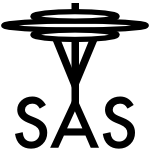 SAS-2011-MightH #abstract interpretation #concurrent #higher-order #source code #static analysis
SAS-2011-MightH #abstract interpretation #concurrent #higher-order #source code #static analysis- A Family of Abstract Interpretations for Static Analysis of Concurrent Higher-Order Programs (MM, DVH), pp. 180–197.
 REFSQ-2011-DhunganaSG #elicitation #modelling #requirements #research #using #variability
REFSQ-2011-DhunganaSG #elicitation #modelling #requirements #research #using #variability- Research Preview: Supporting End-User Requirements Elicitation Using Product Line Variability Models (DD, NS, FG), pp. 66–71.
 ESEC-FSE-2011-CafeoNFCR
ESEC-FSE-2011-CafeoNFCR - Inferring test results for dynamic software product lines (BBPC, JN, FCF, RC, AR), pp. 500–503.
 ICSE-2011-ApelB #case study
ICSE-2011-ApelB #case study- Feature cohesion in software product lines: an exploratory study (SA, DB), pp. 421–430.
 ICSE-2011-ClassenHSL #model checking
ICSE-2011-ClassenHSL #model checking- Symbolic model checking of software product lines (AC, PH, PYS, AL), pp. 321–330.
 ICSE-2011-Xue #analysis #automation #legacy #re-engineering #variability
ICSE-2011-Xue #analysis #automation #legacy #re-engineering #variability- Reengineering legacy software products into software product line based on automatic variability analysis (YX), pp. 1114–1117.
 SAC-2011-AsadiBGHM
SAC-2011-AsadiBGHM - Goal-driven software product line engineering (MA, EB, DG, MH, BM), pp. 691–698.
 SAC-2011-MohabbatiHGAB #development
SAC-2011-MohabbatiHGAB #development- Development and configuration of service-oriented systems families (BM, MH, DG, MA, MB), pp. 1606–1613.
 SAC-2011-VarelaABM #analysis #aspect-oriented #requirements
SAC-2011-VarelaABM #analysis #aspect-oriented #requirements- Aspect-oriented analysis for software product lines requirements engineering (PV, JA, ISB, AMDM), pp. 667–674.
 GPCE-2011-NevesTSAKB #evolution
GPCE-2011-NevesTSAKB #evolution- Investigating the safe evolution of software product lines (LN, LT, DS, VA, UK, PB), pp. 33–42.
 GPCE-2011-RibeiroQBTBS #dependence #maintenance #on the
GPCE-2011-RibeiroQBTBS #dependence #maintenance #on the- On the impact of feature dependencies when maintaining preprocessor-based software product lines (MR, FQ, PB, TT, CB, SS), pp. 23–32.
 GPCE-2011-RosenmullerSPA
GPCE-2011-RosenmullerSPA - Tailoring dynamic software product lines (MR, NS, MP, SA), pp. 3–12.
 ECSA-2010-Lopez-HerrejonE #architecture #on the
ECSA-2010-Lopez-HerrejonE #architecture #on the- On the Need of Safe Software Product Line Architectures (RELH, AE), pp. 493–496.
 ECSA-2010-SaraivaPBDPKAFMS #architecture #aspect-oriented #experience #middleware #modelling #refactoring
ECSA-2010-SaraivaPBDPKAFMS #architecture #aspect-oriented #experience #middleware #modelling #refactoring- Architecting a Model-Driven Aspect-Oriented Product Line for a Digital TV Middleware: A Refactoring Experience (DS, LP, TVB, FCD, PFP, UK, RPMdA, TF, SMF, ALSS), pp. 166–181.
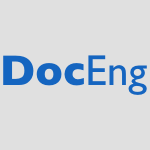 DocEng-2010-KarolHHA #documentation #feature model #modelling #using
DocEng-2010-KarolHHA #documentation #feature model #modelling #using- Using feature models for creating families of documents (SK, MH, FH, UA), pp. 259–262.
 DocEng-2010-PenadesCBL #documentation #generative #variability
DocEng-2010-PenadesCBL #documentation #generative #variability- Document product lines: variability-driven document generation (MdCP, JHC, MRSB, ML), pp. 203–206.
 ITiCSE-2010-HauptHPGMBHKK #education #research #virtual machine
ITiCSE-2010-HauptHPGMBHKK #education #research #virtual machine- The SOM family: virtual machines for teaching and research (MH, RH, TP, GG, SM, AB, AH, MK, RK), pp. 18–22.
 ICPC-2010-FeigenspanKFDA #comprehension #visual notation
ICPC-2010-FeigenspanKFDA #comprehension #visual notation- Visual Support for Understanding Product Lines (JF, CK, MF, RD, SA), pp. 34–35.
 ICSM-2010-NunesGL
ICSM-2010-NunesGL - History-sensitive recovery of product line features (CN, AG, CJPdL), pp. 1–2.
 WCRE-2010-XueXJ #comprehension #evolution
WCRE-2010-XueXJ #comprehension #evolution- Understanding Feature Evolution in a Family of Product Variants (YX, ZX, SJ), pp. 109–118.
 CIAA-2010-CastiglioneNS #algorithm #automaton
CIAA-2010-CastiglioneNS #algorithm #automaton- A Challenging Family of Automata for Classical Minimization Algorithms (GC, CN, MS), pp. 251–260.
 CHI-2010-DavidoffZD #coordination #how
CHI-2010-DavidoffZD #coordination #how- How routine learners can support family coordination (SD, JZ, AKD), pp. 2461–2470.
 CHI-2010-JudgeNK #design #evaluation
CHI-2010-JudgeNK #design #evaluation- The family window: the design and evaluation of a domestic media space (TKJ, CN, AFK), pp. 2361–2370.
 CHI-2010-MassimiB #design
CHI-2010-MassimiB #design- A death in the family: opportunities for designing technologies for the bereaved (MM, RMB), pp. 1821–1830.
 CHI-2010-PetrelliVKDW
CHI-2010-PetrelliVKDW - FM radio: family interplay with sonic mementos (DP, NV, VK, LD, SW), pp. 2371–2380.
 CHI-2010-RaffleBRHFGRMKS #distance #game studies
CHI-2010-RaffleBRHFGRMKS #distance #game studies- Family story play: reading with young children (and elmo) over a distance (HR, RB, GR, HH, SF, JG, ER, KM, JK, MS), pp. 1583–1592.
 CSCW-2010-AmesGKS #network
CSCW-2010-AmesGKS #network- Making love in the network closet: the benefits and work of family videochat (MGA, JG, JK, MS), pp. 145–154.
 CSCW-2010-CaoSBKED #communication #comprehension
CSCW-2010-CaoSBKED #communication #comprehension- Understanding family communication across time zones (XC, AS, AJBB, DSK, DE, XD), pp. 155–158.
 CSCW-2010-DibPW
CSCW-2010-DibPW - Sonic souvenirs: exploring the paradoxes of recorded sound for family remembering (LD, DP, SW), pp. 391–400.
 CSCW-2010-KirkISTBH
CSCW-2010-KirkISTBH - Opening up the family archive (DSK, SI, AS, ST, RB, OH), pp. 261–270.
 KR-2010-PenalozaS #axiom #complexity #logic #on the
KR-2010-PenalozaS #axiom #complexity #logic #on the- On the Complexity of Axiom Pinpointing in the EL Family of Description Logics (RP, BS).
 SEKE-2010-RodriguesVZ #automation #modelling #testing #using
SEKE-2010-RodriguesVZ #automation #modelling #testing #using- PLeTs-Test Automation using Software Product Lines and Model Based Testing (EdMR, LDV, AFZ), pp. 483–488.
 MoDELS-v1-2010-GuerraLKPS #model transformation #named
MoDELS-v1-2010-GuerraLKPS #model transformation #named- transML: A Family of Languages to Model Model Transformations (EG, JdL, DSK, RFP, OMdS), pp. 106–120.
 PLEASE-2010-BotterweckPDPK #evolution #named
PLEASE-2010-BotterweckPDPK #evolution #named- EvoFM: feature-driven planning of product-line evolution (GB, AP, DD, AP, SK), pp. 24–31.
 PLEASE-2010-EstublierDL #evolution
PLEASE-2010-EstublierDL #evolution- Software product line evolution: the Selecta system (JE, IAD, TL), pp. 32–39.
 PLEASE-2010-Hanssen
PLEASE-2010-Hanssen - Opening up software product line engineering (GKH), pp. 1–7.
 PLEASE-2010-MamanB #graph #named #towards
PLEASE-2010-MamanB #graph #named #towards- SPLGraph: towards a graph-based formalism for software product lines (IM, GB), pp. 40–47.
 SPLC-2010-BagheriNRG #configuration management #feature model #modelling #requirements
SPLC-2010-BagheriNRG #configuration management #feature model #modelling #requirements- Configuring Software Product Line Feature Models Based on Stakeholders’ Soft and Hard Requirements (EB, TDN, AR, DG), pp. 16–31.
 SPLC-2010-BelategiSE #embedded #variability
SPLC-2010-BelategiSE #embedded #variability- MARTE Mechanisms to Model Variability When Analyzing Embedded Software Product Lines (LB, GS, LE), pp. 466–470.
 SPLC-2010-BergerSLCW #scalability
SPLC-2010-BergerSLCW #scalability- Feature-to-Code Mapping in Two Large Product Lines (TB, SS, RL, KC, AW), pp. 498–499.
 SPLC-2010-Beuche #legacy
SPLC-2010-Beuche #legacy- Transforming Legacy Systems into Software Product Lines (DB), pp. 509–510.
 SPLC-2010-BeucheJ #requirements
SPLC-2010-BeucheJ #requirements- Managing Requirements in Product Lines (DB, IJ), pp. 513–514.
 SPLC-2010-CabralCR #testing
SPLC-2010-CabralCR #testing- Improving the Testing and Testability of Software Product Lines (IC, MBC, GR), pp. 241–255.
 SPLC-2010-CetinaGFP #design #guidelines #prototype
SPLC-2010-CetinaGFP #design #guidelines #prototype- Designing and Prototyping Dynamic Software Product Lines: Techniques and Guidelines (CC, PG, JF, VP), pp. 331–345.
 SPLC-2010-ChenB #challenge #industrial #variability
SPLC-2010-ChenB #challenge #industrial #variability- Variability Management in Software Product Lines: An Investigation of Contemporary Industrial Challenges (LC, MAB), pp. 166–180.
 SPLC-2010-ClementsMB #architecture #elicitation
SPLC-2010-ClementsMB #architecture #elicitation- Eliciting and Capturing Business Goals to Inform a Product Line’s Business Case and Architecture (PCC, JDM, LB), pp. 393–405.
 SPLC-2010-ElsnerULS #bound #consistency
SPLC-2010-ElsnerULS #bound #consistency- Consistent Product Line Configuration across File Type and Product Line Boundaries (CE, PU, DL, WSP), pp. 181–195.
 SPLC-2010-FurtadoSR #analysis #game studies
SPLC-2010-FurtadoSR #analysis #game studies- Streamlining Domain Analysis for Digital Games Product Lines (AWBF, ALMS, GLR), pp. 316–330.
 SPLC-2010-GadelhaCGCFL #approach #component #using
SPLC-2010-GadelhaCGCFL #approach #component #using- An Approach for Developing Component-Based Groupware Product Lines Using the Groupware Workbench (BG, EC, MAG, AC, HF, CJPdL), pp. 446–450.
 SPLC-2010-GanesanLMBSM #architecture #testing
SPLC-2010-GanesanLMBSM #architecture #testing- Architecture-Based Unit Testing of the Flight Software Product Line (DG, ML, DM, MB, SS, BM), pp. 256–270.
 SPLC-2010-GustavssonE #architecture #industrial
SPLC-2010-GustavssonE #architecture #industrial- Architecting Automotive Product Lines: Industrial Practice (HG, UE), pp. 92–105.
 SPLC-2010-Jarzabek #variability
SPLC-2010-Jarzabek #variability- Pragmatic Strategies for Variability Management in Product Lines in Small- to Medium-Size Companies (SJ), pp. 503–504.
 SPLC-2010-JohnSA #architecture
SPLC-2010-JohnSA #architecture- The Rise and Fall of Product Line Architectures (IJ, CS, ESdA), pp. 500–501.
 SPLC-2010-JohnV
SPLC-2010-JohnV - Evolutionary Product Line Scoping (IJ, KV), pp. 515–516.
 SPLC-2010-JonesN #case study #experience
SPLC-2010-JonesN #case study #experience- Recent Experiences with Software Product Lines in the US Department of Defense (LGJ, LMN), pp. 486–490.
 SPLC-2010-Kim #case study
SPLC-2010-Kim #case study- Case Study of Software Product Line Engineering in Insurance Product (JAK), p. 495.
 SPLC-2010-Krueger #framework #lifecycle
SPLC-2010-Krueger #framework #lifecycle- Systems and Software Product Line Engineering with the SPL Lifecycle Framework (CWK), pp. 511–512.
 SPLC-2010-LinYT #approach #performance
SPLC-2010-LinYT #approach #performance- An Approach to Efficient Product Configuration in Software Product Lines (YL, HY, JT), pp. 435–439.
 SPLC-2010-LutzWKY
SPLC-2010-LutzWKY - Software Product Line Engineering for Long-Lived, Sustainable Systems (RRL, DMW, SK, JY), pp. 430–434.
 SPLC-2010-MannionS
SPLC-2010-MannionS - Aligning Business and Technical Strategies for Software Product Lines (MM, JS), pp. 406–419.
 SPLC-2010-MarinhoLFRMADVAT #mobile
SPLC-2010-MarinhoLFRMADVAT #mobile- A Software Product Line for the Mobile and Context-Aware Applications Domain (FGM, FL, JBFF, LSR, MEFM, SBdA, VLLD, WV, RMCA, ET), pp. 346–360.
 SPLC-2010-McGregor10a #reuse #testing
SPLC-2010-McGregor10a #reuse #testing- Building Reusable Testing Assets for a Software Product Line (JDM), pp. 505–506.
 SPLC-2010-McGregor10b
SPLC-2010-McGregor10b - Production Planning in a Software Product Line Organization (JDM), pp. 507–508.
 SPLC-2010-MedeirosAM #approach #architecture #design #named
SPLC-2010-MedeirosAM #approach #architecture #design #named- SOPLE-DE: An Approach to Design Service-Oriented Product Line Architectures (FMM, ESdA, SRLM), pp. 456–460.
 SPLC-2010-NolanA #case study #estimation #experience
SPLC-2010-NolanA #case study #estimation #experience- Dealing with Cost Estimation in Software Product Lines: Experiences and Future Directions (AJN, SA), pp. 121–135.
 SPLC-2010-Northrop
SPLC-2010-Northrop - Introduction to Software Product Lines (LMN), pp. 521–522.
 SPLC-2010-NorthropJ
SPLC-2010-NorthropJ - Introduction to Software Product Lines Adoption (LMN, LGJ), pp. 519–520.
 SPLC-2010-OsterMR #automation #incremental #testing
SPLC-2010-OsterMR #automation #incremental #testing- Automated Incremental Pairwise Testing of Software Product Lines (SO, FM, PR), pp. 196–210.
 SPLC-2010-RabiserHELGS #approach #documentation #flexibility #generative
SPLC-2010-RabiserHELGS #approach #documentation #flexibility #generative- A Flexible Approach for Generating Product-Specific Documents in Product Lines (RR, WH, CE, ML, PG, CS), pp. 47–61.
 SPLC-2010-SchaeferBBDT #programming
SPLC-2010-SchaeferBBDT #programming- Delta-Oriented Programming of Software Product Lines (IS, LB, VB, FD, NT), pp. 77–91.
 SPLC-2010-SvendsenZLFHMO #case study
SPLC-2010-SvendsenZLFHMO #case study- Developing a Software Product Line for Train Control: A Case Study of CVL (AS, XZ, RLT, FF, ØH, BMP, GKO), pp. 106–120.
 SPLC-2010-TekinerdoganTS #approach #classification #multi
SPLC-2010-TekinerdoganTS #approach #classification #multi- Multidimensional Classification Approach for Defining Product Line Engineering Transition Strategies (BT, ET, ES), pp. 461–465.
 SPLC-2010-TraskR #architecture #modelling
SPLC-2010-TraskR #architecture #modelling- Leveraging Model Driven Engineering in Software Product Line Architectures (BT, AR), pp. 517–518.
 SPLC-2010-UbayashiNH #embedded #reliability
SPLC-2010-UbayashiNH #embedded #reliability- Context-Dependent Product Line Practice for Constructing Reliable Embedded Systems (NU, SN, MH), pp. 1–15.
 SPLC-2010-ZhouJZZ #enterprise
SPLC-2010-ZhouJZZ #enterprise- Product Line Engineering in Enterprise Applications (JZ, YJ, DZ, XZ), p. 494.
 OOPSLA-2010-QiM
OOPSLA-2010-QiM - Homogeneous family sharing (XQ, ACM), pp. 520–538.
 RE-2010-StoiberFJG #refactoring #requirements #specification #weaving
RE-2010-StoiberFJG #refactoring #requirements #specification #weaving- Feature Unweaving: Refactoring Software Requirements Specifications into Software Product Lines (RS, SF, MJ, MG), pp. 403–404.
 REFSQ-2010-BittnerRW #case study #multi #requirements
REFSQ-2010-BittnerRW #case study #multi #requirements- A Case Study on Tool-Supported Multi-level Requirements Management in Complex Product Families (MB, MOR, MW), pp. 173–187.
 REFSQ-2010-VillelaDJ #evaluation #evolution
REFSQ-2010-VillelaDJ #evaluation #evolution- Evaluation of a Method for Proactively Managing the Evolving Scope of a Software Product Line (KV, JD, IJ), pp. 113–127.
 ASE-2010-BoucherCHBD #approach #implementation
ASE-2010-BoucherCHBD #approach #implementation- Tag and prune: a pragmatic approach to software product line implementation (QB, AC, PH, AB, LD), pp. 333–336.
 ASE-2010-KimBK
ASE-2010-KimBK - Eliminating products to test in a software product line (CHPK, DSB, SK), pp. 139–142.
 ASE-2010-VierhauserGERH #consistency #flexibility #modelling #scalability #variability
ASE-2010-VierhauserGERH #consistency #flexibility #modelling #scalability #variability- Flexible and scalable consistency checking on product line variability models (MV, PG, AE, RR, WH), pp. 63–72.
 FSE-2010-RamasubbuB #case study #evolution
FSE-2010-RamasubbuB #case study #evolution- Evolution of a bluetooth test application product line: a case study (NR, RKB), pp. 107–116.
 ICSE-2010-ClassenHSLR #model checking #performance #verification
ICSE-2010-ClassenHSLR #model checking #performance #verification- Model checking lots of systems: efficient verification of temporal properties in software product lines (AC, PH, PYS, AL, JFR), pp. 335–344.
 ICSE-2010-LiebigALKS #analysis #variability
ICSE-2010-LiebigALKS #analysis #variability- An analysis of the variability in forty preprocessor-based software product lines (JL, SA, CL, CK, MS), pp. 105–114.
 ICSE-2010-Marinho #consistency #modelling #ocl #using
ICSE-2010-Marinho #consistency #modelling #ocl #using- A proposal for consistency checking in dynamic software product line models using OCL (FGM), pp. 333–334.
 ICSE-2010-Zhang
ICSE-2010-Zhang - Synthesize software product line (XZ), pp. 341–342.
 SAC-2010-BettiniDS #implementation #using
SAC-2010-BettiniDS #implementation #using- Implementing software product lines using traits (LB, FD, IS), pp. 2096–2102.
 GPCE-2010-SchulzeAK #feature model
GPCE-2010-SchulzeAK #feature model- Code clones in feature-oriented software product lines (SS, SA, CK), pp. 103–112.
 ICST-2010-Engstrom #testing
ICST-2010-Engstrom #testing- Regression Test Selection and Product Line System Testing (EE), pp. 512–515.
 ICST-2010-PerrouinSKBT #automation #generative #scalability #testing
ICST-2010-PerrouinSKBT #automation #generative #scalability #testing- Automated and Scalable T-wise Test Case Generation Strategies for Software Product Lines (GP, SS, JK, BB, YLT), pp. 459–468.
 ICTSS-2010-LamanchaU #generative #testing #using
ICTSS-2010-LamanchaU #generative #testing #using- Testing Product Generation in Software Product Lines Using Pairwise for Features Coverage (BPL, MPU), pp. 111–125.
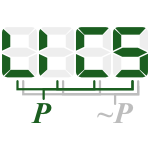 LICS-2010-CaliGLMP #datalog #information management #logic #query #representation
LICS-2010-CaliGLMP #datalog #information management #logic #query #representation- Datalog+/-: A Family of Logical Knowledge Representation and Query Languages for New Applications (AC, GG, TL, BM, AP), pp. 228–242.
 QoSA-2009-KoziolekWD #architecture #case study #evolution #industrial
QoSA-2009-KoziolekWD #architecture #case study #evolution #industrial- Evolving Industrial Software Architectures into a Software Product Line: A Case Study (HK, RW, JD), pp. 177–193.
 WICSA-ECSA-2009-Axelsson #architecture #case study #embedded #industrial
WICSA-ECSA-2009-Axelsson #architecture #case study #embedded #industrial- Evolutionary architecting of embedded automotive product lines: An industrial case study (JA), pp. 101–110.
 WICSA-ECSA-2009-KotonyaLR #approach #development
WICSA-ECSA-2009-KotonyaLR #approach #development- A consumer-centred approach for service-oriented product line development (GK, JL, DR), pp. 211–220.
 WICSA-ECSA-2009-PerovichRB #architecture #feature model
WICSA-ECSA-2009-PerovichRB #architecture #feature model- Feature model to product architectures: Applying MDE to Software Product Lines (DP, POR, MCB), pp. 201–210.
 DocEng-2009-DiazAK #using
DocEng-2009-DiazAK #using- Using DITA for documenting software product lines (OD, FIA, JK), pp. 231–240.
 ITiCSE-2009-Gomez-MartinJA #design pattern #education #game studies #using
ITiCSE-2009-Gomez-MartinJA #design pattern #education #game studies #using- Teaching design patterns using a family of games (MAGM, GJD, JA), pp. 268–272.
 CSMR-2009-NunesKSNGL #implementation #multi
CSMR-2009-NunesKSNGL #implementation #multi- Comparing Stability of Implementation Techniques for Multi-agent System Product Lines (CN, UK, CS, IN, AFG, CJPdL), pp. 229–232.
 CSMR-2009-RibeiroB
CSMR-2009-RibeiroB - Improving Guidance when Restructuring Variabilities in Software Product Lines (MdMR, PB), pp. 79–88.
 CSMR-2009-Rombach #design #maintenance #using
CSMR-2009-Rombach #design #maintenance #using- Design for Maintenance — Use of Engineering Principles and Product Line Technology (HDR), pp. 1–2.
 ICSM-2009-LamanchaUG #modelling #testing
ICSM-2009-LamanchaUG #modelling #testing- Model-driven testing in software product lines (BPL, MPU, IGRdG), pp. 511–514.
 ICSM-2009-Weiss #architecture
ICSM-2009-Weiss #architecture- Architecture of product lines (DMW), p. 6.
 LATA-2009-BucciL #image #on the #word
LATA-2009-BucciL #image #on the #word- On a Family of Morphic Images of Arnoux-Rauzy Words (MB, ADL), pp. 259–266.
 ICEIS-ISAS-2009-MateoPL #automation #generative #testing
ICEIS-ISAS-2009-MateoPL #automation #generative #testing- Automatic Generation of Test Cases in Software Product Lines (PRM, MP, BPL), pp. 124–130.
 ICEIS-J-2009-NunesKNLC #analysis #approach #multi
ICEIS-J-2009-NunesKNLC #analysis #approach #multi- A Domain Analysis Approach for Multi-agent Systems Product Lines (IN, UK, CN, CJPdL, EC), pp. 716–727.
 CIKM-2009-ChenL
CIKM-2009-ChenL - Message family propagation for ising mean field based on iteration tree (YC, SL), pp. 345–354.
 ICML-2009-LiangJK #exponential #learning #metric
ICML-2009-LiangJK #exponential #learning #metric- Learning from measurements in exponential families (PL, MIJ, DK), pp. 641–648.
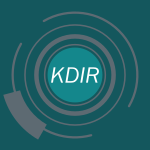 KDIR-2009-PaquetV #2d #3d #multi #realtime
KDIR-2009-PaquetV #2d #3d #multi #realtime- Finding Protein Family Similarities in Real Time through Multiple 3D and 2D Representations, Indexing and Exhaustive Searching (EP, HLV), pp. 127–133.
 SEKE-2009-Abu-Matar #modelling #variability
SEKE-2009-Abu-Matar #modelling #variability- Mediation Based Variability Modeling for Service Oriented Software Product Lines (MAM), pp. 291–294.
 SEKE-2009-ConejeroHJCR #analysis #composition
SEKE-2009-ConejeroHJCR #analysis #composition- Early Analysis of Modularity in Software Product Lines (JMC, JH, EJ, PJC, RR), pp. 721–736.
 SEKE-2009-PengSZ #architecture #evolution
SEKE-2009-PengSZ #architecture #evolution- An Architecture-based Evolution Management Method for Software Product Line (XP, LS, WZ), pp. 135–140.
 ICMT-2009-ApelJTK
ICMT-2009-ApelJTK - Model Superimposition in Software Product Lines (SA, FJ, ST, CK), pp. 4–19.
 MoDELS-2009-SchwanningerGEL #lifecycle #modelling #variability
MoDELS-2009-SchwanningerGEL #lifecycle #modelling #variability- Variability Modelling throughout the Product Line Lifecycle (CS, IG, CE, ML), pp. 685–689.
 SPLC-2009-Almeida
SPLC-2009-Almeida - Software product lines doctoral symposium (ESdA), p. 331.
 SPLC-2009-BabarIP #agile #architecture #case study #development #industrial
SPLC-2009-BabarIP #agile #architecture #case study #development #industrial- An industrial case of exploiting product line architectures in agile software development (MAB, TI, MP), pp. 171–179.
 SPLC-2009-Beuche #legacy
SPLC-2009-Beuche #legacy- Transforming legacy systems into software product lines (DB), p. 321.
 SPLC-2009-Bosch #ecosystem
SPLC-2009-Bosch #ecosystem- From software product lines to software ecosystems (JB), pp. 111–119.
 SPLC-2009-CarbonAU #approach #towards
SPLC-2009-CarbonAU #approach #towards- Towards a product line approach for office devices: facilitating customization of office devices at Ricoh Co. Ltd (RC, SA, TU), pp. 151–160.
 SPLC-2009-ChastekM
SPLC-2009-ChastekM - Production planning in a software product line organization (GJC, JDM), p. 309.
 SPLC-2009-ChenBA #overview #perspective #variability
SPLC-2009-ChenBA #overview #perspective #variability- Variability management in software product lines: a systematic review (LC, MAB, NA), pp. 81–90.
 SPLC-2009-ClementsFK #community
SPLC-2009-ClementsFK #community- Consolidating community consensus in product line practice (PCC, SRF, CWK), pp. 303–304.
 SPLC-2009-Donohoe
SPLC-2009-Donohoe - Introduction to software product lines (PD), p. 305.
 SPLC-2009-DordowskyH
SPLC-2009-DordowskyH - Adopting software product line principles to manage software variants in a complex avionics system (FD, WH), pp. 265–274.
 SPLC-2009-Fernandez-AmorosGS #diagrams #feature model #modelling
SPLC-2009-Fernandez-AmorosGS #diagrams #feature model #modelling- Inferring information from feature diagrams to product line economic models (DFA, RHG, JACS), pp. 41–50.
 SPLC-2009-GanesanLAMB #architecture #design #verification
SPLC-2009-GanesanLAMB #architecture #design #verification- Verifying architectural design rules of the flight software product line (DG, ML, CA, DM, MB), pp. 161–170.
 SPLC-2009-Jarzabek #variability
SPLC-2009-Jarzabek #variability- Pragmatic strategies for variability management in product lines in small- to medium-size companies (SJ), p. 327.
 SPLC-2009-JepsenB
SPLC-2009-JepsenB - Running a software product line: standing still is going backwards (HPJ, DB), pp. 101–110.
 SPLC-2009-JohnV #requirements
SPLC-2009-JohnV #requirements- Evolutionary product line requirements engineering (IJ, KV), p. 319.
 SPLC-2009-Krueger #framework #lifecycle
SPLC-2009-Krueger #framework #lifecycle- Systems and software product line engineering with the SPL lifecycle framework (CWK), p. 307.
 SPLC-2009-KrutC #architecture
SPLC-2009-KrutC #architecture- Service-oriented architectures and software product lines: enhancing variation (RWK, SGC), pp. 301–302.
 SPLC-2009-Linden #development
SPLC-2009-Linden #development- Inner source product line development (FvdL0), p. 317.
 SPLC-2009-LopezCH #architecture #configuration management
SPLC-2009-LopezCH #architecture #configuration management- Issues in mapping change-based product line architectures to configuration management systems (NL, RC, AvdH), pp. 21–30.
 SPLC-2009-McGregor #reuse #testing
SPLC-2009-McGregor #reuse #testing- Building reusable testing assets for a software product line (JDM), p. 325.
 SPLC-2009-MontagudA #evaluation #quality
SPLC-2009-MontagudA #evaluation #quality- Gathering current knowledge about quality evaluation in software product lines (SM, SA), pp. 91–100.
 SPLC-2009-NorthropJ
SPLC-2009-NorthropJ - Introduction to software product line adoption (LMN, LGJ), p. 313.
 SPLC-2009-ParraBD
SPLC-2009-ParraBD - Context awareness for dynamic service-oriented product lines (CAP, XB, LD), pp. 131–140.
 SPLC-2009-SavolainenBKM
SPLC-2009-SavolainenBKM - Default values for improved product line management (JS, JB, JK, TM), pp. 51–60.
 SPLC-2009-SavolainenM #architecture #industrial #optimisation #requirements
SPLC-2009-SavolainenM #architecture #industrial #optimisation #requirements- From product line requirements to product line architecture: optimizing industrial product lines for new competitive advantage (JS, MM), p. 315.
 SPLC-2009-SchmidL #optimisation #using
SPLC-2009-SchmidL #optimisation #using- Introducing and optimizing software product lines using the FEF (KS, FvdL), p. 311.
 SPLC-2009-Slegers #interface
SPLC-2009-Slegers #interface- Building automotive product lines around managed interfaces (WJS), pp. 257–264.
 SPLC-2009-StollBGJ #architecture #usability
SPLC-2009-StollBGJ #architecture #usability- Supporting usability in product line architectures (PS, LB, EG, BEJ), pp. 241–248.
 SPLC-2009-TakebeFCHS #case study #development #experience
SPLC-2009-TakebeFCHS #case study #development #experience- Experiences with software product line engineering in product development oriented organization (YT, NF, MC, TH, OS), pp. 275–283.
 SPLC-2009-TraskR #architecture #modelling
SPLC-2009-TraskR #architecture #modelling- Leveraging model driven engineering in software product line architectures (BT, AR), p. 323.
 SPLC-2009-Voelter #domain-specific language #using
SPLC-2009-Voelter #domain-specific language #using- Using domain specific languages for product line engineering (MV), p. 329.
 MoDELS-2009-SchwanningerGEL #lifecycle #modelling #variability
MoDELS-2009-SchwanningerGEL #lifecycle #modelling #variability- Variability Modelling throughout the Product Line Lifecycle (CS, IG, CE, ML), pp. 685–689.
 TOOLS-EUROPE-2009-KastnerATKB #approach #correctness #independence
TOOLS-EUROPE-2009-KastnerATKB #approach #correctness #independence- Guaranteeing Syntactic Correctness for All Product Line Variants: A Language-Independent Approach (CK, SA, ST, MK, DSB), pp. 175–194.
 PLDI-2009-QiM
PLDI-2009-QiM - Sharing classes between families (XQ, ACM), pp. 281–292.
 RE-2009-SalinesiDDMR #constraints #finite #modelling #programming
RE-2009-SalinesiDDMR #constraints #finite #modelling #programming- Exploiting the Versatility of Constraint Programming over Finite Domains to Integrate Product Line Models (CS, DD, OD, RM, CR), pp. 375–376.
 RE-2009-SalinesiRDM #classification #fault #feature model #modelling #towards #verification
RE-2009-SalinesiRDM #classification #fault #feature model #modelling #towards #verification- Looking for Product Line Feature Models Defects: Towards a Systematic Classification of Verification Criteria (CS, CR, DD, RM), pp. 385–386.
 ASE-2009-LauenrothPT #model checking
ASE-2009-LauenrothPT #model checking- Model Checking of Domain Artifacts in Product Line Engineering (KL, KP, ST), pp. 269–280.
 GTTSE-2009-Borba #refactoring
GTTSE-2009-Borba #refactoring- An Introduction to Software Product Line Refactoring (PB), pp. 1–26.
 SAC-2009-BuresHM #component #using
SAC-2009-BuresHM #component #using- Using a product line for creating component systems (TB, PH, MM), pp. 501–508.
 SAC-2009-CiriloNKNL #automation #multi
SAC-2009-CiriloNKNL #automation #multi- Automatic product derivation of multi-agent systems product lines (EC, IN, UK, CN, CJPdL), pp. 731–732.
 SAC-2009-NunesKNCL #multi
SAC-2009-NunesKNCL #multi- Extending PASSI to model multi-agent systems product lines (IN, UK, CN, EC, CJPdL), pp. 729–730.
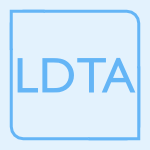 LDTA-2008-Jonge09 #component
LDTA-2008-Jonge09 #component- Developing Product Lines with Third-Party Components (MdJ), pp. 63–80.
 SLE-2009-AlferezSMGKAA #composition #multi #requirements
SLE-2009-AlferezSMGKAA #composition #multi #requirements- Multi-view Composition Language for Software Product Line Requirements (MA, JPS, AMDM, AG, UK, JA, VA), pp. 103–122.
 SLE-2009-ZschalerSSARFMAK #variability
SLE-2009-ZschalerSSARFMAK #variability- VML* — A Family of Languages for Variability Management in Software Product Lines (SZ, PS, JPS, MA, AR, LF, AMDM, JA, UK), pp. 82–102.
 FASE-2009-OldevikHM #confluence #independence
FASE-2009-OldevikHM #confluence #independence- Confluence in Domain-Independent Product Line Transformations (JO, ØH, BMP), pp. 34–48.
 ECSA-2008-CapillaB #architecture #design #on the
ECSA-2008-CapillaB #architecture #design #on the- On the Role of Architectural Design Decisions in Software Product Line Engineering (RC, MAB), pp. 241–255.
 ECSA-2008-OberDFP #component #development #domain-specific language #towards
ECSA-2008-OberDFP #component #development #domain-specific language #towards- Towards Interoperability in Component Based Development with a Family of DSLs (IO, AAD, LF, CP), pp. 148–163.
 WICSA-2008-DhunganaNGR #architecture #evolution #variability
WICSA-2008-DhunganaNGR #architecture #evolution #variability- Supporting the Evolution of Product Line Architectures with Variability Model Fragments (DD, TN, PG, RR), pp. 327–330.
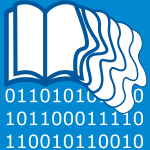 JCDL-2008-Fazl-ErsiMT #interactive #interface #named
JCDL-2008-Fazl-ErsiMT #interactive #interface #named- slab: smart labeling of family photos through an interactive interface (EFE, ISM, JKT), pp. 351–354.
 CSEET-2008-LisboaNAM #case study #education #experience
CSEET-2008-LisboaNAM #case study #education #experience- A Case Study in Software Product: Lines An Educational Experience (LBL, LMN, ESdA, SRdLM), pp. 155–162.
 CSMR-2008-AldekoaTMD #maintenance
CSMR-2008-AldekoaTMD #maintenance- Quantifying Maintainability in Feature Oriented Product Lines (GA, ST, GSM, OD), pp. 243–247.
 CSMR-2008-MendeBKM #clone detection #detection #evolution #using
CSMR-2008-MendeBKM #clone detection #detection #evolution #using- Supporting the Grow-and-Prune Model in Software Product Lines Evolution Using Clone Detection (TM, FB, RK, GM), pp. 163–172.
 ICSM-2008-DehlingerL #design #evolution #multi #requirements #reuse
ICSM-2008-DehlingerL #design #evolution #multi #requirements #reuse- Supporting requirements reuse in multi-agent system product line design and evolution (JD, RRL), pp. 207–216.
 ICSM-2008-JiangZZZ #industrial #maintenance
ICSM-2008-JiangZZZ #industrial #maintenance- Maintaining software product lines — an industrial practice (MJ, JZ, HZ, YZ), pp. 444–447.
 MSR-2008-YoshimuraNHK #analysis #approach #detection #named #variability
MSR-2008-YoshimuraNHK #analysis #approach #detection #named #variability- FAVE: factor analysis based approach for detecting product line variability from change history (KY, FN, KH, TK), pp. 11–18.
 AFL-2008-Bercoff
AFL-2008-Bercoff - Counting of a family of column-convex rectilinear tiles (CB), pp. 100–110.
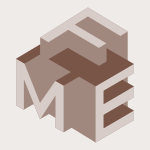 FM-2008-HarhurinH #consistency #specification #towards
FM-2008-HarhurinH #consistency #specification #towards- Towards Consistent Specifications of Product Families (AH, JH), pp. 390–405.
 SEFM-2008-KahsaiRS #testing
SEFM-2008-KahsaiRS #testing- Specification-Based Testing for Software Product Lines (TK, MR, BHS), pp. 149–158.
 CHI-2008-WuBRBM #distributed #memory management
CHI-2008-WuBRBM #distributed #memory management- Collaborating to remember: a distributed cognition account of families coping with memory impairments (MW, JPB, BR, RB, MM), pp. 825–834.
 CSCW-2008-BrushIT #named
CSCW-2008-BrushIT #named- SPARCS: exploring sharing suggestions to enhance family connectedness (AJBB, KMI, KT), pp. 629–638.
 CSCW-2008-EgelmanBI #paradigm
CSCW-2008-EgelmanBI #paradigm- Family accounts: a new paradigm for user accounts within the home environment (SE, AJBB, KMI), pp. 669–678.
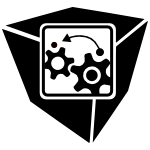 SOFTVIS-2008-NestorTBCH #visualisation
SOFTVIS-2008-NestorTBCH #visualisation- Applying visualisation techniques in software product lines (DN, ST, GB, CC, PH), pp. 175–184.
 CAiSE-2008-HalmansPS #adaptation
CAiSE-2008-HalmansPS #adaptation- Documenting Application-Specific Adaptations in Software Product Line Engineering (GH, KP, ES), pp. 109–123.
 ICEIS-ISAS2-2008-CabelloR #variability
ICEIS-ISAS2-2008-CabelloR #variability- Variability Management in Software Product Lines for Decision Support Systems Construction (MEC, IR), pp. 49–56.
 ICEIS-ISAS2-2008-ZhangRSG #approach #petri net
ICEIS-ISAS2-2008-ZhangRSG #approach #petri net- Production Configuration of Product Families — An Approach based on Petri Nets (LZ, BR, JS, GJCG), pp. 5–11.
 CIKM-2008-AcharyyaG #analysis
CIKM-2008-AcharyyaG #analysis- A spam resistant family of concavo-convex ranks for link analysis (SA, JG), pp. 1505–1506.
 ICML-2008-WingateS #exponential #learning #predict
ICML-2008-WingateS #exponential #learning #predict- Efficiently learning linear-linear exponential family predictive representations of state (DW, SPS), pp. 1176–1183.
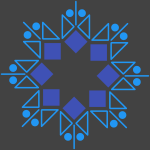 KDD-2008-YenSMS #difference #metric
KDD-2008-YenSMS #difference #metric- A family of dissimilarity measures between nodes generalizing both the shortest-path and the commute-time distances (LY, MS, AM, MS), pp. 785–793.
 KR-2008-Bienvenu #abduction #complexity #lightweight #logic
KR-2008-Bienvenu #abduction #complexity #lightweight #logic- Complexity of Abduction in the EL Family of Lightweight Description Logics (MB), pp. 220–230.
 SEKE-2008-AlferezKSSMAA #approach #modelling #requirements
SEKE-2008-AlferezKSSMAA #approach #modelling #requirements- A Model-driven Approach for Software Product Lines Requirements Engineering (MA, UK, AS, JPS, AMDM, JA, VA), pp. 779–784.
 SEKE-2008-FernandesWM #feature model #modelling
SEKE-2008-FernandesWM #feature model #modelling- Feature Modeling for Context-Aware Software Product Lines (PF, CW, LGPM), pp. 758–763.
 SEKE-2008-LiuLW #component #development #process
SEKE-2008-LiuLW #component #development #process- Improving Component Container Development Process through Product Line Engineering (GL, YL, JW), pp. 238–243.
 SEKE-2008-NunesKNL #modelling #multi
SEKE-2008-NunesKNL #modelling #multi- Documenting and Modeling Multi-agent Systems Product Lines (IN, UK, CN, CJPdL), pp. 745–751.
 ICMT-2008-FreemanBL #case study #modelling
ICMT-2008-FreemanBL #case study #modelling- Lifting Transformational Models of Product Lines: A Case Study (GF, DSB, RGL), pp. 16–30.
 MoDELS-2008-TawhidP #analysis #development #modelling #performance
MoDELS-2008-TawhidP #analysis #development #modelling #performance- Integrating Performance Analysis in the Model Driven Development of Software Product Lines (RT, DCP), pp. 490–504.
 SPLC-2008-AlvesCA #case study #development #experience #game studies #mobile
SPLC-2008-AlvesCA #case study #development #experience #game studies #mobile- Experiences with Mobile Games Product Line Development at Meantime (VA, TC, CFA), pp. 287–296.
 SPLC-2008-AlvesCNMSB #aspect-oriented #named
SPLC-2008-AlvesCNMSB #aspect-oriented #named- FLiP: Managing Software Product Line Extraction and Reaction with Aspects (VA, FC, VN, AM, SS, PB), p. 354.
 SPLC-2008-Beuche #modelling
SPLC-2008-Beuche #modelling- Modeling and Building Software Product Lines with Pure: : Variants (DB), p. 358.
 SPLC-2008-Beuche08a #legacy
SPLC-2008-Beuche08a #legacy- Transforming Legacy Systems into Software Product Lines (DB), p. 377.
 SPLC-2008-BotterweckTNAC #comprehension #configuration management #tool support #visual notation
SPLC-2008-BotterweckTNAC #comprehension #configuration management #tool support #visual notation- Visual Tool Support for Configuring and Understanding Software Product Lines (GB, ST, DN, SbA, CC), pp. 77–86.
 SPLC-2008-Campbell
SPLC-2008-Campbell - Renewing the Product Line Vision (GHC), pp. 109–116.
 SPLC-2008-CarbonKMM #feedback #game studies
SPLC-2008-CarbonKMM #feedback #game studies- Providing Feedback from Application to Family Engineering — The Product Line Planning Game at the Testo AG (RC, JK, DM, GM), pp. 180–189.
 SPLC-2008-CetinaFP #pervasive
SPLC-2008-CetinaFP #pervasive- Applying Software Product Lines to Build Autonomic Pervasive Systems (CC, JF, VP), pp. 117–126.
 SPLC-2008-ChaeB #compilation
SPLC-2008-ChaeB #compilation- Building a Family of Compilers (WC, MB), pp. 307–316.
 SPLC-2008-ChastekM
SPLC-2008-ChastekM - Production Planning in a Software Product Line Organization (GJC, JDM), p. 369.
 SPLC-2008-Dalgarno #clone detection #detection
SPLC-2008-Dalgarno #clone detection #detection- Jump-Starting Software Product Lines with Clone Detection (AMD), p. 351.
 SPLC-2008-Dalgarno08a
SPLC-2008-Dalgarno08a - Product Line Scoping in Practice (AMD), p. 363.
 SPLC-2008-DhunganaNGR #evolution #modelling
SPLC-2008-DhunganaNGR #evolution #modelling- Supporting Evolution in Model-Based Product Line Engineering (DD, TN, PG, RR), pp. 319–328.
 SPLC-2008-Donohoe
SPLC-2008-Donohoe - Introduction to Software Product Lines (PD), p. 370.
 SPLC-2008-EichelbergerS #named
SPLC-2008-EichelbergerS #named- EASy-Producer — A Product Line Production Environment (HE, KS), p. 357.
 SPLC-2008-EtxeberriaM #evaluation #quality #variability
SPLC-2008-EtxeberriaM #evaluation #quality #variability- Variability Driven Quality Evaluation in Software Product Lines (LE, GSM), pp. 243–252.
 SPLC-2008-FantechiG #formal method #modelling
SPLC-2008-FantechiG #formal method #modelling- Formal Modeling for Product Families Engineering (AF, SG), pp. 193–202.
 SPLC-2008-GimenesFT #process
SPLC-2008-GimenesFT #process- A Product Line for Business Process Management (IMdSG, MF, MBFdT), pp. 265–274.
 SPLC-2008-GroherVS #aspect-oriented #modelling
SPLC-2008-GroherVS #aspect-oriented #modelling- Integrating Models and Aspects into Product Line Engineering (IG, MV, CS), p. 355.
 SPLC-2008-GrulerLS #modelling
SPLC-2008-GrulerLS #modelling- Calculating and Modeling Common Parts of Software Product Lines (AG, ML, KDS), pp. 203–212.
 SPLC-2008-GustavssonA #embedded #flexibility #using
SPLC-2008-GustavssonA #embedded #flexibility #using- Evaluating Flexibility in Embedded Automotive Product Lines Using Real Options (HG, JA), pp. 235–242.
 SPLC-2008-HartmannT #diagrams #feature model #multi #using #variability
SPLC-2008-HartmannT #diagrams #feature model #multi #using #variability- Using Feature Diagrams with Context Variability to Model Multiple Product Lines for Software Supply Chains (HH, TT), pp. 12–21.
 SPLC-2008-HubauxHB #challenge #modelling #open source #re-engineering #variability
SPLC-2008-HubauxHB #challenge #modelling #open source #re-engineering #variability- Variability Modeling Challenges from the Trenches of an Open Source Product Line Re-engineering Project (AH, PH, DB), pp. 55–64.
 SPLC-2008-JohnV #requirements
SPLC-2008-JohnV #requirements- Evolutionary Product Line Requirements Engineering (IJ, KV), pp. 374–375.
 SPLC-2008-KrsekZRCD #case study #experience #scalability
SPLC-2008-KrsekZRCD #case study #experience #scalability- Experiences of Large Banks: Hurdles and Enablers to the Adoption of Software Product Line Practices in Large Corporate Organisations (MK, JvZ, RR, BC, ND), pp. 161–169.
 SPLC-2008-Krueger #framework
SPLC-2008-Krueger #framework- The BigLever Software Gears Unified Software Product Line Engineering Framework (CWK), p. 353.
 SPLC-2008-Krueger08a #industrial
SPLC-2008-Krueger08a #industrial- Catalysts and Inhibitors for Momentum in the Software Product Line Industry (CWK), p. 365.
 SPLC-2008-Krueger08b
SPLC-2008-Krueger08b - Pragmatic Methods for Commercial Software Product Line Engineering Practice (CWK), p. 376.
 SPLC-2008-KruegerCB
SPLC-2008-KruegerCB - HomeAway’s Transition to Software Product Line Practice: Engineering and Business Results in 60 Days (CWK, DC, RB), pp. 297–306.
 SPLC-2008-LeeMN #approach
SPLC-2008-LeeMN #approach- An Approach for Developing Service Oriented Product Lines (JL, DM, MN), pp. 275–284.
 SPLC-2008-Lutz #consistency
SPLC-2008-Lutz #consistency- Enabling Verifiable Conformance for Product Lines (RRL), pp. 35–44.
 SPLC-2008-MagroGP #validation
SPLC-2008-MagroGP #validation- A Software Product Line Definition for Validation Environments (BM, JG, JP), pp. 45–54.
 SPLC-2008-McGregor #agile
SPLC-2008-McGregor #agile- Agile Software Product Lines — A Working Session (JDM), p. 364.
 SPLC-2008-McGregor08a #reuse #testing
SPLC-2008-McGregor08a #reuse #testing- Building Reusable Testing Assets for a Software Product Line (JDM), p. 378.
 SPLC-2008-NiuE #analysis #clustering #functional #on-demand #requirements
SPLC-2008-NiuE #analysis #clustering #functional #on-demand #requirements- On-Demand Cluster Analysis for Product Line Functional Requirements (NN, SME), pp. 87–96.
 SPLC-2008-NorthropJ
SPLC-2008-NorthropJ - Introduction to Software Product Line Adoption (LMN, LGJ), pp. 371–372.
 SPLC-2008-SaraburaB #challenge #development #requirements
SPLC-2008-SaraburaB #challenge #development #requirements- Solving Requirements Management Challenges in Product Line Development (MS, PB), p. 352.
 SPLC-2008-TraskR #architecture #modelling
SPLC-2008-TraskR #architecture #modelling- Leveraging Model Driven Engineering in Software Product Line Architectures (BT, AR), p. 373.
 SPLC-2008-Weiss #hall of fame
SPLC-2008-Weiss #hall of fame- The Product Line Hall of Fame (DMW), p. 395.
 SPLC-2008-WhiteSBTC #automation #fault #feature model #modelling
SPLC-2008-WhiteSBTC #automation #fault #feature model #modelling- Automated Diagnosis of Product-Line Configuration Errors in Feature Models (JW, DCS, DB, PT, ARC), pp. 225–234.
 SPLC-2008-YoshimuraFMP #component #design #modelling
SPLC-2008-YoshimuraFMP #component #design #modelling- Model-Based Design of Product Line Components in the Automotive Domain (KY, TF, DM, DP), pp. 170–179.
 MoDELS-2008-TawhidP #analysis #development #modelling #performance
MoDELS-2008-TawhidP #analysis #development #modelling #performance- Integrating Performance Analysis in the Model Driven Development of Software Product Lines (RT, DCP), pp. 490–504.
 RE-2008-LauenrothP #consistency #requirements
RE-2008-LauenrothP #consistency #requirements- Dynamic Consistency Checking of Domain Requirements in Product Line Engineering (KL, KP), pp. 193–202.
 RE-2008-Monzon #approach #requirements #reuse
RE-2008-Monzon #approach #requirements #reuse- A Practical Approach to Requirements Reuse in Product Families of On-Board Systems (AM), pp. 223–228.
 RE-2008-NiuE #functional #modelling #requirements
RE-2008-NiuE #functional #modelling #requirements- Extracting and Modeling Product Line Functional Requirements (NN, SME), pp. 155–164.
 ASE-2008-GrunbacherRD #lessons learnt #tool support
ASE-2008-GrunbacherRD #lessons learnt #tool support- Product Line Tools are Product Lines Too: Lessons Learned from Developing a Tool Suite (PG, RR, DD), pp. 351–354.
 ASE-2008-KastnerA #approach #formal method
ASE-2008-KastnerA #approach #formal method- Type-Checking Software Product Lines — A Formal Approach (CK, SA), pp. 258–267.
 ICSE-2008-FigueiredoC #aspect-oriented #design #empirical #evolution
ICSE-2008-FigueiredoC #aspect-oriented #design #empirical #evolution- Evolving software product lines with aspects: an empirical study on design stability (EF, NC, CS, MM, UK, AG, SS, FCF, SSK, FCF, FD), pp. 261–270.
 ICSE-2008-KastnerAK
ICSE-2008-KastnerAK - Granularity in software product lines (CK, SA, MK), pp. 311–320.
 SAC-2008-RibeiroMB #implementation
SAC-2008-RibeiroMB #implementation- A decision model for implementing product lines variabilities (MdMR, PMJ, PB), pp. 276–277.
 GPCE-2008-RosenmullerSSA #code generation #composition
GPCE-2008-RosenmullerSSA #code generation #composition- Code generation to support static and dynamic composition of software product lines (MR, NS, GS, SA), pp. 3–12.
 SLE-2008-SanchezLFG #process #specification
SLE-2008-SanchezLFG #process #specification- Engineering Languages for Specifying Product-Derivation Processes in Software Product Lines (PS, NL, LF, AG), pp. 188–207.
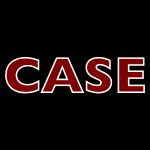 CASE-2008-QianK #component #performance
CASE-2008-QianK #component #performance- Supply chain performance with various price-dependent demand functions and component commonality in one product family (LQ, Z(K), pp. 760–765.
 WICSA-2007-DhunganaRG #architecture #modelling
WICSA-2007-DhunganaRG #architecture #modelling- Decision-Oriented Modeling of Product Line Architectures (DD, RR, PG), p. 22.
 CSMR-2007-LoeschP #concept analysis #using #variability
CSMR-2007-LoeschP #concept analysis #using #variability- Restructuring Variability in Software Product Lines using Concept Analysis of Product Configurations (FL, EP), pp. 159–170.
 WCRE-2007-FrenzelKBA
WCRE-2007-FrenzelKBA - Extending the Reflexion Method for Consolidating Software Variants into Product Lines (PF, RK, APJB, KA), pp. 160–169.
 ICALP-2007-AlonG
ICALP-2007-AlonG - Balanced Families of Perfect Hash Functions and Their Applications (NA, SG), pp. 435–446.
 LATA-2007-OgasawaraK #approximate #performance
LATA-2007-OgasawaraK #approximate #performance- Stochastically Approximating Tree Grammars by Regular Grammars and Its Application to Faster ncRNA Family Annotation (KO, SK), pp. 461–472.
 GT-VMT-2007-WrobelEP #framework #graph
GT-VMT-2007-WrobelEP #framework #graph- Graph-Based Engineering Systems — A Family of Software Applications and their Underlying Framework (GW, REE, MP).
 CHI-2007-BentleyM
CHI-2007-BentleyM - Sharing motion information with close family and friends (FB, CJM), pp. 1361–1370.
 HCI-AS-2007-KuboKTCWY #design #interactive #memory management
HCI-AS-2007-KuboKTCWY #design #interactive #memory management- Interactive Design of Memory Sharing Applications for Families (MK, AK, ET, RC, KW, MY), pp. 954–960.
 OCSC-2007-DuvalH #design #ubiquitous
OCSC-2007-DuvalH #design #ubiquitous- First Design of a Ubiquitous System for Affective Bonding and Support with Family and Friends (SD, HH), pp. 70–79.
 CAiSE-2007-DjebbiS #requirements
CAiSE-2007-DjebbiS #requirements- RED-PL, a Method for Deriving Product Requirements from a Product Line Requirements Model (OD, CS), pp. 279–293.
 SEKE-2007-FengLK #adaptation #aspect-oriented #component #integration #quality
SEKE-2007-FengLK #adaptation #aspect-oriented #component #integration #quality- Smooth Quality Oriented Component Integration through Product Line Based Aspect-Oriented Component Adaptation (YF, XL, JMK), pp. 71–76.
 SEKE-2007-PengJRZ #case study #component #database #reuse #using
SEKE-2007-PengJRZ #case study #component #database #reuse #using- Reuse of Database Access Layer Components in JEE Product Lines: Limitations and a Possible Solution (Case Study) (DP, SJ, DCR, HZ), pp. 308–313.
 SEKE-2007-YeL #specification
SEKE-2007-YeL #specification- A Formal Specification for Product Configuration in Software Product Lines (HY, YL), pp. 221–226.
 MoDELS-2007-JayaramanWEG #analysis #composition #detection #feature model #interactive #using
MoDELS-2007-JayaramanWEG #analysis #composition #detection #feature model #interactive #using- Model Composition in Product Lines and Feature Interaction Detection Using Critical Pair Analysis (PKJ, JW, AME, HG), pp. 151–165.
 SPLC-2007-BeucheBDFGHJJKMW #requirements #tool support #using
SPLC-2007-BeucheBDFGHJJKMW #requirements #tool support #using- Using Requirements Management Tools in Software Product Line Engineering: The State of the Practice (DB, AB, HD, AF, HG, GH, DJ, IJ, RTK, TvdM, AW), pp. 84–96.
 SPLC-2007-BragancaM #automation #case study #diagrams #feature model #modelling
SPLC-2007-BragancaM #automation #case study #diagrams #feature model #modelling- Automating Mappings between Use Case Diagrams and Feature Models for Software Product Lines (AB, RJM), pp. 3–12.
 SPLC-2007-ChastekDM
SPLC-2007-ChastekDM - A Production System for Software Product Lines (GJC, PD, JDM), pp. 117–128.
 SPLC-2007-GanesanKKHM #case study #cost analysis
SPLC-2007-GanesanKKHM #case study #cost analysis- Comparing Costs and Benefits of Different Test Strategies for a Software Product Line: A Study from Testo AG (DG, JK, RK, UH, GM), pp. 74–83.
 SPLC-2007-GrulerHH #development
SPLC-2007-GrulerHH #development- Development and Configuration of Service-based Product Lines (AG, AH, JH), pp. 107–116.
 SPLC-2007-HabliK #challenge #monitoring
SPLC-2007-HabliK #challenge #monitoring- Challenges of Establishing a Software Product Line for an Aerospace Engine Monitoring System (IH, TK), pp. 193–202.
 SPLC-2007-Ishida #approach #development #enterprise
SPLC-2007-Ishida #approach #development #enterprise- Software Product Lines Approach in Enterprise System Development (YI), pp. 44–53.
 SPLC-2007-Jensen #analysis #case study #development #experience #multi
SPLC-2007-Jensen #analysis #case study #development #experience #multi- Experiences with Product Line Development of Multi-Discipline Analysis Software at Overwatch Textron Systems (PJ), pp. 35–43.
 SPLC-2007-JepsenDB #migration
SPLC-2007-JepsenDB #migration- Minimally Invasive Migration to Software Product Lines (HPJ, JGD, DB), pp. 203–211.
 SPLC-2007-KimKK #experience #legacy #video
SPLC-2007-KimKK #experience #legacy #video- Building Software Product Line from the Legacy Systems “Experience in the Digital Audio and Video Domain” (KK, HK, WK), pp. 171–180.
 SPLC-2007-Krueger #generative
SPLC-2007-Krueger #generative- The 3-Tiered Methodology: Pragmatic Insights from New Generation Software Product Lines (CWK), pp. 97–106.
 SPLC-2007-LoeschP #optimisation #variability
SPLC-2007-LoeschP #optimisation #variability- Optimization of Variability in Software Product Lines (FL, EP), pp. 151–162.
 SPLC-2007-Matsumoto
SPLC-2007-Matsumoto - A Guide for Management and Financial Controls of Product Lines (YM), pp. 163–170.
 SPLC-2007-MebaneO #complexity
SPLC-2007-MebaneO #complexity- Dynamic Complexity and the Owen Firmware Product Line Program (HM, JTO), pp. 212–222.
 SPLC-2007-NonakaZ #architecture #development #quality
SPLC-2007-NonakaZ #architecture #development #quality- Impact of Architecture and Quality Investment in Software Product Line Development (MN, LZ), pp. 63–73.
 SPLC-2007-OldevikH #higher-order
SPLC-2007-OldevikH #higher-order- Higher-Order Transformations for Product Lines (JO, ØH), pp. 243–254.
 SPLC-2007-ParkHSK #component #composition
SPLC-2007-ParkHSK #component #composition- A Component Model supporting Decomposition and Composition of Consumer Electronics Software Product Lines (CMP, SH, KHS, JK), pp. 181–192.
 SPLC-2007-SchirmeierS #analysis #framework
SPLC-2007-SchirmeierS #analysis #framework- Tailoring Infrastructure Software Product Lines by Static Application Analysis (HS, OS), pp. 255–260.
 SPLC-2007-SellierEU #enterprise
SPLC-2007-SellierEU #enterprise- Introducing Software Product Line Engineering for Metal Processing Lines in a Small to Medium Enterprise (DS, GBE, GU), pp. 54–62.
 SPLC-2007-TischerMKG #why
SPLC-2007-TischerMKG #why- Why does it take that long? Establishing Product Lines in the Automotive Domain (CT, AM, MK, LG), pp. 269–274.
 SPLC-2007-VolterG #aspect-oriented #development #implementation #modelling #using
SPLC-2007-VolterG #aspect-oriented #development #implementation #modelling #using- Product Line Implementation using Aspect-Oriented and Model-Driven Software Development (MV, IG), pp. 233–242.
 SPLC-2007-WhiteSWN #automation #mobile
SPLC-2007-WhiteSWN #automation #mobile- Automating Product-Line Variant Selection for Mobile Devices (JW, DCS, EW, AN), pp. 129–140.
 MoDELS-2007-JayaramanWEG #analysis #composition #detection #feature model #interactive #using
MoDELS-2007-JayaramanWEG #analysis #composition #detection #feature model #interactive #using- Model Composition in Product Lines and Feature Interaction Detection Using Critical Pair Analysis (PKJ, JW, AME, HG), pp. 151–165.
 TOOLS-EUROPE-2007-HundtMPS #feature model
TOOLS-EUROPE-2007-HundtMPS #feature model- Improving Alignment of Crosscutting Features with Code in Product Line Engineering (CH, KM, CP, DS), pp. 417–436.
 RE-2007-DjebbiSF #industrial #overview #requirements #roadmap #tool support
RE-2007-DjebbiSF #industrial #overview #requirements #roadmap #tool support- Industry Survey of Product Lines Management Tools: Requirements, Qualities and Open Issues (OD, CS, GF), pp. 301–306.
 RE-2007-MetzgerHPSS #analysis #automation #documentation #formal method #variability
RE-2007-MetzgerHPSS #analysis #automation #documentation #formal method #variability- Disambiguating the Documentation of Variability in Software Product Lines: A Separation of Concerns, Formalization and Automated Analysis (AM, PH, KP, PYS, GS), pp. 243–253.
 RE-2007-RabiserDGLF #requirements
RE-2007-RabiserDGLF #requirements- Involving Non-Technicians in Product Derivation and Requirements Engineering: A Tool Suite for Product Line Engineering (RR, DD, PG, KL, CF), pp. 367–368.
 RE-2007-ThurimellaB #approach #evolution #requirements
RE-2007-ThurimellaB #approach #evolution #requirements- Evolution in Product Line Requirements Engineering: A Rationale Management Approach (AKT, BB), pp. 254–257.
 REFSQ-2007-BirkH #challenge #development #requirements
REFSQ-2007-BirkH #challenge #development #requirements- Challenges for Requirements Engineering and Management in Software Product Line Development (AB, GH), pp. 300–305.
 REFSQ-2007-GallinaG #elicitation
REFSQ-2007-GallinaG #elicitation- A Template for Requirement Elicitation of Dependable Product Lines (BG, NG), pp. 63–77.
 REFSQ-2007-GuelfiP #analysis #approach #flexibility #requirements
REFSQ-2007-GuelfiP #analysis #approach #flexibility #requirements- A Flexible Requirements Analysis Approach for Software Product Lines (NG, GP), pp. 78–92.
 ASE-2007-DhunganaRGN #tool support
ASE-2007-DhunganaRGN #tool support- Integrated tool support for software product line engineering (DD, RR, PG, TN), pp. 533–534.
 ASE-2007-LauenrothP #automation #consistency #requirements #specification #towards
ASE-2007-LauenrothP #automation #consistency #requirements #specification #towards- Towards automated consistency checks of product line requirements specifications (KL, KP), pp. 373–376.
 ESEC-FSE-2007-FantechiG #behaviour
ESEC-FSE-2007-FantechiG #behaviour- A behavioural model for product families (AF, SG), pp. 521–524.
 ESEC-FSE-2007-UzuncaovaGKB #approach #testing
ESEC-FSE-2007-UzuncaovaGKB #approach #testing- A specification-based approach to testing software product lines (EU, DG, SK, DSB), pp. 525–528.
 ICSE-2007-HendricksonH #architecture #modelling #set
ICSE-2007-HendricksonH #architecture #modelling #set- Modeling Product Line Architectures through Change Sets and Relationships (SAH, AvdH), pp. 189–198.
 ICSE-2007-MalekSRPM #architecture #concept #embedded
ICSE-2007-MalekSRPM #architecture #concept #embedded- Reconceptualizing a Family of Heterogeneous Embedded Systems via Explicit Architectural Support (SM, CS, SR, BP, NM), pp. 591–601.
 SAC-2007-Avila-GarciaER #modelling #using
SAC-2007-Avila-GarciaER #modelling #using- Using software product lines to manage model families in model-driven engineering (OAG, AE, EVSR), pp. 1006–1011.
 SAC-2007-InokiF #approach #evolution
SAC-2007-InokiF #approach #evolution- Software product line evolution method based on kaizen approach (MI, YF), pp. 1207–1214.
 GPCE-2007-LagunaGM #development
GPCE-2007-LagunaGM #development- Seamless development of software product lines (MAL, BGB, JMM), pp. 85–94.
 GPCE-2007-ThakerBKC #composition
GPCE-2007-ThakerBKC #composition- Safe composition of product lines (ST, DSB, DK, WRC), pp. 95–104.
 CASE-2007-LiuWL #algorithm #design #effectiveness #multi #platform #search-based #towards #using
CASE-2007-LiuWL #algorithm #design #effectiveness #multi #platform #search-based #towards #using- Towards Effective Multi-platforming Design of Product Family using Genetic Algorithm (ZL, YSW, KSL), pp. 300–305.
 DATE-2007-Casale-RossiSADGMPS #named #question #trust
DATE-2007-Casale-RossiSADGMPS #named #question #trust- DFM/DFY: should you trust the surgeon or the family doctor? (MCR, AJS, RCA, AD, CG, PM, DP, JS), pp. 439–442.
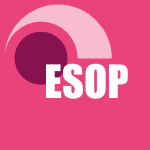 ESOP-2007-LarsenNW #automaton #interface
ESOP-2007-LarsenNW #automaton #interface- Modal I/O Automata for Interface and Product Line Theories (KGL, UN, AW), pp. 64–79.
 FASE-2007-Bosch #composition #towards
FASE-2007-Bosch #composition #towards- Software Product Families: Towards Compositionality (JB), pp. 1–10.
 FASE-2007-ReisMP #integration #modelling #testing
FASE-2007-ReisMP #integration #modelling #testing- Integration Testing in Software Product Line Engineering: A Model-Based Technique (SR, AM, KP), pp. 321–335.
 FASE-2007-SanchezSM #concurrent #distributed #protocol
FASE-2007-SanchezSM #concurrent #distributed #protocol- A Family of Distributed Deadlock Avoidance Protocols and Their Reachable State Spaces (CS, HBS, ZM), pp. 155–169.
 SAT-2007-SchederZ #exponential #satisfiability
SAT-2007-SchederZ #exponential #satisfiability- Satisfiability with Exponential Families (DS, PZ), pp. 148–158.
 CBSE-2006-CervantesC #architecture #lightweight #using #workflow
CBSE-2006-CervantesC #architecture #lightweight #using #workflow- Using a Lightweight Workflow Engine in a Plugin-Based Product Line Architecture (HC, SCV), pp. 198–205.
 CBSE-2006-XieB #component #verification
CBSE-2006-XieB #component #verification- Verification of Component-Based Software Application Families (FX, JCB), pp. 50–66.
 QoSA-2006-Bosch #problem
QoSA-2006-Bosch #problem- Expanding the Scope of Software Product Families: Problems and Alternative Approaches (JB), p. 1.
 WCRE-2006-GanesanMKY #aspect-oriented #case study #source code
WCRE-2006-GanesanMKY #aspect-oriented #case study #source code- Discovering Organizational Aspects from the Source Code History Log during the Product Line Planning Phase — A Case Study (DG, DM, JK, KY), pp. 211–220.
 CIAA-2006-PargaGR #algorithm #regular expression
CIAA-2006-PargaGR #algorithm #regular expression- A Family of Algorithms for Non Deterministic Regular Languages Inference (MVdP, PG, JR), pp. 265–274.
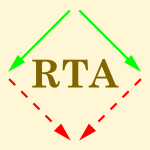 RTA-2006-Bruggink #finite #higher-order #proving #using
RTA-2006-Bruggink #finite #higher-order #proving #using- A Proof of Finite Family Developments for Higher-Order Rewriting Using a Prefix Property (HJSB), pp. 372–386.
 CHI-2006-Dawe #how
CHI-2006-Dawe #how- Desperately seeking simplicity: how young adults with cognitive disabilities and their families adopt assistive technologies (MD), pp. 1143–1152.
 CHI-2006-NeustaedterB #design
CHI-2006-NeustaedterB #design- ”LINC-ing“ the family: the participatory design of an inkable family calendar (CN, AJBB), pp. 141–150.
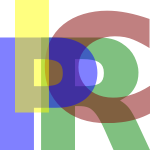 ICPR-v3-2006-DuongPBV #behaviour #exponential #markov #modelling #recognition
ICPR-v3-2006-DuongPBV #behaviour #exponential #markov #modelling #recognition- Human Behavior Recognition with Generic Exponential Family Duration Modeling in the Hidden Semi-Markov Model (TVD, DQP, HHB, SV), pp. 202–207.
 SEKE-2006-ChangLK #architecture #metric
SEKE-2006-ChangLK #architecture #metric- Key Issues and Metrics for Evaluating Product Line Architectures (SHC, HJL, SDK), pp. 212–219.
 SEKE-2006-LiuBGRTOA #distributed #embedded #framework #named #realtime
SEKE-2006-LiuBGRTOA #distributed #embedded #framework #named #realtime- QoSPL: A QoS-Driven Software Product Line Engineering Framework for Distributed Real-time and Embedded Systems (SHL, BRB, JGG, RRR, MT, AMO, MA), pp. 724–729.
 ECMDA-FA-2006-KulkarniR #architecture #enterprise #framework #modelling
ECMDA-FA-2006-KulkarniR #architecture #enterprise #framework #modelling- A Model-Driven Architectural Framework for Integration-Capable Enterprise Application Product Lines (VK, SR), pp. 1–12.
 MoDELS-2006-Gomaa #architecture #design #modelling #realtime
MoDELS-2006-Gomaa #architecture #design #modelling #realtime- A Software Modeling Odyssey: Designing Evolutionary Architecture-Centric Real-Time Systems and Product Lines (HG), pp. 1–15.
 SPL-BOOK-2006-ArciniegasDRCBO #architecture #evolution #reasoning #security
SPL-BOOK-2006-ArciniegasDRCBO #architecture #evolution #reasoning #security- Architecture Reasoning for Supporting Product Line Evolution: An Example on Security (JLA, JCD, JLR, RC, JBM, MO), pp. 327–372.
 SPL-BOOK-2006-BayerGHMMOTTW #modelling #variability
SPL-BOOK-2006-BayerGHMMOTTW #modelling #variability- Consolidated Product Line Variability Modeling (JB, SG, ØH, JXM, BMP, JO, PT, JPT, TW), pp. 195–241.
 SPL-BOOK-2006-BertolinoFGL #case study #requirements #specification #testing
SPL-BOOK-2006-BertolinoFGL #case study #requirements #specification #testing- Product Line Use Cases: Scenario-Based Specification and Testing of Requirements (AB, AF, SG, GL), pp. 425–445.
 SPL-BOOK-2006-Engelsma #diagrams #evolution #incremental #integration #multi #using
SPL-BOOK-2006-Engelsma #diagrams #evolution #incremental #integration #multi #using- Incremental Systems Integration within Multidisciplinary Product Line Engineering Using Configuration Item Evolution Diagrams (EE), pp. 523–555.
 SPL-BOOK-2006-FaegriH #architecture #security
SPL-BOOK-2006-FaegriH #architecture #security- A Software Product Line Reference Architecture for Security (TEF, SOH), pp. 275–326.
 SPL-BOOK-2006-John #documentation #legacy
SPL-BOOK-2006-John #documentation #legacy- Capturing Product Line Information from Legacy User Documentation (IJ), pp. 127–159.
 SPL-BOOK-2006-NebutTJ #requirements #testing
SPL-BOOK-2006-NebutTJ #requirements #testing- System Testing of Product Lines: From Requirements to Test Cases (CN, YLT, JMJ), pp. 447–477.
 SPL-BOOK-2006-OldevikSHM #evaluation #framework #modelling #tool support
SPL-BOOK-2006-OldevikSHM #evaluation #framework #modelling #tool support- Evaluation Framework for Model-Driven Product Line Engineering Tools (JO, AS, ØH, BMP), pp. 589–618.
 SPL-BOOK-2006-ReuysRKP #testing
SPL-BOOK-2006-ReuysRKP #testing- The ScenTED Method for Testing Software Product Lines (AR, SR, EK, KP), pp. 479–520.
 SPL-BOOK-2006-RommesA #architecture
SPL-BOOK-2006-RommesA #architecture- A Scenario-Based Method for Software Product Line Architecting (ER, PA), pp. 3–52.
 SPL-BOOK-2006-Wesselius
SPL-BOOK-2006-Wesselius - Strategic Scenario-Based Valuation of Product Line Roadmaps (JHW), pp. 53–89.
 SPL-BOOK-2006-ZiadiJ #uml
SPL-BOOK-2006-ZiadiJ #uml- Software Product Line Engineering with the UML: Deriving Products (TZ, JMJ), pp. 557–588.
 SPLC-2006-Batory #composition
SPLC-2006-Batory #composition- Feature Modularity in Software Product Lines (DSB), p. 230.
 SPLC-2006-Berenbach #requirements
SPLC-2006-Berenbach #requirements- Introduction to Product Line Requirements Engineering (BB), p. 215.
 SPLC-2006-Beuche #legacy
SPLC-2006-Beuche #legacy- Transforming Legacy Systems into Software Product Lines (DB), p. 223.
 SPLC-2006-BrownGBSKG #behaviour #embedded #feature model #modelling #weaving
SPLC-2006-BrownGBSKG #behaviour #embedded #feature model #modelling #weaving- Weaving Behavior into Feature Models for Embedded System Families (TJB, RG, RB, ITAS, PK, CG), pp. 52–64.
 SPLC-2006-Donohoe
SPLC-2006-Donohoe - Introduction to Software Product Lines (PD), p. 217.
 SPLC-2006-GanesanMY #predict
SPLC-2006-GanesanMY #predict- Predicting Return-on-Investment for Product Line Generations (DG, DM, KY), pp. 13–22.
 SPLC-2006-Gomaa #architecture #case study #design #uml
SPLC-2006-Gomaa #architecture #case study #design #uml- Designing Software Product Lines with UML 2.0: From Use Cases to Pattern-Based Software Architectures (HG), p. 218.
 SPLC-2006-HallsteinsenSSF #adaptation #using
SPLC-2006-HallsteinsenSSF #adaptation #using- Using Product Line Techniques to Build Adaptive Systems (SOH, ES, AS, JF), pp. 141–150.
 SPLC-2006-HelferichSH
SPLC-2006-HelferichSH - Reconciling Marketed and Engineered Software Product Lines (AH, KS, GH), p. 23–?.
 SPLC-2006-JohnKLM
SPLC-2006-JohnKLM - A Practical Guide to Product Line Scoping (IJ, JK, TL, DM), pp. 3–12.
 SPLC-2006-KircherSG #approach #challenge
SPLC-2006-KircherSG #approach #challenge- Transitioning to a Software Product Family Approach — Challenges and Best Practices (MK, CS, IG), pp. 163–171.
 SPLC-2006-KolbJKMHM #case study #development #embedded #experience
SPLC-2006-KolbJKMHM #case study #development #embedded #experience- Experiences with Product Line Development of Embedded Systems at Testo AG (RK, IJ, JK, DM, UH, GM), pp. 172–181.
 SPLC-2006-KolbM #architecture #quality
SPLC-2006-KolbM #architecture #quality- Architecture-Centric Quality Engineering form Software Product Lines (RK, DM), p. 226.
 SPLC-2006-KoskiL
SPLC-2006-KoskiL - The JTRS Program: Software-Defined Radios as a Software Product Line (EK, CL), pp. 182–191.
 SPLC-2006-Krueger #development
SPLC-2006-Krueger #development- New Methods in Software Product Line Development (CWK), pp. 95–102.
 SPLC-2006-Krueger06a #generative #named #tutorial
SPLC-2006-Krueger06a #generative #named #tutorial- Tutorial: New Methods Behind the New Generation of Software Product Line Success Stories (CWK), p. 216.
 SPLC-2006-LeeK #approach #configuration management #feature model
SPLC-2006-LeeK #approach #configuration management #feature model- A Feature-Oriented Approach to Developing Dynamically Reconfigurable Products in Product Line Engineering (JL, KCK), pp. 131–140.
 SPLC-2006-LeeKKP #analysis #aspect-oriented #development #feature model #programming
SPLC-2006-LeeKKP #analysis #aspect-oriented #development #feature model #programming- Combining Feature-Oriented Analysis and Aspect-Oriented Programming for Product Line Asset Development (KL, KCK, MK, SP), pp. 103–112.
 SPLC-2006-McGregor #reuse #testing
SPLC-2006-McGregor #reuse #testing- Building Reusable Testing Assets for a Software Product Line (JDM), p. 220.
 SPLC-2006-NorthropJ
SPLC-2006-NorthropJ - Introduction to Software Product Line Adoption (LMN, LGJ), p. 222.
 SPLC-2006-PohlLM #variability
SPLC-2006-PohlLM #variability- Software Product Line Variability Management (KP, FvdL, AM), p. 219.
 SPLC-2006-Sangal #dependence #lightweight #modelling
SPLC-2006-Sangal #dependence #lightweight #modelling- Lightweight Dependency Models for Product Lines (NS), p. 228.
 SPLC-2006-Scheidemann #distributed #embedded #evolution #optimisation #verification
SPLC-2006-Scheidemann #distributed #embedded #evolution #optimisation #verification- Optimizing the Selection of Representative Configurations in Verification of Evolving Product Lines of Distributed Embedded Systems (KDS), pp. 75–84.
 SPLC-2006-SchmidKE #requirements #tool support
SPLC-2006-SchmidKE #requirements #tool support- Requirements Management for Product Lines: Extending Professional Tools (KS, KK, ME), pp. 113–122.
 SPLC-2006-Tolvanen #code generation #modelling
SPLC-2006-Tolvanen #code generation #modelling- Domain-Specific Modeling and Code Generation for Product Lines (JPT), p. 229.
 SPLC-2006-Trask #modelling
SPLC-2006-Trask #modelling- Leveraging Model Driven Engineering in Software Product Lines (BT), p. 221.
 SPLC-2006-TraskRPB #component #modelling #using
SPLC-2006-TraskRPB #component #modelling #using- Using Model-Driven Engineering to Complement Software Product Line Engineering in Developing Software Defined Radio Components and Applications (BT, AR, DP, VB), pp. 192–202.
 SPLC-2006-WeissCKK #hall of fame
SPLC-2006-WeissCKK #hall of fame- Software Product Line Hall of Fame (DMW, PCC, KK, CWK), p. 237.
 MoDELS-2006-Gomaa #architecture #design #modelling #realtime
MoDELS-2006-Gomaa #architecture #design #modelling #realtime- A Software Modeling Odyssey: Designing Evolutionary Architecture-Centric Real-Time Systems and Product Lines (HG), pp. 1–15.
 RE-2006-ReiserW #multi
RE-2006-ReiserW #multi- Managing Highly Complex Product Families with Multi-Level Feature Trees (MOR, MW), pp. 146–155.
 ASE-2006-Dhungana #architecture #modelling #variability
ASE-2006-Dhungana #architecture #modelling #variability- Integrated Variability Modeling of Features and Architecture in Software Product Line Engineering (DD), pp. 327–330.
 ICSE-2006-JarzabekP06a #effectiveness #reuse #web
ICSE-2006-JarzabekP06a #effectiveness #reuse #web- Cost-effective engineering of web applications pragmatic reuse: building web application product lines (SJ, UP), pp. 1053–1054.
 ICSE-2006-KimKASCK #named #testing
ICSE-2006-KimKASCK #named #testing- ASADAL: a tool system for co-development of software and test environment based on product line engineering (KK, HK, MA, MS, YC, KCK), pp. 783–786.
 ICSE-2006-PohlM #variability
ICSE-2006-PohlM #variability- Variability management in software product line engineering (KP, AM), pp. 1049–1050.
 GPCE-2006-AlvesGMKBL #refactoring
GPCE-2006-AlvesGMKBL #refactoring- Refactoring product lines (VA, RG, TM, UK, PB, CJPdL), pp. 201–210.
 GPCE-2006-TrujilloBD #multi #refactoring
GPCE-2006-TrujilloBD #multi #refactoring- Feature refactoring a multi-representation program into a product line (ST, DSB, OD), pp. 191–200.
 CASE-2006-RaghavanV #optimisation #parallel #scheduling #using
CASE-2006-RaghavanV #optimisation #parallel #scheduling #using- Scheduling Parallel Batch Processors with Incompatible Job Families Using Ant Colony Optimization (NRSR, MV), pp. 507–512.
 DAC-2006-AziziN
DAC-2006-AziziN - A family of cells to reduce the soft-error-rate in ternary-CAM (NA, FNN), pp. 779–784.
 WICSA-2005-BrownBGSK #architecture #development #embedded
WICSA-2005-BrownBGSK #architecture #development #embedded- Feature-Guided Architecture Development for Embedded System Families (TJB, RB, CG, ITAS, PK), pp. 223–226.
 WICSA-2005-CapillaD #component #integration #problem #web
WICSA-2005-CapillaD #component #integration #problem #web- Integration Problems of Core Components in a Web Product Line (RC, JCD), pp. 215–216.
 WICSA-2005-OlumofinM #architecture #evaluation
WICSA-2005-OlumofinM #architecture #evaluation- Extending the ATAM Architecture Evaluation to Product Line Architectures (FGO, VBM), pp. 45–56.
 WICSA-2005-Rosso #architecture #embedded #memory management #realtime
WICSA-2005-Rosso #architecture #embedded #memory management #realtime- Dynamic Memory Management for Software Product Family Architectures in Embedded Real-Time Systems (CDR), pp. 211–212.
 CSMR-2005-KnodelFG #architecture #design
CSMR-2005-KnodelFG #architecture #design- Comparing Design Alternatives from Field-Tested Systems to Support Product Line Architecture Design (JK, TF, JFG), pp. 344–353.
 ICSM-2005-KolbMPY #case study #component #legacy #refactoring #reuse
ICSM-2005-KolbMPY #case study #component #legacy #refactoring #reuse- A Case Study in Refactoring a Legacy Component for Reuse in a Product Line (RK, DM, TP, KY), pp. 369–378.
 MSR-2005-FischerORG #evolution #mining
MSR-2005-FischerORG #evolution #mining- Mining evolution data of a product family (MF, JO, JR, HCG), pp. 36–40.
 WCRE-2005-GraafOC #re-engineering #towards
WCRE-2005-GraafOC #re-engineering #towards- Reengineering towards Product Lines (R2PL 2005) (BG, LO, RC), p. 231.
 WCRE-2005-KnodelJGPUAR
WCRE-2005-KnodelJGPUAR - Asset Recovery and Their Incorporation into Product Lines (JK, IJ, DG, MP, FU, JLA, CR), pp. 120–129.
 DLT-J-2004-DassowH05 #problem
DLT-J-2004-DassowH05 #problem- Language families defined by a ciliate bio-operation: hierarchies and decision problems (JD, MH), pp. 645–662.
 IFM-2005-Parnas #documentation
IFM-2005-Parnas #documentation- A Family of Mathematical Methods for Professional Software Documentation (DLP), pp. 1–4.
 CHI-2005-RowanM
CHI-2005-RowanM - Digital Family Portrait Field Trial: Support for Aging in Place (JR, EDM), pp. 521–530.
 CAiSE-2005-ReuysKPR #modelling #testing
CAiSE-2005-ReuysKPR #modelling #testing- Model-Based System Testing of Software Product Families (AR, EK, KP, SR), pp. 519–534.
 CIKM-2005-CoutoSC #correlation #ontology #semantics #similarity
CIKM-2005-CoutoSC #correlation #ontology #semantics #similarity- Semantic similarity over the gene ontology: family correlation and selecting disjunctive ancestors (FMC, MJS, PC), pp. 343–344.
 LSO-2005-DeckerM #approach #community #evolution
LSO-2005-DeckerM #approach #community #evolution- A Community Based Approach for Organizing Software Product Line Evolution (BD, DM), pp. 62–66.
 LSO-2005-FaegriDJLV #community
LSO-2005-FaegriDJLV #community- Exploring Communities of Practice for Product Family Engineering (TEF, TD, LJ, PL, HvV), pp. 87–91.
 MLDM-2005-TakigawaKN #classification #combinator #set #subclass
MLDM-2005-TakigawaKN #classification #combinator #set #subclass- The Convex Subclass Method: Combinatorial Classifier Based on a Family of Convex Sets (IT, MK, AN), pp. 90–99.
 SEKE-2005-LamineJG #case study #estimation #named #reuse
SEKE-2005-LamineJG #case study #estimation #named #reuse- Reuse: Case of a Software Cost Estimation Model for Product Line Engineering (SBABL, LLJ, HHBG), pp. 657–660.
 SEKE-2005-MarewKB #aspect-oriented #case study #composition #development #functional #using
SEKE-2005-MarewKB #aspect-oriented #case study #composition #development #functional #using- Case Study on Systematic Functional Decomposition in a Product Line using Aspect Oriented Software Development (TM, JK, DHB), pp. 152–157.
 SEKE-2005-Weiss
SEKE-2005-Weiss - Software Product Line Engineering (DMW), p. 11.
 SPLC-2005-AlvesMCBR #evolution #game studies #mobile
SPLC-2005-AlvesMCBR #evolution #game studies #mobile- Extracting and Evolving Mobile Games Product Lines (VA, PMJ, LC, PB, GR), pp. 70–81.
 SPLC-2005-Bockle
SPLC-2005-Bockle - Innovation Management for Product Line Engineering Organizations (GB), pp. 124–134.
 SPLC-2005-Bosch
SPLC-2005-Bosch - Software Product Families in Nokia (JB), pp. 2–6.
 SPLC-2005-Clements #contest #modelling
SPLC-2005-Clements #contest #modelling- A Competition of Software Product Line Economic Models (PCC), p. 136.
 SPLC-2005-EtxeberriaM #architecture #evaluation
SPLC-2005-EtxeberriaM #architecture #evaluation- Product-Line Architecture: New Issues for Evaluation (LE, GSM), pp. 174–185.
 SPLC-2005-HaugenMO #comparison #modelling #system family
SPLC-2005-HaugenMO #comparison #modelling #system family- Comparison of System Family Modeling Approaches (ØH, BMP, JO), pp. 102–112.
 SPLC-2005-HelferichHS #deployment #named #quality #using
SPLC-2005-HelferichHS #deployment #named #quality #using- QFD-PPP: Product Line Portfolio Planning Using Quality Function Deployment (AH, GH, SS), pp. 162–173.
 SPLC-2005-KangKLK #case study #feature model #legacy #re-engineering
SPLC-2005-KangKLK #case study #feature model #legacy #re-engineering- Feature-Oriented Re-engineering of Legacy Systems into Product Line Assets — a Case Study (KCK, MK, JL, BK), pp. 45–56.
 SPLC-2005-KishiNK #design #development #verification
SPLC-2005-KishiNK #design #development #verification- Design Verification for Product Line Development (TK, NN, TK), pp. 150–161.
 SPLC-2005-LamineJG #component #estimation #off the shelf #using
SPLC-2005-LamineJG #component #estimation #off the shelf #using- Cost Estimation for Product Line Engineering Using COTS Components (SBABL, LLJ, HHBG), pp. 113–123.
 SPLC-2005-MatturroS #approach #knowledge-based
SPLC-2005-MatturroS #approach #knowledge-based- A Knowledge-Based Perspective for Preparing the Transition to a Software Product Line Approach (GM, AS), pp. 96–101.
 SPLC-2005-Niemela #architecture #development
SPLC-2005-Niemela #architecture #development- Strategies of Product Family Architecture Development (EN), pp. 186–197.
 SPLC-2005-TessierGTG #modelling #system family #using
SPLC-2005-TessierGTG #modelling #system family #using- Using Variation Propagation for Model-Driven Management of a System Family (PT, SG, FT, JMG), pp. 222–233.
 SPLC-2005-Trew #architecture #delivery #embedded #integration
SPLC-2005-Trew #architecture #delivery #embedded #integration- Enabling the Smooth Integration of Core Assets: Defining and Packaging Architectural Rules for a Family of Embedded Products (TT), pp. 137–149.
 SPLC-2005-Weiss #generative
SPLC-2005-Weiss #generative- Next Generation Software Product Line Engineering (DMW), p. 1.
 SPLC-2005-ZhangJ #experience #industrial #mobile #performance #reuse
SPLC-2005-ZhangJ #experience #industrial #mobile #performance #reuse- Reuse without Compromising Performance: Industrial Experience from RPG Software Product Line for Mobile Devices (WZ, SJ), pp. 57–69.
 RE-2005-BuhneLP #modelling #requirements #variability
RE-2005-BuhneLP #modelling #requirements #variability- Modelling Requirements Variability across Product Lines (SB, KL, KP), pp. 41–52.
 ASE-2005-ErikssonMBB #case study #modelling #tool support
ASE-2005-ErikssonMBB #case study #modelling #tool support- The PLUSS toolkit — extending telelogic DOORS and IBM-rational rose to support product line use case modeling (ME, HM, JB, KB), pp. 300–304.
 ASE-2005-Kemmerer #design #detection #implementation
ASE-2005-Kemmerer #design #detection #implementation- Designing and implementing a family of intrusion detection systems (RAK), p. 3.
 ESEC-FSE-2005-PetterssonJ #approach #experience #industrial #lightweight #using #web
ESEC-FSE-2005-PetterssonJ #approach #experience #industrial #lightweight #using #web- Industrial experience with building a web portal product line using a lightweight, reactive approach (UP, SJ), pp. 326–335.
 ICSE-2005-VerlageK
ICSE-2005-VerlageK - Five years of product line engineering in a small company (MV, TK), pp. 534–543.
 SAC-2005-BalzeraniRPA #architecture #web
SAC-2005-BalzeraniRPA #architecture #web- A product line architecture for web applications (LB, DDR, AP, GDA), pp. 1689–1693.
 SAC-2005-BlakeCRIG #case study #component #development #specification
SAC-2005-BlakeCRIG #case study #component #development #specification- Use case-driven component specification: a medical applications perspective to product line development (MBB, KC, SR, LI, KG), pp. 1470–1477.
 DATE-2005-HeusalaL #configuration management #modelling
DATE-2005-HeusalaL #configuration management #modelling- Modeling of a Reconfigurable OFDM IP Block Family For an RF System Simulator (HH, JL), pp. 136–137.
 A-MOST-2005-OlimpiewG #modelling #testing
A-MOST-2005-OlimpiewG #modelling #testing- Model-based testing for applications derived from software product lines (EMO, HG), pp. 25–31.
 WICSA-2004-LesaintP #architecture #aspect-oriented #configuration management #constraints #implementation
WICSA-2004-LesaintP #architecture #aspect-oriented #configuration management #constraints #implementation- Aspects and Constraints for Implementing Configurable Product-Line Architectures (DL, GP), pp. 135–144.
 WICSA-2004-Matinlassi #architecture #case study #maintenance
WICSA-2004-Matinlassi #architecture #case study #maintenance- Evaluating the Portability and Maintainability of Software Product Family Architecture: Terminal Software Case Study (MM), pp. 295–300.
 WICSA-2004-MeisterRR #analysis #architecture #statistics
WICSA-2004-MeisterRR #analysis #architecture #statistics- Applying Patterns to Develop a Product Line Architecture for Statistical Analysis Software (JM, RHR, MR), pp. 291–294.
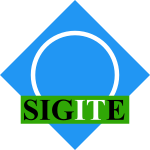 SIGITE-2004-KamaliCL
SIGITE-2004-KamaliCL - Keeping family of computing related disciplines together (RK, LNC, RJL), pp. 241–243.
 CSMR-2004-Rosso #architecture #lessons learnt #mobile #performance #process
CSMR-2004-Rosso #architecture #lessons learnt #mobile #performance #process- The Process of and the Lessons Learned from Performance Tuning of a Product Family Software Architecture for Mobile Phones (CDR), pp. 270–278.
 ICSM-2004-DeelstraSNB #named #variability
ICSM-2004-DeelstraSNB #named #variability- COSVAM: A Technique for Assessing Software Variability in Software Product Families (SD, MS, JN, JB), pp. 458–462.
 DLT-2004-Dassow
DLT-2004-Dassow - A Ciliate Bio-operation and Language Families (JD), pp. 151–162.
 CIKM-2004-Banaei-KashaniS #data access #named #network #peer-to-peer
CIKM-2004-Banaei-KashaniS #data access #named #network #peer-to-peer- SWAM: a family of access methods for similarity-search in peer-to-peer data networks (FBK, CS), pp. 304–313.
 ICML-2004-BanerjeeDGM #analysis #estimation #exponential
ICML-2004-BanerjeeDGM #analysis #estimation #exponential- An information theoretic analysis of maximum likelihood mixture estimation for exponential families (AB, ISD, JG, SM).
 SPLC-2004-AmericaHIOR #architecture #variability
SPLC-2004-AmericaHIOR #architecture #variability- Scenario-Based Decision Making for Architectural Variability in Product Families (PA, DKH, MTI, JHO, ER), pp. 284–303.
 SPLC-2004-Bosch #component #development #on the
SPLC-2004-Bosch #component #development #on the- On the Development of Software Product-Family Components (JB), pp. 146–164.
 SPLC-2004-ChastekD #analysis
SPLC-2004-ChastekD #analysis- Product Line Analysis (GJC, PD), p. 310.
 SPLC-2004-CohenZC #metric
SPLC-2004-CohenZC #metric- Developing a Measurement Program for Software Product Lines (SC, DZ, GJC), p. 318.
 SPLC-2004-DeelstraSB #case study #experience #problem
SPLC-2004-DeelstraSB #case study #experience #problem- Experiences in Software Product Families: Problems and Issues During Product Derivation (SD, MS, JB), pp. 165–182.
 SPLC-2004-FantechiGLN #case study #verification
SPLC-2004-FantechiGLN #case study #verification- A Methodology for the Derivation and Verification of Use Cases for Product Lines (AF, SG, GL, EN), pp. 255–265.
 SPLC-2004-FritschH #analysis
SPLC-2004-FritschH #analysis- Product Line Potential Analysis (CF, RH), pp. 228–237.
 SPLC-2004-FritschR #adaptation #approach
SPLC-2004-FritschR #adaptation #approach- Four Mechanisms for Adaptable Systems: A Meta-level Approach to Building a Software Product Line (CF, BR), pp. 51–72.
 SPLC-2004-Geppert #development #how #question #testing
SPLC-2004-Geppert #development #how #question #testing- How Can Testing Keep Pace with Accelerated Development in Software Product Line Engineering? (CWK, BG), pp. 308–309.
 SPLC-2004-Gomaa #design #modelling #uml
SPLC-2004-Gomaa #design #modelling #uml- Designing Software Product Lines with the Unified Modeling Language (UML) (HG), p. 317.
 SPLC-2004-JohnS
SPLC-2004-JohnS - Starting Product Lines (I) — Systematic Product Line Planning and Adoption (IJ, KS), p. 319.
 SPLC-2004-JohnS04a #analysis #modelling
SPLC-2004-JohnS04a #analysis #modelling- Starting Product Lines (II) — Product Line Analysis and Modeling (IJ, KS), p. 320.
 SPLC-2004-JolleyKB
SPLC-2004-JolleyKB - Governing Software Product Lines and Reorganizations (TMJ, DJK, TRB), pp. 1–17.
 SPLC-2004-KleinHW
SPLC-2004-KleinHW - Industrial-Strength Software Product Line Engineering (JK, DH, DMW), p. 311.
 SPLC-2004-KolbM #assurance #quality
SPLC-2004-KolbM #assurance #quality- Quality Assurance for Software Product Lines (RK, DM), p. 312.
 SPLC-2004-Krueger #what
SPLC-2004-Krueger #what- Product Line Binding Times: What You Don?t Know Can Hurt You (CWK), pp. 305–306.
 SPLC-2004-Krueger04a
SPLC-2004-Krueger04a - Avoiding, Surviving, and Prevailing over Pitfalls in Product Line Engineering (CWK), p. 307.
 SPLC-2004-LagoV
SPLC-2004-LagoV - Observations from the Recovery of a Software Product Family (PL, HvV), pp. 214–227.
 SPLC-2004-LeeKK #approach
SPLC-2004-LeeKK #approach- A Feature-Based Approach to Product Line Production Planning (JL, KCK, SK), pp. 183–196.
 SPLC-2004-LindenBKKO #evaluation
SPLC-2004-LindenBKKO #evaluation- Software Product Family Evaluation (FvdL, JB, EK, KK, JHO), pp. 110–129.
 SPLC-2004-NiemelaMT #architecture #evaluation
SPLC-2004-NiemelaMT #architecture #evaluation- Practical Evaluation of Software Product Family Architectures (EN, MM, AT), pp. 130–145.
 SPLC-2004-NorthropC
SPLC-2004-NorthropC - An Introduction to Software Product Lines (LMN, PCC), p. 322.
 SPLC-2004-NorthropJ
SPLC-2004-NorthropJ - Adopting Software Product Lines (LMN, LGJ), p. 323.
 SPLC-2004-PaulishPK #architecture #development
SPLC-2004-PaulishPK #architecture #development- Product Line Architectures for Global Software Development (DJP, RP, WK), p. 313.
 SPLC-2004-PavelNR
SPLC-2004-PavelNR - Dynamic Configuration of Software Product Lines in ArchJava (SP, JN, JCR), pp. 90–109.
 SPLC-2004-SinnemaDNB #framework #modelling #named #variability
SPLC-2004-SinnemaDNB #framework #modelling #named #variability- COVAMOF: A Framework for Modeling Variability in Software Product Families (MS, SD, JN, JB), pp. 197–213.
 SPLC-2004-SnyderLRW
SPLC-2004-SnyderLRW - Software Product Line Support in Coremetrics OA2004 (JS, HL, SR, JW), pp. 18–33.
 SPLC-2004-Taborda #architecture #release planning
SPLC-2004-Taborda #architecture #release planning- Generalized Release Planning for Product Line Architectures (LJMT), pp. 238–254.
 SPLC-2004-Wesowski #automation #generative #strict
SPLC-2004-Wesowski #automation #generative #strict- Automatic Generation of Program Families by Model Restrictions (AW), pp. 73–89.
 TOOLS-USA-2003-HallstromSSAL04 #approach #object-oriented
TOOLS-USA-2003-HallstromSSAL04 #approach #object-oriented- A Container-Based Approach to Object-Oriented Product Lines (JOH, NS, PAGS, AA, WL), pp. 161–175.
 ASE-2004-BlundellFKH #interface #verification
ASE-2004-BlundellFKH #interface #verification- Parameterized Interfaces for Open System Verification of Product Lines (CB, KF, SK, PVH), pp. 258–267.
 ICSE-2004-Matinlassi #architecture #comparison #design #performance
ICSE-2004-Matinlassi #architecture #comparison #design #performance- Comparison of Software Product Line Architecture Design Methods: COPA, FAST, FORM, KobrA and QADA (MM), pp. 127–136.
 GPCE-2004-KovseG #case study #named #version control
GPCE-2004-KovseG #case study #named #version control- VS-Gen: A Case Study of a Product Line for Versioning Systems (JK, CG), pp. 396–415.
 GPCE-2004-LiuB #automation #synthesis
GPCE-2004-LiuB #automation #synthesis- Automatic Remodularization and Optimized Synthesis of Product-Families (JL, DSB), pp. 379–395.
 STOC-2004-RozenmanSW
STOC-2004-RozenmanSW - A new family of Cayley expanders (?) (ER, AS, AW), pp. 445–454.
 CSMR-2003-CapillaD #evolution #maintenance #web
CSMR-2003-CapillaD #evolution #maintenance #web- Light-Weight Product-Lines for Evolution and Maintenance of Web Site (RC, JCD), pp. 53–62.
 ICSM-2003-GargCCWH #architecture #evolution
ICSM-2003-GargCCWH #architecture #evolution- An Environment for Managing Evolving Product Line Architectures (AG, MC, PC, CvdW, AvdH), p. 358–?.
 DLT-2003-Plandowski #scalability #testing
DLT-2003-Plandowski #scalability #testing- Test Sets for Large Families of Languages (WP), pp. 75–94.
 DiGRA-2003-Sicart #game studies
DiGRA-2003-Sicart #game studies- Family Values: Ideology, Computer Games & Sims (MS).
 CHI-2003-HutchinsonMWBDPBCEHRE #design
CHI-2003-HutchinsonMWBDPBCEHRE #design- Technology probes: inspiring design for and with families (HH, WEM, BW, BBB, AD, CP, MBL, SC, HE, HH, NR, BE), pp. 17–24.
 CAiSE-2003-ZhangJY #assessment #predict #quality
CAiSE-2003-ZhangJY #assessment #predict #quality- Quality Prediction and Assessment for Product Lines (HZ, SJ, BY), pp. 681–695.
 SEKE-2003-ZhangJ #approach #development
SEKE-2003-ZhangJ #approach #development- An XVCL-based Approach to Software Product Line Development (HZ, SJ), pp. 267–275.
 RE-2003-AoyamaWNM #framework #multi #requirements
RE-2003-AoyamaWNM #framework #multi #requirements- Embracing Requirements Variety for e-Governments Based on Multiple Product-Lines Frameworks (MA, KW, YN, YM), p. 285.
 ASE-2003-NebutPTJ #automation #generative #testing
ASE-2003-NebutPTJ #automation #generative #testing- Automated Requirements-based Generation of Test Cases for Product Families (CN, SP, YLT, JMJ), pp. 263–266.
 ESEC-FSE-2003-BertolinoG #case study #testing
ESEC-FSE-2003-BertolinoG #case study #testing- Use case-based testing of product lines (AB, SG), pp. 355–358.
 ESEC-FSE-2003-KapfhammerS #test coverage #testing
ESEC-FSE-2003-KapfhammerS #test coverage #testing- A family of test adequacy criteria for database-driven applications (GMK, MLS), pp. 98–107.
 ESEC-FSE-2003-VignaVK #design #detection #implementation
ESEC-FSE-2003-VignaVK #design #detection #implementation- Designing and implementing a family of intrusion detection systems (GV, FV, RAK), pp. 88–97.
 ICSE-2003-Batory #programming #tutorial
ICSE-2003-Batory #programming #tutorial- A Tutorial on Feature Oriented Programming and Product-Lines (DSB), pp. 753–754.
 ICSE-2003-EbertS #concept
ICSE-2003-EbertS #concept- Tricks and Traps of Initiating a Product Line Concept in Existing Product (CE, MS), pp. 520–527.
 ICSE-2003-KleinPW
ICSE-2003-KleinPW - Industrial-Strength Software Product-Line Engineering (JK, BP, DMW), pp. 751–752.
 CBSE-2002-LarssonWNC #architecture #embedded #predict #using
CBSE-2002-LarssonWNC #architecture #embedded #predict #using- Using Prediction Enabled Technologies for Embedded Product Line Architectures (ML, AW, CN, IC), p. 12.
 WICSA-2002-MedvidovicMM #architecture #framework #implementation
WICSA-2002-MedvidovicMM #architecture #framework #implementation- A Family of Software Architecture Implementation Frameworks (NM, NRM, MMR), pp. 221–235.
 VLDB-2002-HeymannTKWRMF #named #network #visual notation
VLDB-2002-HeymannTKWRMF #named #network #visual notation- Viator — A Tool Family for Graphical Networking and Data View Creation (SH, KT, AK, GW, PR, DM, JCF), pp. 1067–1070.
 DLT-2002-DoL #bound #on the
DLT-2002-DoL #bound #on the- On a Family of Codes with Bounded Deciphering Delay (DLV, IL), pp. 369–380.
 DLT-2002-Urvoy #graph
DLT-2002-Urvoy #graph- Abstract Families of Graphs (TU), pp. 381–392.
 ICALP-2002-Colcombet #decidability #first-order #graph #on the #reachability
ICALP-2002-Colcombet #decidability #first-order #graph #on the #reachability- On Families of Graphs Having a Decidable First Order Theory with Reachability (TC), pp. 98–109.
 SEKE-2002-JohanssonH #design #metric
SEKE-2002-JohanssonH #design #metric- Tracking degradation in software product lines through measurement of design rule violations (EJ, MH), pp. 249–254.
 SIGIR-2002-CrammerS #algorithm #online #ranking
SIGIR-2002-CrammerS #algorithm #online #ranking- A new family of online algorithms for category ranking (KC, YS), pp. 151–158.
 SPLC-2002-BockleMKKLLNSW
SPLC-2002-BockleMKKLLNSW - Adopting and Institutionalizing a Product Line Culture (GB, JBM, PK, CWK, JCSdPL, FvdL, LMN, MES, DMW), pp. 49–59.
 SPLC-2002-Bosch #evolution #maturity
SPLC-2002-Bosch #evolution #maturity- Maturity and Evolution in Software Product Lines: Approaches, Artefacts and Organization (JB), pp. 257–271.
 SPLC-2002-BrownSKC #adaptation #component
SPLC-2002-BrownSKC #adaptation #component- Adaptable Components for Software Product Line Engineering (TJB, ITAS, PK, DC), pp. 154–175.
 SPLC-2002-DeursenJK #using
SPLC-2002-DeursenJK #using- Feature-Based Product Line Instantiation Using Source-Level Packages (AvD, MdJ, TK), pp. 217–234.
 SPLC-2002-FerberHS #dependence #feature model #interactive #legacy #modelling #re-engineering
SPLC-2002-FerberHS #dependence #feature model #interactive #legacy #modelling #re-engineering- Feature Interaction and Dependencies: Modeling Features for Reengineering a Legacy Product Line (SF, JH, JS), pp. 235–256.
 SPLC-2002-GeyerB #on the #process
SPLC-2002-GeyerB #on the #process- On the Influence of Variabilities on the Application-Engineering Process of a Product Family (LG, MB), pp. 1–14.
 SPLC-2002-JaringB #case study #representation #variability
SPLC-2002-JaringB #case study #representation #variability- Representing Variability in Software Product Lines: A Case Study (MJ, JB), pp. 15–36.
 SPLC-2002-JolleyKK
SPLC-2002-JolleyKK - Governance Polarities of Internal Product Lines (TMJ, DJK, CEK), pp. 284–298.
 SPLC-2002-KangDKLL #development #using
SPLC-2002-KangDKLL #development #using- Using a Marketing and Product Plan as a Key Driver for Product Line Asset Development (KCK, PD, EK, JL, KL), pp. 366–382.
 SPLC-2002-KishiNK #framework
SPLC-2002-KishiNK #framework- A Method for Product Line Scoping Based on a Decision-Making Framework (TK, NN, TK), pp. 348–365.
 SPLC-2002-Linden #architecture #overview #perspective #platform #process
SPLC-2002-Linden #architecture #overview #perspective #platform #process- Engineering Software Architectures, Processes and Platforms for System Families — ESAPS Overview (FvdL), pp. 383–398.
 SPLC-2002-Mannion #first-order #logic #using #validation
SPLC-2002-Mannion #first-order #logic #using #validation- Using First-Order Logic for Product Line Model Validation (MM), pp. 176–187.
 SPLC-2002-MuthigA #architecture #modelling
SPLC-2002-MuthigA #architecture #modelling- Model-Driven Product Line Architectures (DM, CA), pp. 110–129.
 SPLC-2002-OmmeringB #composition
SPLC-2002-OmmeringB #composition- Widening the Scope of Software Product Lines — From Variation to Composition (RCvO, JB), pp. 328–347.
 SPLC-2002-PreeFR #uml
SPLC-2002-PreeFR #uml- Product Line Annotations with UML-F (WP, MF, BR), pp. 188–197.
 SPLC-2002-SimonE
SPLC-2002-SimonE - Evolutionary Introduction of Software Product Lines (DS, TE), pp. 272–282.
 SPLC-2002-SmithBB #analysis #component #mining #re-engineering #using
SPLC-2002-SmithBB #analysis #component #mining #re-engineering #using- Using the Options Analysis for Reengineering (OAR) Method for Mining Components for a Product Line (DBS, LO, JB), pp. 316–327.
 SPLC-2002-ThielH #architecture #design #integration #variability
SPLC-2002-ThielH #architecture #design #integration #variability- Systematic Integration of Variability into Product Line Architecture Design (ST, AH), pp. 130–153.
 SPLC-2002-VogetB
SPLC-2002-VogetB - Establishing a Software Product Line in an Immature Domain (SV, MB), pp. 60–67.
 SPLC-2002-Wijnstra #approach #platform
SPLC-2002-Wijnstra #approach #platform- Critical Factors for a Successful Platform-Based Product Family Approach (JGW), pp. 68–89.
 SPLC-2002-Zyl #architecture
SPLC-2002-Zyl #architecture- Product Line Architecture and the Separation of Concerns (JvZ), pp. 90–109.
 RE-2002-Ebert #requirements
RE-2002-Ebert #requirements- Requirements Management in a Product Line Scenario (CE), p. 123.
 RE-2002-Schmid #approach
RE-2002-Schmid #approach- The Product Line Mapping Approach to Defining and Structuring Product Portfolios (KS), pp. 219–226.
 ASE-2002-BatoryLM #generative
ASE-2002-BatoryLM #generative- Generating Product-Lines of Product-Families (DSB, RELH, JPM), pp. 81–92.
 ICSE-2002-Maccari #architecture #case study #evolution #experience
ICSE-2002-Maccari #architecture #case study #evolution #experience- Experiences in assessing product family software architecture for evolution (AM), pp. 585–592.
 ICSE-2002-Schmid #approach #validation
ICSE-2002-Schmid #approach #validation- A comprehensive product line scoping approach and its validation (KS), pp. 593–603.
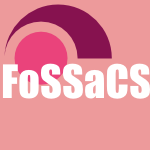 FoSSaCS-2002-GodardM #graph
FoSSaCS-2002-GodardM #graph- A Characterization of Families of Graphs in Which Election Is Possible (EG, YM), pp. 159–172.
 TestCom-2002-Peleska #hardware #integration #testing
TestCom-2002-Peleska #hardware #integration #testing- Hardware/Software Integration Testing for the new Airbus Aircraft Families (JP), p. 335–?.
 WICSA-2001-GurpBS #on the #variability
WICSA-2001-GurpBS #on the #variability- On the Notion of Variability in Software Product Lines (JvG, JB, MS), pp. 45–54.
 WICSA-2001-StoermerO #architecture #mining #named
WICSA-2001-StoermerO #architecture #mining #named- MAP — Mining Architectures for Product Line Evaluations (CS, LO), pp. 35–44.
 CSEET-2001-PortB #delivery #framework #re-engineering #using
CSEET-2001-PortB #delivery #framework #re-engineering #using- Using a Model Framework in Developing and Delivering a Family of Software Engineering Project Courses (DP, BWB), pp. 44–55.
 DLT-2001-BeaudryHNO #on the
DLT-2001-BeaudryHNO #on the- On the Relationship between the McNaughton Families of Languages and the Chomsky Hierarchy (MB, MH, GN, FO), pp. 340–348.
 CHI-2001-MynattRCJ
CHI-2001-MynattRCJ - Digital family portraits: supporting peace of mind for extended family members (EDM, JR, SC, AJ), pp. 333–340.
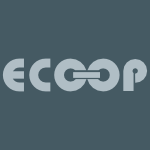 ECOOP-2001-Ernst #morphism #polymorphism
ECOOP-2001-Ernst #morphism #polymorphism- Family Polymorphism (EE), pp. 303–326.
 GCSE-2001-Lopez-HerrejonB #problem #standard
GCSE-2001-Lopez-HerrejonB #problem #standard- A Standard Problem for Evaluating Product-Line Methodologies (RELH, DSB), pp. 10–24.
 GCSE-2001-ZhangJS #approach
GCSE-2001-ZhangJS #approach- XVCL Approach to Separating Concerns in Product Family Assets (HZ, SJ, SMS), pp. 36–47.
 SAIG-2001-Czarnecki #generative #programming
SAIG-2001-Czarnecki #generative #programming- Generative Programming and Software System Families (KC), p. 1.
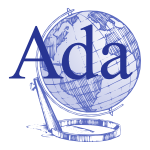 SIGAda-2001-SherrillAH #ada #architecture #implementation
SIGAda-2001-SherrillAH #ada #architecture #implementation- Implementing a product line-based architecture in Ada (JS, JA, GH), pp. 39–46.
 RE-2001-Faulk #approach #case study #requirements #specification
RE-2001-Faulk #approach #case study #requirements #specification- Product-Line Requirements Specification (PRS): An Approach and Case Study (SRF), pp. 48–55.
 RE-2001-Perez-MinanaKA #requirements
RE-2001-Perez-MinanaKA #requirements- Empowering Requirements for a Product Family (EPM, PK, PA), pp. 302–303.
 RE-2001-SavolainenK #consistency #requirements
RE-2001-SavolainenK #consistency #requirements- Consistency Management of Product Line Requirements (JS, JK), pp. 40–47.
 RE-2001-ThompsonH #approach
RE-2001-ThompsonH #approach- Extending the Product Family Approach to Support n-Dimensional and Hierarchical Product Lines (JMT, MPEH), pp. 56–65.
 ASE-2001-Hall #modelling #network #security #specification #validation
ASE-2001-Hall #modelling #network #security #specification #validation- Specification Modeling and Validation Applied to a Family of Network Security Products (RJH), pp. 71–80.
 ESEC-FSE-2001-MannionK
ESEC-FSE-2001-MannionK - Requirements-based product line engineering (MM, HK), pp. 322–323.
 ESEC-FSE-2001-MorisawaT #architecture #distributed
ESEC-FSE-2001-MorisawaT #architecture #distributed- An architectural style of product lines for distributed processing systems, and practical selection method (YM, KT), pp. 11–20.
 ICSE-2001-Bosch
ICSE-2001-Bosch - Software Product Lines: Organizational Alternatives (JB), pp. 91–100.
 ICSE-2001-Bosch01a #architecture #design
ICSE-2001-Bosch01a #architecture #design- Software Product Lines and Software Architecture Design (JB), p. 717.
 ICSE-2001-ButlerBCE #generative
ICSE-2001-ButlerBCE #generative- Generative Techniques for Product Lines (GB, DSB, KC, UWE), pp. 760–761.
 ICSE-2001-SmithOB #analysis #architecture #component #mining #re-engineering
ICSE-2001-SmithOB #analysis #architecture #component #mining #re-engineering- Mining Components for a Software Architecture and a Product Line: the Options Analysis for Reengineering (OAR) Method (DBS, LO, JB), p. 728.
 ICSE-2001-Streitferdt #traceability
ICSE-2001-Streitferdt #traceability- Traceability for System Families (DS), pp. 803–804.
 ICSE-2001-SucciYP #development #named
ICSE-2001-SucciYP #development #named- Holmes: An Intelligent System to Support Software Product Line Development (GS, JY, WP), pp. 829–830.
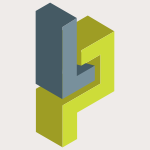 ICLP-2001-BeldiceanuC #constraints
ICLP-2001-BeldiceanuC #constraints- Revisiting the Cardinality Operator and Introducing the Cardinality-Path Constraint Family (NB, MC), pp. 59–73.
 ICML-2000-MuggletonBS #biology #learning #sequence
ICML-2000-MuggletonBS #biology #learning #sequence- Learning Chomsky-like Grammars for Biological Sequence Families (SM, CHB, AS), pp. 631–638.
 ICPR-v2-2000-HansenH #bias #composition #exponential #fault #independence
ICPR-v2-2000-HansenH #bias #composition #exponential #fault #independence- General Bias/Variance Decomposition with Target Independent Variance of Error Functions Derived from the Exponential Family of Distributions (JVH, TH), pp. 2207–2210.
 SPLC-2000-AmericaOOL #architecture #component #framework #named #platform
SPLC-2000-AmericaOOL #architecture #component #framework #named #platform- CoPAM: A component-oriented platform architecting method family for product family engineering (PA, JHO, RCvO, FvdL), pp. 167–180.
 SPLC-2000-AtkinsonBM #approach #component #development
SPLC-2000-AtkinsonBM #approach #component #development- Component-based product line development: the KobrA Approach (CA, JB, DM), pp. 289–310.
 SPLC-2000-BatoryCS #framework #object-oriented
SPLC-2000-BatoryCS #framework #object-oriented- Object-oriented frameworks and product lines (DSB, RC, YS), pp. 227–248.
 SPLC-2000-Bockle #modelling #requirements
SPLC-2000-Bockle #modelling #requirements- Model-based requirements engineering for product lines (GB), pp. 193–204.
 SPLC-2000-Dager #architecture #embedded #experience #realtime
SPLC-2000-Dager #architecture #embedded #experience #realtime- Cummins’s experience in developing a software product line architecture for real-time embedded diesel engine controls (JCD), pp. 23–46.
 SPLC-2000-DoerrS #architecture #dependence #execution
SPLC-2000-DoerrS #architecture #dependence #execution- Freeing product line architectures from execution dependencies (BSD, DS), pp. 313–330.
 SPLC-2000-Griss #aspect-oriented #implementation
SPLC-2000-Griss #aspect-oriented #implementation- Implementing Product-line features by composing aspects (MLG), pp. 271–289.
 SPLC-2000-KishiN #analysis #architecture #aspect-oriented
SPLC-2000-KishiN #analysis #architecture #aspect-oriented- Aspect-oriented analysis for product line architecture (TK, NN), pp. 135–146.
 SPLC-2000-Morisawa #distributed #set
SPLC-2000-Morisawa #distributed #set- A computing model of product lines for distributed processing systems, its product sets, and its applications (YM), pp. 371–394.
 SPLC-2000-PasettiP #concept #development #novel
SPLC-2000-PasettiP #concept #development #novel- Two Novel Concepts for systematic product line development (AP, WP), pp. 249–270.
 SPLC-2000-SchachT #development #evolution #maintenance #named #reuse
SPLC-2000-SchachT #development #evolution #maintenance #named #reuse- Development/maintenance/reuse: software evolution in product lines (SRS, AT), pp. 437–450.
 SPLC-2000-Schmid
SPLC-2000-Schmid - Scoping software product lines (KS), p. 513–?.
 SPLC-2000-Sharp #component #development
SPLC-2000-Sharp #component #development- Component-based product line development of Avionics Software (DCS), pp. 353–370.
 SPLC-2000-StuartSPCWC #development #tool support
SPLC-2000-StuartSPCWC #development #tool support- The SSEP toolset for product line development (DS, WS, SP, DC, FW, TWC), pp. 413–436.
 SPLC-2000-ThielP #approach
SPLC-2000-ThielP #approach- Starting a product line approach for an envisioned market (ST, FP), pp. 495–512.
 SPLC-2000-ToftCO #development
SPLC-2000-ToftCO #development- A cooperative model for cross-divisional product development for a software product line (PT, DC, JTO), pp. 111–132.
 SPLC-2000-Wood
SPLC-2000-Wood - Government product lines (WGW), pp. 183–192.
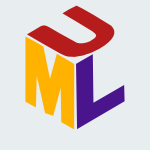 UML-2000-Cook #uml
UML-2000-Cook #uml- The UML family: Profiles, Prefaces and Packages (SC), pp. 255–264.
 TOOLS-EUROPE-2000-Bosch00a
TOOLS-EUROPE-2000-Bosch00a - Software Product Lines (JB), p. 467.
 GCSE-2000-BoschH #case study
GCSE-2000-BoschH #case study- Product Instantiation in Software Product Lines: A Case Study (JB, MH), pp. 147–162.
 SAIG-2000-Batory #architecture
SAIG-2000-Batory #architecture- Refinements and Product Line Architectures (DSB), pp. 3–4.
 ICSE-2000-Batory #architecture #aspect-oriented #reuse
ICSE-2000-Batory #architecture #aspect-oriented #reuse- Product-line architectures, aspects, and reuse (DSB), p. 832.
 ICSE-2000-GannodL #analysis #approach #architecture
ICSE-2000-GannodL #analysis #approach #architecture- An approach to architectural analysis of product lines (GCG, RRL), pp. 548–557.
 ICSE-2000-KuuselaS #requirements
ICSE-2000-KuuselaS #requirements- Requirements engineering for product families (JK, JS), pp. 61–69.
 ICSE-2000-SucciYLP #named
ICSE-2000-SucciYLP #named- Holmes: a system to support software product lines (GS, JY, EL, WP), p. 786.
 SAC-2000-JaberNR #approach #validation
SAC-2000-JaberNR #approach #validation- Product Line Stakeholder Viewpoint Approach and Validation Model (KJ, NN, DCR), pp. 871–875.
 WICSA-1999-BartthallR #architecture #design #embedded
WICSA-1999-BartthallR #architecture #design #embedded- Architecture Design Recovery of a Family of Embedded Software Systems (LB, PR), pp. 3–14.
 WICSA-1999-Bosch #architecture #case study #composition #evolution #reuse
WICSA-1999-Bosch #architecture #case study #composition #evolution #reuse- Evolution and Composition of Reusable Assets in Product-Line Architectures: A Case Study (JB), pp. 321–340.
 WICSA-1999-Pronk #architecture
WICSA-1999-Pronk #architecture- Domain-Specific Architectures and Product Families (BJP), pp. 357–367.
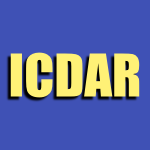 ICDAR-1999-GorskiAABPS #recognition
ICDAR-1999-GorskiAABPS #recognition- A2iA Check Reader: A Family of Bank Check Recognition Systems (NG, VA, EA, OB, DP, JCS), pp. 523–526.
 ICDAR-1999-RemakiC #documentation #image #kernel #using #visual notation
ICDAR-1999-RemakiC #documentation #image #kernel #using #visual notation- Visual Data Extraction from Bi-level Document Images using a Generalized Kernel Family with Compact Support, in Scale-Space (LR, MC), pp. 609–612.
 CAiSE-1999-Jarzabek #component #information management
CAiSE-1999-Jarzabek #component #information management- Component Criteria for Information System Families (SJ), pp. 451–455.
 TOOLS-PACIFIC-1999-CookKWMRW #uml #using
TOOLS-PACIFIC-1999-CookKWMRW #uml #using- Defining UML Family Members Using Prefaces (SC, AK, JW, RM, BR, ACW), pp. 102–114.
 TOOLS-PACIFIC-1999-JorgensenJ #architecture #component #interactive
TOOLS-PACIFIC-1999-JorgensenJ #architecture #component #interactive- Classifying Component Interaction in Product-Line Architectures (BNJ, WJ), pp. 66–77.
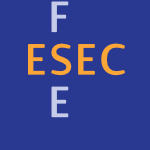 ESEC-FSE-1999-BayerGWDA #architecture #legacy
ESEC-FSE-1999-BayerGWDA #architecture #legacy- Transitioning Legacy Assets to a Product Line Architecture (JB, JFG, MW, JMD, MA), pp. 446–463.
 ICSE-1999-ArdisC #analysis
ICSE-1999-ArdisC #analysis- Defining Families — Commonality Analysis (MAA, DAC), pp. 671–672.
 ICSE-1999-Bosch #architecture #case study #industrial
ICSE-1999-Bosch #architecture #case study #industrial- Product-Line Architectures in Industry: A Case Study (JB), pp. 544–554.
 ICSE-1999-DeBaudS #approach
ICSE-1999-DeBaudS #approach- A Systematic Approach to Derive the Scope of Software Product Lines (JMD, KS), pp. 34–43.
 ICSE-1999-MannionKW #requirements #reuse
ICSE-1999-MannionKW #requirements #reuse- Reusing Single System Requirements from Application Family Requirements (MM, HK, JW), pp. 453–462.
 DATE-1999-FournierAL #functional #using #verification
DATE-1999-FournierAL #functional #using #verification- Functional Verification Methodology for Microprocessors Using the Genesys Test-Program Generator-Application to the x86 Microprocessors Family (LF, YA, ML), pp. 434–441.
 ICPR-1998-ImNK #case study
ICPR-1998-ImNK #case study- Recognizing plant species by leaf shapes-a case study of the Acer family (CI, HN, TLK), pp. 1171–1173.
 ICRE-1998-LutzHMST #analysis #requirements #safety
ICRE-1998-LutzHMST #analysis #requirements #safety- Safety Analysis of Requirements for a Product Family (RRL, GGH, MMM, DES, SRT), p. 24–?.
 ICSE-1998-EixelsbergerOGB #architecture
ICSE-1998-EixelsbergerOGB #architecture- Software Architecture Recovery of a Program Family (WE, MO, HG, BB), pp. 508–511.
 SAC-1998-HallamY #fuzzy #pseudo #strict
SAC-1998-HallamY #fuzzy #pseudo #strict- Families of fuzzy implication operators within measure M1 and their pseudo-strict (NH, KMY), pp. 262–266.
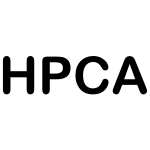 HPCA-1998-HallaronSG #architecture
HPCA-1998-HallaronSG #architecture- Architectural Implications of a Family of Irregular Applications (DRO, JRS, TRG), pp. 80–89.
 RTA-1997-Oostrom #finite
RTA-1997-Oostrom #finite- Finite Family Developments (VvO), pp. 308–322.
 HCI-SEC-1997-KimuraKI #communication #multi
HCI-SEC-1997-KimuraKI #communication #multi- Multimedia Communication for Family (AK, HK, SI), pp. 639–642.
 TOOLS-USA-1997-FeilerT #named
TOOLS-USA-1997-FeilerT #named- Propagator: A Family of Patterns (PHF, WFT), p. 355–?.
 ICSE-1997-ArdisW #analysis
ICSE-1997-ArdisW #analysis- Defining Families: The Commonality Analysis (MAA, DMW), pp. 649–650.
 ICSE-1997-RamKH #architecture
ICSE-1997-RamKH #architecture- Architecting Families of Software-Intensive Products (AR, HK, PH), p. 580.
 RTA-1996-Oostrom #higher-order
RTA-1996-Oostrom #higher-order- Higher-Order Families (VvO), pp. 392–407.
 ICPR-1996-HeisterkampB #invariant #recognition
ICPR-1996-HeisterkampB #invariant #recognition- Invariants of families of coplanar conics and their applications to object recognition (DRH, PB), pp. 677–681.
 KDD-1996-HofackerHSS #information management #scalability #sequence #using
KDD-1996-HofackerHSS #information management #scalability #sequence #using- Knowledge Discovery in RNA Sequence Families of HIV Using Scalable Computers (ILH, MAH, PFS, PES), pp. 20–25.
 SAC-1996-BedarhallyPC #algorithm #approach #search-based
SAC-1996-BedarhallyPC #algorithm #approach #search-based- A family elitist approach in genetic algorithms (PVB, RAP, WSC), pp. 238–244.
 SAC-1996-CucuccioGNR #development #fuzzy #logic
SAC-1996-CucuccioGNR #development #fuzzy #logic- W.A.R.P.-ADB: a board family for fuzzy logic applications development (AC, GG, NN, BR), pp. 586–589.
 CAV-1996-KapurS #multi #verification
CAV-1996-KapurS #multi #verification- Mechanically Verifying a Family of Multiplier Circuits (DK, MS), pp. 135–146.
 ICDAR-v1-1995-Crettez #recognition #set
ICDAR-v1-1995-Crettez #recognition #set- A set of handwriting families: style recognition (JPC), pp. 489–494.
 DLT-1995-Bercoff #sequence
DLT-1995-Bercoff #sequence- A Family of p-Uniform Tag Systems for p-Paperfolding Sequences (CB), pp. 3–12.
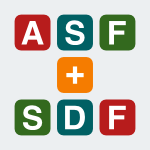 ASF+SDF-1995-Visser #syntax
ASF+SDF-1995-Visser #syntax- A Family of Syntax Definition Formalisms (EV), pp. 89–126.
 VLDB-1994-LitwinNS #data type #distributed #order #scalability
VLDB-1994-LitwinNS #data type #distributed #order #scalability- RP*: A Family of Order Preserving Scalable Distributed Data Structures (WL, MAN, DAS), pp. 342–353.
 STOC-1994-GoldreichW #random #trade-off
STOC-1994-GoldreichW #random #trade-off- Tiny families of functions with random properties (preliminary version): a quality-size trade-off for hashing (OG, AW), pp. 574–584.
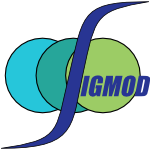 SIGMOD-1993-Sherman #architecture #distributed #transaction
SIGMOD-1993-Sherman #architecture #distributed #transaction- Architecture of the Encina Distributed Transaction Processing Family (MS), pp. 460–463.
 ICALP-1993-Gupta #automaton #finite
ICALP-1993-Gupta #automaton #finite- Finite Automata as Characterizations of Minor Closed Tree Families (AG), pp. 359–370.
 STOC-1993-Goldberg #algorithm #graph #polynomial
STOC-1993-Goldberg #algorithm #graph #polynomial- Polynomial space polynomial delay algorithms for listing families of graphs (LAG), pp. 218–225.
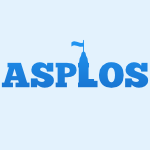 ASPLOS-1992-AndrewsS #migration
ASPLOS-1992-AndrewsS #migration- Migrating a CISC Computer Family onto RISC via Object Code Translation (KA, DS), pp. 213–222.
 CC-1992-Weber #compilation #component #reuse #runtime
CC-1992-Weber #compilation #component #reuse #runtime- Creation of a Family of Compilers and Runtime Environments by Combining Reusable Components (CW), pp. 110–124.
 JICSLP-1992-AbreuPC #execution
JICSLP-1992-AbreuPC #execution- Improving Backward Execution in the Andorra Family of Languages (SA, LMP, PC), pp. 384–398.
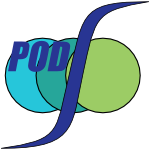 PODS-1991-ImmermanPS #finite #set
PODS-1991-ImmermanPS #finite #set- The Expressiveness of a Family of Finite Set Languages (NI, SP, DWS), pp. 37–52.
 ISLP-1991-LauP #recursion #sorting #synthesis
ISLP-1991-LauP #recursion #sorting #synthesis- Synthesis of a Family of Recursive Sorting Procedures (KKL, SDP), pp. 641–658.
 VLDB-1989-OlaO #database #modelling #relational
VLDB-1989-OlaO #database #modelling #relational- A Family of Incomplete Relational Database Models (AO, GÖ), pp. 23–31.
 OOPSLA-1989-Dussud #implementation #named
OOPSLA-1989-Dussud #implementation #named- TICLOS: An Implementation of CLOS for the Explorer Family (PHD), pp. 215–219.
 ICSE-1987-Winkler #scalability #source code #version control
ICSE-1987-Winkler #scalability #source code #version control- Version Control in Families of Large Programs (JFHW), pp. 150–165.
 ICALP-1986-Brandenburg
ICALP-1986-Brandenburg - Intersections of Some Families of Languages (FJB), pp. 60–68.
 ICALP-1984-Ferment #matrix
ICALP-1984-Ferment #matrix- Principality Results About Some Matrix Languages Families (DF), pp. 151–161.
 ICALP-1981-Istrail
ICALP-1981-Istrail - Chomsky-Schützenberger Representations for Families of Languages and Grammatical Types (SI), pp. 333–347.
 ICALP-1980-Salomaa
ICALP-1980-Salomaa - Grammatical Families (AS), pp. 543–554.
 ICALP-1979-Blattner
ICALP-1979-Blattner - Inherent Ambiguities in Families of Grammars (MB), pp. 38–48.
 ICALP-1979-Culik #on the
ICALP-1979-Culik #on the- On the Homomorphic Characterizations of Families of Languages (KCI), pp. 161–170.
 ICSE-1979-Lasker #evolution #realtime
ICSE-1979-Lasker #evolution #realtime- Module Structure in an Evolving Family of Real Time Systems (DML), pp. 22–28.
 ICALP-1976-Restivo #on the
ICALP-1976-Restivo #on the- On a Family of Codes Related to Factorization of Cyclotomic Polynomials (AR), pp. 38–44.
 ICSE-1976-ParnasHW #design #operating system #set #specification #system family
ICSE-1976-ParnasHW #design #operating system #set #specification #system family- Design and Specification of the Minimal Subset of an Operating System Family (DLP, GH, HW), p. 123.
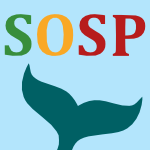 SOSP-J-1975-HabermannFC76 #composition #operating system
SOSP-J-1975-HabermannFC76 #composition #operating system- Modularization and Hierarchy in a Family of Operating Systems (ANH, LF, LWC), pp. 266–272.
 STOC-1973-Baker
STOC-1973-Baker - Tree Transductions and Families of Tree Languges (BSB), pp. 200–206.
 ICALP-1972-HarrisonH #on the
ICALP-1972-HarrisonH #on the- On a Family of Deterministic Grammars (MAH, IMH), pp. 413–441.
 STOC-1970-Lewis70a
STOC-1970-Lewis70a - Closure of Families of Languages under Substitution Operators (DJL), pp. 100–108.
 STOC-1970-Nivat #on the
STOC-1970-Nivat #on the- On Some Families of Languages Related to the Dyck Language (MN), pp. 221–225.
 STOC-1970-Ullian #theorem
STOC-1970-Ullian #theorem- Three Theorems on Abstract Families of Languages (JSU), pp. 226–230.
 STOC-1969-Chandler
STOC-1969-Chandler - Abstract Families of Deterministic Languages (WJC), pp. 21–30.
 STOC-1969-Rose
STOC-1969-Rose - Abstract Families of Processors (GFR), pp. 9–14.
 ECSA-2019-WagemannKS #architecture #multi #optimisation
ECSA-2019-WagemannKS #architecture #multi #optimisation ICSME-2019-OumazizF0BK #learning
ICSME-2019-OumazizF0BK #learning DiGRA-2019-Altice #game studies
DiGRA-2019-Altice #game studies FDG-2019-Poor #community #game studies #online #scalability
FDG-2019-Poor #community #game studies #online #scalability ICML-2019-LiSSG #exponential #kernel #learning
ICML-2019-LiSSG #exponential #kernel #learning ESEC-FSE-2019-Greiner #model transformation #on the #reuse
ESEC-FSE-2019-Greiner #model transformation #on the #reuse ESEC-FSE-2019-ShahinCS #analysis
ESEC-FSE-2019-ShahinCS #analysis GPCE-2019-HinterreiterNLS #evolution #feature model #modelling
GPCE-2019-HinterreiterNLS #evolution #feature model #modelling CIAA-2018-IbarraM
CIAA-2018-IbarraM  CHI-PLAY-2018-RosenqvistBPM #game studies #mobile #social
CHI-PLAY-2018-RosenqvistBPM #game studies #mobile #social MoDELS-2018-LaraGCS #model transformation
MoDELS-2018-LaraGCS #model transformation ESEC-FSE-2018-MansoorSSBCF #case study #experience #modelling #testing
ESEC-FSE-2018-MansoorSSBCF #case study #experience #modelling #testing GPCE-2018-Peldszus0J #analysis #feature model #modelling #security
GPCE-2018-Peldszus0J #analysis #feature model #modelling #security GPCE-2018-RulandLBLTLR #effectiveness #testing
GPCE-2018-RulandLBLTLR #effectiveness #testing SLE-2018-GuerraLCS #metamodelling
SLE-2018-GuerraLCS #metamodelling FASE-2018-0001PJ #multi #variability
FASE-2018-0001PJ #multi #variability ECSA-2017-CamaraGS #synthesis #trade-off #verification
ECSA-2017-CamaraGS #synthesis #trade-off #verification ICSA-2017-ZhengCA #architecture #consistency #source code #traceability
ICSA-2017-ZhengCA #architecture #consistency #source code #traceability SANER-2017-FenskeMSSS #migration #refactoring
SANER-2017-FenskeMSSS #migration #refactoring AFL-2017-MedunaM #component #context-sensitive grammar
AFL-2017-MedunaM #component #context-sensitive grammar FDG-2017-Mawhorter #case study #generative #performance #representation #using
FDG-2017-Mawhorter #case study #generative #performance #representation #using ICML-2017-LiuB #exponential
ICML-2017-LiuB #exponential MoDELS-2017-FamelisRCSC #design #nondeterminism #reasoning #variability
MoDELS-2017-FamelisRCSC #design #nondeterminism #reasoning #variability MoDELS-2017-TaentzerSSC #category theory #framework
MoDELS-2017-TaentzerSSC #category theory #framework OOPSLA-2017-ZhangM #interface #morphism #named #polymorphism
OOPSLA-2017-ZhangM #interface #morphism #named #polymorphism ESEC-FSE-2017-KnuppelTMMS #feature model #modelling #question #research
ESEC-FSE-2017-KnuppelTMMS #feature model #modelling #question #research ESEC-FSE-2017-OhBMS #random
ESEC-FSE-2017-OhBMS #random FASE-2017-ZschalerD #composition #flexibility #graph transformation
FASE-2017-ZschalerD #composition #flexibility #graph transformation TAP-2017-DamianiHL #abstraction #analysis #refinement
TAP-2017-DamianiHL #abstraction #analysis #refinement CBSE-2016-ColaTLQS #component
CBSE-2016-ColaTLQS #component WICSA-2016-AmalfitanoSFLS #design #experience #industrial #modelling #process
WICSA-2016-AmalfitanoSFLS #design #experience #industrial #modelling #process SANER-2016-ArcegaFHC #evolution
SANER-2016-ArcegaFHC #evolution DLT-2016-IbarraM #on the
DLT-2016-IbarraM #on the ICML-2016-InouyeRD #dependence #exponential #modelling #multi #visual notation
ICML-2016-InouyeRD #dependence #exponential #modelling #multi #visual notation ICML-2016-YaoK #learning #performance
ICML-2016-YaoK #learning #performance PADL-2016-Tarau16a
PADL-2016-Tarau16a  ASE-2016-SchwagerlW #collaboration #modelling #named #tool support
ASE-2016-SchwagerlW #collaboration #modelling #named #tool support FSE-2016-Hajri #case study #development #testing
FSE-2016-Hajri #case study #development #testing FSE-2016-HajriGBS #case study #domain model #modelling #named
FSE-2016-HajriGBS #case study #domain model #modelling #named GPCE-2016-Al-HajjajiKTLS #incremental #named #performance #testing #using
GPCE-2016-Al-HajjajiKTLS #incremental #named #performance #testing #using GPCE-2016-BoussaaBBS #automation #code generation #non-functional #testing
GPCE-2016-BoussaaBBS #automation #code generation #non-functional #testing GPCE-2016-PereiraMKSS #personalisation #recommendation
GPCE-2016-PereiraMKSS #personalisation #recommendation GPCE-2016-SteindorferV #towards
GPCE-2016-SteindorferV #towards CAV-2016-ChistikovMN #source code
CAV-2016-ChistikovMN #source code ICST-2016-Kunze #testing
ICST-2016-Kunze #testing ICST-2016-LuYAZ #recommendation
ICST-2016-LuYAZ #recommendation ECSA-2015-AbbasA #adaptation #architecture #case study #reasoning #self
ECSA-2015-AbbasA #adaptation #architecture #case study #reasoning #self QoSA-2015-MyllarniemiRM #configuration management #representation #security #variability
QoSA-2015-MyllarniemiRM #configuration management #representation #security #variability SANER-2015-LianZ #feature model #non-functional #requirements #towards
SANER-2015-LianZ #feature model #non-functional #requirements #towards SANER-2015-LityBS #incremental #slicing #towards
SANER-2015-LityBS #incremental #slicing #towards Haskell-2015-SerranoHB
Haskell-2015-SerranoHB  Haskell-2015-StolarekJE #haskell #injection
Haskell-2015-StolarekJE #haskell #injection ICGT-2015-KissingerZ #diagrams #equation #reasoning #string
ICGT-2015-KissingerZ #diagrams #equation #reasoning #string CHI-2015-MelvinBON #communication #dependence
CHI-2015-MelvinBON #communication #dependence CSCW-2015-BarbarinVK
CSCW-2015-BarbarinVK  CSCW-2015-SaksonoRKCHWP #collaboration #design #game studies
CSCW-2015-SaksonoRKCHWP #collaboration #design #game studies CSCW-2015-SchaefbauerKLSS
CSCW-2015-SchaefbauerKLSS  HCI-UC-2015-StarrBBR
HCI-UC-2015-StarrBBR  CAiSE-2015-PalmieriCA
CAiSE-2015-PalmieriCA  ICEIS-v2-2015-BayaADM #approach #composition #scalability
ICEIS-v2-2015-BayaADM #approach #composition #scalability ICEIS-v2-2015-IanzenFPMR #automation
ICEIS-v2-2015-IanzenFPMR #automation ICEIS-v2-2015-McharfiADBK #traceability
ICEIS-v2-2015-McharfiADBK #traceability ICEIS-v2-2015-TangL #framework #mining #top-down
ICEIS-v2-2015-TangL #framework #mining #top-down CIKM-2015-HashemBAKT #performance
CIKM-2015-HashemBAKT #performance ICML-2015-CohenW #exponential
ICML-2015-CohenW #exponential ICML-2015-TanseyPSR #exponential #markov #random
ICML-2015-TanseyPSR #exponential #markov #random SEKE-2015-AdjoyanS #architecture
SEKE-2015-AdjoyanS #architecture SEKE-2015-LaserRDOZ #architecture #case study #evolution #experience
SEKE-2015-LaserRDOZ #architecture #case study #evolution #experience SEKE-2015-OliveiraBFM #development #user interface
SEKE-2015-OliveiraBFM #development #user interface ICMT-2015-FamelisLSSSCCDV #case study #migration
ICMT-2015-FamelisLSSSCCDV #case study #migration MoDELS-2015-HajriGBS #approach #case study #embedded #industrial #lessons learnt #modelling
MoDELS-2015-HajriGBS #approach #case study #embedded #industrial #lessons learnt #modelling PLEASE-2015-CalefatoNLL
PLEASE-2015-CalefatoNLL  PLEASE-2015-ChitchyanNG #re-engineering #what
PLEASE-2015-ChitchyanNG #re-engineering #what PLEASE-2015-Gallina #reuse #safety #towards
PLEASE-2015-Gallina #reuse #safety #towards PLEASE-2015-TzeremesG #approach #development
PLEASE-2015-TzeremesG #approach #development SPLC-2015-AbbasA #adaptation #self #variability
SPLC-2015-AbbasA #adaptation #self #variability SPLC-2015-ArrietaSE #algorithm #cyber-physical #validation
SPLC-2015-ArrietaSE #algorithm #cyber-physical #validation SPLC-2015-BeekFG #adaptation #analysis #paradigm
SPLC-2015-BeekFG #adaptation #analysis #paradigm SPLC-2015-BeekFGM #analysis #using
SPLC-2015-BeekFGM #analysis #using SPLC-2015-BeekLLV #analysis #constraints #modelling #probability #statistics
SPLC-2015-BeekLLV #analysis #constraints #modelling #probability #statistics SPLC-2015-BergerLRGS0CC #industrial #what
SPLC-2015-BergerLRGS0CC #industrial #what SPLC-2015-Beuche15a #requirements
SPLC-2015-Beuche15a #requirements SPLC-2015-BeucheH #lifecycle #using
SPLC-2015-BeucheH #lifecycle #using SPLC-2015-ColaLTQ
SPLC-2015-ColaLTQ  SPLC-2015-CordyDGGH #specification
SPLC-2015-CordyDGGH #specification SPLC-2015-DhunganaFHS #ecosystem #smarttech
SPLC-2015-DhunganaFHS #ecosystem #smarttech SPLC-2015-FederleFCV #architecture #design #named #search-based
SPLC-2015-FederleFCV #architecture #design #named #search-based SPLC-2015-FilhoABAB #empirical #java #source code
SPLC-2015-FilhoABAB #empirical #java #source code SPLC-2015-FontAHC #concept
SPLC-2015-FontAHC #concept SPLC-2015-FontBHC #automation #formal method #variability
SPLC-2015-FontBHC #automation #formal method #variability SPLC-2015-GaetaC #modelling
SPLC-2015-GaetaC #modelling SPLC-2015-GreggSC
SPLC-2015-GreggSC  SPLC-2015-HeinemanHDR #framework #migration #object-oriented #synthesis #towards
SPLC-2015-HeinemanHDR #framework #migration #object-oriented #synthesis #towards SPLC-2015-Krueger #lifecycle
SPLC-2015-Krueger #lifecycle SPLC-2015-KruegerC #generative
SPLC-2015-KruegerC #generative SPLC-2015-KuhnCO
SPLC-2015-KuhnCO  SPLC-2015-LachmannLLBSS #integration #testing
SPLC-2015-LachmannLLBSS #integration #testing SPLC-2015-MartinezZBKT #approach #bottom-up
SPLC-2015-MartinezZBKT #approach #bottom-up SPLC-2015-MazoMRST #named
SPLC-2015-MazoMRST #named SPLC-2015-McVoy
SPLC-2015-McVoy  SPLC-2015-QuintonRVGB #challenge #evolution
SPLC-2015-QuintonRVGB #challenge #evolution SPLC-2015-ReulingBRLK #effectiveness #generative #testing
SPLC-2015-ReulingBRLK #effectiveness #generative #testing SPLC-2015-RumpeSWRM #behaviour #evolution #maintenance #modelling
SPLC-2015-RumpeSWRM #behaviour #evolution #maintenance #modelling SPLC-2015-SchmidE #ecosystem #named #variability
SPLC-2015-SchmidE #ecosystem #named #variability SPLC-2015-SmileySD #architecture #evolution #industrial
SPLC-2015-SmileySD #architecture #evolution #industrial SPLC-2015-SoutoGdMKB #debugging #detection #feature model #modelling #performance
SPLC-2015-SoutoGdMKB #debugging #detection #feature model #modelling #performance SPLC-2015-SteffenLM #constraints #synthesis
SPLC-2015-SteffenLM #constraints #synthesis SPLC-2015-TeixeiraABG #evolution #reasoning
SPLC-2015-TeixeiraABG #evolution #reasoning SPLC-2015-TeixeiraBG #evolution #multi
SPLC-2015-TeixeiraBG #evolution #multi SPLC-2015-TraskR #architecture #modelling
SPLC-2015-TraskR #architecture #modelling SPLC-2015-ValeAFG #case study #comparative #metric
SPLC-2015-ValeAFG #case study #comparative #metric SPLC-2015-VasilevskiyHCJS
SPLC-2015-VasilevskiyHCJS  SPLC-2015-WozniakC #how
SPLC-2015-WozniakC #how SPLC-2015-YueAS #analysis #case study #cyber-physical #experience
SPLC-2015-YueAS #analysis #case study #cyber-physical #experience ASE-2015-MartinezZBKT #automation #modelling
ASE-2015-MartinezZBKT #automation #modelling ASE-2015-PietschKKRO #framework #modelling #named
ASE-2015-PietschKKRO #framework #modelling #named ESEC-FSE-2015-AcherBCBJ
ESEC-FSE-2015-AcherBCBJ  GTTSE-2015-Rubin
GTTSE-2015-Rubin  ICSE-v1-2015-Ben-DavidSAB #model checking #requirements #satisfiability #using
ICSE-v1-2015-Ben-DavidSAB #model checking #requirements #satisfiability #using ICSE-v1-2015-HenardPHT #configuration management #constraints #multi #scalability #theorem proving
ICSE-v1-2015-HenardPHT #configuration management #constraints #multi #scalability #theorem proving ICSE-v2-2015-Assuncao #architecture #migration #search-based
ICSE-v2-2015-Assuncao #architecture #migration #search-based ICSE-v2-2015-Dintzner #evolution
ICSE-v2-2015-Dintzner #evolution ICSE-v2-2015-SchroederH0HLM #architecture #case study #design #evaluation #industrial #multi #self
ICSE-v2-2015-SchroederH0HLM #architecture #case study #design #evaluation #industrial #multi #self SAC-2015-LabibPCG #approach #development #learning #reuse
SAC-2015-LabibPCG #approach #development #learning #reuse SAC-2015-SenaCK #exception
SAC-2015-SenaCK #exception SAC-2015-TizzeiABC #architecture #case study #tool support #using
SAC-2015-TizzeiABC #architecture #case study #tool support #using GPCE-2015-FontAHC #metamodelling #modelling
GPCE-2015-FontAHC #metamodelling #modelling GPCE-2015-SeidlSS #design pattern #development #generative #using #variability
GPCE-2015-SeidlSS #design pattern #development #generative #using #variability DAC-2015-KrishnaNRT #analysis #composition #modelling
DAC-2015-KrishnaNRT #analysis #composition #modelling DATE-2015-JovanovicP
DATE-2015-JovanovicP  FASE-2015-BurdekLBHRA015 #generative #multi #reuse #testing
FASE-2015-BurdekLBHRA015 #generative #multi #reuse #testing ICTSS-2015-WeisslederWL #automation #bound #design
ICTSS-2015-WeisslederWL #automation #bound #design CBSE-2014-BuresHP #architecture #continuation #modelling #runtime
CBSE-2014-BuresHP #architecture #continuation #modelling #runtime WICSA-2014-SmileyMW #adaptation #architecture #performance #reuse
WICSA-2014-SmileyMW #adaptation #architecture #performance #reuse ICPC-2014-WenT #clustering #evaluation
ICPC-2014-WenT #clustering #evaluation AFL-2014-HolzerJ #automaton #regular expression
AFL-2014-HolzerJ #automaton #regular expression ICALP-v1-2014-GolovnevKM #approach #problem
ICALP-v1-2014-GolovnevKM #approach #problem LATA-2014-Tarau
LATA-2014-Tarau  Haskell-2014-EisenbergS #haskell
Haskell-2014-EisenbergS #haskell ICFP-2014-ChenE #analysis #parametricity #type system
ICFP-2014-ChenE #analysis #parametricity #type system CHI-2014-OduorNJHPH #communication #how
CHI-2014-OduorNJHPH #communication #how CSCW-2014-LeshedHK #coordination #quote
CSCW-2014-LeshedHK #coordination #quote CSCW-2014-Willever-FarrF #matter #online
CSCW-2014-Willever-FarrF #matter #online DUXU-DP-2014-JeurensTB
DUXU-DP-2014-JeurensTB  HIMI-AS-2014-HamaguchiAWA #communication #effectiveness
HIMI-AS-2014-HamaguchiAWA #communication #effectiveness SCSM-2014-KamalNB #communication #distributed #mobile #quote
SCSM-2014-KamalNB #communication #distributed #mobile #quote VISSOFT-2014-MartinezZMBKT #constraints #graph #paradigm #visualisation
VISSOFT-2014-MartinezZMBKT #constraints #graph #paradigm #visualisation CAiSE-2014-NobauerSG #analysis #approach #automation #evaluation #similarity
CAiSE-2014-NobauerSG #analysis #approach #automation #evaluation #similarity CAiSE-2014-Reinhartz-BergerIW #ontology #semantics #using #variability
CAiSE-2014-Reinhartz-BergerIW #ontology #semantics #using #variability ICEIS-v1-2014-LettnerZ #data analysis #framework #industrial
ICEIS-v1-2014-LettnerZ #data analysis #framework #industrial ICEIS-v2-2014-OliveiraG #architecture #empirical #metric #validation
ICEIS-v2-2014-OliveiraG #architecture #empirical #metric #validation ICEIS-v2-2014-PintoDOC #aspect-oriented #development #framework #modelling #multi #programming #towards
ICEIS-v2-2014-PintoDOC #aspect-oriented #development #framework #modelling #multi #programming #towards ICEIS-v2-2014-SilvaFG #configuration management #runtime #towards
ICEIS-v2-2014-SilvaFG #configuration management #runtime #towards ICML-c2-2014-GunasekarRG #constraints #exponential #matrix
ICML-c2-2014-GunasekarRG #constraints #exponential #matrix SEKE-2014-BarreirosM #flexibility #modelling
SEKE-2014-BarreirosM #flexibility #modelling SEKE-2014-JuniorFJB #learning #mobile #towards
SEKE-2014-JuniorFJB #learning #mobile #towards SEKE-2014-LianZ #feature model
SEKE-2014-LianZ #feature model SEKE-2014-NoorianBD #comprehension
SEKE-2014-NoorianBD #comprehension SEKE-2014-QueirozB #approach #embedded #modelling
SEKE-2014-QueirozB #approach #embedded #modelling SIGIR-2014-KoopmanZ #comprehension #information retrieval
SIGIR-2014-KoopmanZ #comprehension #information retrieval MoDELS-2014-VasilevskiyH
MoDELS-2014-VasilevskiyH  SPLC-2014-AcherBBJ #3d
SPLC-2014-AcherBBJ #3d SPLC-2014-Al-HajjajiTMLS #similarity #testing
SPLC-2014-Al-HajjajiTMLS #similarity #testing SPLC-2014-AngererPLGG #dependence #graph #identification
SPLC-2014-AngererPLGG #dependence #graph #identification SPLC-2014-Baresi #adaptation #self
SPLC-2014-Baresi #adaptation #self SPLC-2014-ChitchyanNG
SPLC-2014-ChitchyanNG  SPLC-2014-ColanziVGO #approach #design #search-based
SPLC-2014-ColanziVGO #approach #design #search-based SPLC-2014-DamianiSW #multi
SPLC-2014-DamianiSW #multi SPLC-2014-DieumegardTP #approach #data flow #library #semantics #specification
SPLC-2014-DieumegardTP #approach #data flow #library #semantics #specification SPLC-2014-DillonRD #approach
SPLC-2014-DillonRD #approach SPLC-2014-GreggSLC #aspect-oriented #lessons learnt #multi
SPLC-2014-GreggSLC #aspect-oriented #lessons learnt #multi SPLC-2014-HarmanJKLPZ #overview #re-engineering
SPLC-2014-HarmanJKLPZ #overview #re-engineering SPLC-2014-HartmannLB #testing
SPLC-2014-HartmannLB #testing SPLC-2014-Hubaux #research #what
SPLC-2014-Hubaux #research #what SPLC-2014-KnappRS #development #modelling #on the #testing #using
SPLC-2014-KnappRS #development #modelling #on the #testing #using SPLC-2014-KruegerC #generative
SPLC-2014-KruegerC #generative SPLC-2014-MannionS #architecture #requirements
SPLC-2014-MannionS #architecture #requirements SPLC-2014-NasrSAB #industrial #towards
SPLC-2014-NasrSAB #industrial #towards SPLC-2014-OlaecheaRGC #approximate #comparison #multi #optimisation
SPLC-2014-OlaecheaRGC #approximate #comparison #multi #optimisation SPLC-2014-SchroterSTS #interface #programming
SPLC-2014-SchroterSTS #interface #programming SPLC-2014-SeidlSA #variability
SPLC-2014-SeidlSA #variability SPLC-2014-ShakerA #behaviour #interactive
SPLC-2014-ShakerA #behaviour #interactive SPLC-2014-SimidchievaO #composition #generative #verification
SPLC-2014-SimidchievaO #composition #generative #verification SPLC-2014-ThumMBHRS #model checking #proving #theorem proving
SPLC-2014-ThumMBHRS #model checking #proving #theorem proving SPLC-2014-TraskR #architecture #modelling
SPLC-2014-TraskR #architecture #modelling SPLC-2014-UrliBC #approach
SPLC-2014-UrliBC #approach SPLC-2014-WangBAGPL #case study #industrial #multi #testing
SPLC-2014-WangBAGPL #case study #industrial #multi #testing POPL-2014-EisenbergVJW #equation
POPL-2014-EisenbergVJW #equation ASE-2014-Angerer #impact analysis #multi #variability
ASE-2014-Angerer #impact analysis #multi #variability FSE-2014-CordyHLSDL #abstraction #behaviour #modelling #refinement
FSE-2014-CordyHLSDL #abstraction #behaviour #modelling #refinement ICSE-2014-SalayFRSC #model transformation
ICSE-2014-SalayFRSC #model transformation SAC-2014-ParraJGI #approach #automation
SAC-2014-ParraJGI #approach #automation SAC-2014-ZiadiHPZT #approach #independence #towards
SAC-2014-ZiadiHPZT #approach #independence #towards GPCE-2014-MaAZS #performance #testing
GPCE-2014-MaAZS #performance #testing GPCE-2014-RuprechtHL #automation #feature model #scalability
GPCE-2014-RuprechtHL #automation #feature model #scalability SLE-2014-KuhnLGSA #metamodelling #modelling #programming language
SLE-2014-KuhnLGSA #metamodelling #modelling #programming language ICST-2014-BallerLLS #incremental #multi #optimisation #testing
ICST-2014-BallerLLS #incremental #multi #optimisation #testing ICST-2014-DemuthLE #automation #incremental #optimisation
ICST-2014-DemuthLE #automation #incremental #optimisation ICST-2014-LacknerTWW #design #modelling
ICST-2014-LacknerTWW #design #modelling ICST-2014-SanchezSC #comparison #testing
ICST-2014-SanchezSC #comparison #testing ECSA-2013-SilvaMCB #architecture #lightweight
ECSA-2013-SilvaMCB #architecture #lightweight CSMR-2013-ArnaoudovaPAG #anti
CSMR-2013-ArnaoudovaPAG #anti CSMR-2013-DubinskyRBDBC #case study #industrial
CSMR-2013-DubinskyRBDBC #case study #industrial ICSM-2013-Lopez-HerrejonCFEA #multi #testing
ICSM-2013-Lopez-HerrejonCFEA #multi #testing LATA-2013-BabaaliK #automaton #on the
LATA-2013-BabaaliK #automaton #on the IFM-2013-MilloRKN #composition #verification
IFM-2013-MilloRKN #composition #verification FDG-2013-DumasHRS
FDG-2013-DumasHRS  CHI-2013-HakanssonS
CHI-2013-HakanssonS  CHI-2013-NeustaedterBM #energy #how #process
CHI-2013-NeustaedterBM #energy #how #process CHI-2013-YamashitaKHK #comprehension
CHI-2013-YamashitaKHK #comprehension CHI-2013-YuillRR #collaboration
CHI-2013-YuillRR #collaboration CSCW-2013-InkpenTJTV #case study #experience #named #process
CSCW-2013-InkpenTJTV #case study #experience #named #process CSCW-2013-KazakosHV
CSCW-2013-KazakosHV  CSCW-2013-NeustaedterG #chat #interactive #video
CSCW-2013-NeustaedterG #chat #interactive #video DUXU-NTE-2013-FabriWT #behaviour
DUXU-NTE-2013-FabriWT #behaviour HCI-UC-2013-TsaiHCL #communication #named #network #online #social #using
HCI-UC-2013-TsaiHCL #communication #named #network #online #social #using HIMI-D-2013-MogawaSI #algorithm #representation #set
HIMI-D-2013-MogawaSI #algorithm #representation #set HIMI-HSM-2013-EverardJM #mobile
HIMI-HSM-2013-EverardJM #mobile HIMI-HSM-2013-KinoeOS #communication #design
HIMI-HSM-2013-KinoeOS #communication #design VISSOFT-2013-Lopez-HerrejonE #interactive #testing #towards #visualisation
VISSOFT-2013-Lopez-HerrejonE #interactive #testing #towards #visualisation ICEIS-v2-2013-FragalSGJ #approach #embedded #specification
ICEIS-v2-2013-FragalSGJ #approach #embedded #specification ICEIS-v2-2013-SilvaFJGO #approach #embedded #named
ICEIS-v2-2013-SilvaFJGO #approach #embedded #named MLDM-2013-ElGibreenA #learning #multi
MLDM-2013-ElGibreenA #learning #multi SEKE-2013-FerreiraVQ #approach #testing
SEKE-2013-FerreiraVQ #approach #testing SEKE-2013-NetoMGA #effectiveness #testing
SEKE-2013-NetoMGA #effectiveness #testing SEKE-2013-SilvaVMA #approach
SEKE-2013-SilvaVMA #approach SEKE-2013-SouzaV #agile
SEKE-2013-SouzaV #agile PLEASE-2013-Campbell
PLEASE-2013-Campbell  PLEASE-2013-ChimalakondaN #education #question #what
PLEASE-2013-ChimalakondaN #education #question #what PLEASE-2013-KramerOKC #user interface #visual notation
PLEASE-2013-KramerOKC #user interface #visual notation PLEASE-2013-UrliMBC #how #multi #question
PLEASE-2013-UrliMBC #how #multi #question SPLC-2013-BashariB #adaptation #self
SPLC-2013-BashariB #adaptation #self SPLC-2013-Beuche #legacy
SPLC-2013-Beuche #legacy SPLC-2013-Beuche13a #requirements
SPLC-2013-Beuche13a #requirements SPLC-2013-ChastekM
SPLC-2013-ChastekM  SPLC-2013-Donohoe
SPLC-2013-Donohoe  SPLC-2013-DumitrescuMSD #experience #modelling #variability
SPLC-2013-DumitrescuMSD #experience #modelling #variability SPLC-2013-Fantechi #configuration management
SPLC-2013-Fantechi #configuration management SPLC-2013-FilhoABN #case study #generative #modelling
SPLC-2013-FilhoABN #case study #generative #modelling SPLC-2013-HenardPPKT #generative #multi #testing
SPLC-2013-HenardPPKT #generative #multi #testing SPLC-2013-Krueger #multi
SPLC-2013-Krueger #multi SPLC-2013-KruegerC #generative
SPLC-2013-KruegerC #generative SPLC-2013-LanmanDRCK #challenge
SPLC-2013-LanmanDRCK #challenge SPLC-2013-MannionS #architecture #requirements
SPLC-2013-MannionS #architecture #requirements SPLC-2013-MarijanGSH #testing
SPLC-2013-MarijanGSH #testing SPLC-2013-MurashkinARC #visualisation
SPLC-2013-MurashkinARC #visualisation SPLC-2013-MuthigS #framework
SPLC-2013-MuthigS #framework SPLC-2013-MyllarniemiSM #case study #performance #variability
SPLC-2013-MyllarniemiSM #case study #performance #variability SPLC-2013-Nakagawa0M #architecture #design #process #towards
SPLC-2013-Nakagawa0M #architecture #design #process #towards SPLC-2013-NorthropJ
SPLC-2013-NorthropJ  SPLC-2013-SchmidL
SPLC-2013-SchmidL  SPLC-2013-TraskR #architecture #modelling
SPLC-2013-TraskR #architecture #modelling SPLC-2013-XuCMR #testing
SPLC-2013-XuCMR #testing SPLC-2013-ZhangBPSS #case study #evolution #industrial #variability
SPLC-2013-ZhangBPSS #case study #evolution #industrial #variability PLDI-2013-BoddenTRBBM #named
PLDI-2013-BoddenTRBBM #named ER-BR-2013-GuedesSC #approach
ER-BR-2013-GuedesSC #approach REFSQ-2013-AdamS #effectiveness #elicitation #empirical #requirements
REFSQ-2013-AdamS #effectiveness #elicitation #empirical #requirements REFSQ-2013-KlambauerHG #monitoring #multi #requirements
REFSQ-2013-KlambauerHG #monitoring #multi #requirements ASE-2013-SayyadIMA #scalability
ASE-2013-SayyadIMA #scalability ESEC-FSE-2013-GreenyerBCHG #incremental #specification
ESEC-FSE-2013-GreenyerBCHG #incremental #specification ICSE-2013-ApelRWGB #case study #verification
ICSE-2013-ApelRWGB #case study #verification ICSE-2013-CordySHL #model checking #multi
ICSE-2013-CordySHL #model checking #multi ICSE-2013-Sanchez #adaptation #self #towards
ICSE-2013-Sanchez #adaptation #self #towards ICSE-2013-SayyadMA #case study #on the #re-engineering #search-based
ICSE-2013-SayyadMA #case study #on the #re-engineering #search-based SAC-2013-DiwanCFLBHR #web
SAC-2013-DiwanCFLBHR #web SAC-2013-HollEGV #framework #lifecycle #multi
SAC-2013-HollEGV #framework #lifecycle #multi GPCE-2013-KramerOKC #user interface #using
GPCE-2013-KramerOKC #user interface #using FASE-2013-RubinC #quality
FASE-2013-RubinC #quality STOC-2013-Ben-SassonGKKS #algebra #geometry
STOC-2013-Ben-SassonGKKS #algebra #geometry STOC-2013-BhowmickDL #bound
STOC-2013-BhowmickDL #bound ISSTA-2013-Thum #contract #feature model #verification
ISSTA-2013-Thum #contract #feature model #verification CBSE-2012-PascualAF #component #pervasive
CBSE-2012-PascualAF #component #pervasive WICSA-ECSA-2012-HeiderVLG #case study #component #evolution
WICSA-ECSA-2012-HeiderVLG #case study #component #evolution WICSA-ECSA-2012-JahnRGLWM #component #maintenance
WICSA-ECSA-2012-JahnRGLWM #component #maintenance TPDL-2012-MercunZA #approach #named #visualisation
TPDL-2012-MercunZA #approach #named #visualisation CSEET-2012-WeissL #collaboration
CSEET-2012-WeissL #collaboration CSEET-2012-ZuppiroliCG #game studies #re-engineering
CSEET-2012-ZuppiroliCG #game studies #re-engineering ICPC-2012-Zhang
ICPC-2012-Zhang  ICSM-2012-DhaliwalKZH #commit #dependence #integration
ICSM-2012-DhaliwalKZH #commit #dependence #integration ICSM-2012-YazdanshenasM #component #fine-grained #impact analysis
ICSM-2012-YazdanshenasM #component #fine-grained #impact analysis ICALP-v1-2012-ChekuriEV #design #graph #network
ICALP-v1-2012-ChekuriEV #design #graph #network LATA-2012-SaloT #automaton #finite #on the #set
LATA-2012-SaloT #automaton #finite #on the #set GT-VMT-2012-AnjorinOZS #graph transformation #modelling #optimisation #testing
GT-VMT-2012-AnjorinOZS #graph transformation #modelling #optimisation #testing CHI-2012-YardiB #difference
CHI-2012-YardiB #difference CSCW-2012-LiuBS #collaboration #design #detection
CSCW-2012-LiuBS #collaboration #design #detection CSCW-2012-VasalouOJ #case study
CSCW-2012-VasalouOJ #case study CSCW-2012-WycheG #case study #communication #how #quote
CSCW-2012-WycheG #case study #communication #how #quote CAiSE-2012-EnsanBG #feature model #generative #modelling #search-based #testing
CAiSE-2012-EnsanBG #feature model #generative #modelling #search-based #testing KR-2012-KazakovKS #logic #reasoning
KR-2012-KazakovKS #logic #reasoning SEKE-2012-CunhaCAM #modelling #set
SEKE-2012-CunhaCAM #modelling #set SEKE-2012-GuedesSCSDS #named
SEKE-2012-GuedesSCSDS #named SEKE-2012-JuniorGM #architecture #complexity #empirical #metric #validation #variability
SEKE-2012-JuniorGM #architecture #complexity #empirical #metric #validation #variability SEKE-2012-MedeirosSPM #variability
SEKE-2012-MedeirosSPM #variability SEKE-2012-NetoNAM #testing #tool support
SEKE-2012-NetoNAM #testing #tool support SEKE-2012-NoorianBD #classification #non-functional #taxonomy
SEKE-2012-NoorianBD #classification #non-functional #taxonomy SEKE-2012-RakaLM #approach #generative #modelling
SEKE-2012-RakaLM #approach #generative #modelling SEKE-2012-RodriguesZJGMD #automation #named
SEKE-2012-RodriguesZJGMD #automation #named ICMT-2012-Cuadrado #model transformation #towards #transformation language
ICMT-2012-Cuadrado #model transformation #towards #transformation language MoDELS-2012-AliYBW #case study #industrial #modelling #testing
MoDELS-2012-AliYBW #case study #industrial #modelling #testing MoDELS-2012-JohansenHFES #array #generative #modelling
MoDELS-2012-JohansenHFES #array #generative #modelling MoDELS-2012-KulkarniBR #towards
MoDELS-2012-KulkarniBR #towards MoDELS-2012-VierhauserGHHL #consistency #framework #industrial #modelling
MoDELS-2012-VierhauserGHHL #consistency #framework #industrial #modelling PLEASE-2012-BoffoliCCV #consistency #flexibility #process
PLEASE-2012-BoffoliCCV #consistency #flexibility #process PLEASE-2012-FantGP
PLEASE-2012-FantGP  PLEASE-2012-FilhoBBN #modelling #multi #variability
PLEASE-2012-FilhoBBN #modelling #multi #variability PLEASE-2012-LiY
PLEASE-2012-LiY  PLEASE-2012-SaratxagaAHEM #variability
PLEASE-2012-SaratxagaAHEM #variability PLEASE-2012-SozenM #adaptation
PLEASE-2012-SozenM #adaptation SPLC-2012-BartholdtB
SPLC-2012-BartholdtB  SPLC-2012-BragaJBL #certification #feature model #modelling
SPLC-2012-BragaJBL #certification #feature model #modelling SPLC-2012-CordySHL #behaviour #modelling #realtime #verification
SPLC-2012-CordySHL #behaviour #modelling #realtime #verification SPLC-2012-FloresKC
SPLC-2012-FloresKC  SPLC-2012-HofmanSPKB #feature model #modelling
SPLC-2012-HofmanSPKB #feature model #modelling SPLC-2012-LeeKL #overview #testing
SPLC-2012-LeeKL #overview #testing SPLC-2012-MyllarniemiRM #overview #quality #variability
SPLC-2012-MyllarniemiRM #overview #quality #variability SPLC-2012-NunesGLL #evolution #heuristic
SPLC-2012-NunesGLL #evolution #heuristic SPLC-2012-OliveiraBN #analysis #debugging
SPLC-2012-OliveiraBN #analysis #debugging SPLC-2012-PatzkeBSSSF #case study #evolution #identification
SPLC-2012-PatzkeBSSSF #case study #evolution #identification SPLC-2012-SavolainenMK #multi #platform
SPLC-2012-SavolainenMK #multi #platform SPLC-2012-SeidlHA #co-evolution #modelling
SPLC-2012-SeidlHA #co-evolution #modelling SPLC-2012-TischerBMTAS #architecture
SPLC-2012-TischerBMTAS #architecture RE-2012-GreenyerSCH #consistency #performance #specification
RE-2012-GreenyerSCH #consistency #performance #specification RE-2012-LutzLLKMSBH #analysis #requirements
RE-2012-LutzLLKMSBH #analysis #requirements REFSQ-2012-Adam #elicitation #requirements
REFSQ-2012-Adam #elicitation #requirements ICSE-2012-Colanzi #architecture #design
ICSE-2012-Colanzi #architecture #design ICSE-2012-CordyCPSHL #abstraction #model checking
ICSE-2012-CordyCPSHL #abstraction #model checking ICSE-2012-Khoshnevis #approach #variability
ICSE-2012-Khoshnevis #approach #variability ICSE-2012-Thao #evolution
ICSE-2012-Thao #evolution SAC-2012-OliveiraFPC #framework
SAC-2012-OliveiraFPC #framework SAC-2012-QueirozB
SAC-2012-QueirozB  GPCE-2012-DamianiPS #formal method
GPCE-2012-DamianiPS #formal method GPCE-2012-ThumSHA #deduction #verification
GPCE-2012-ThumSHA #deduction #verification PDP-2012-FlorioB #algorithm #robust
PDP-2012-FlorioB #algorithm #robust FASE-2012-RubinC
FASE-2012-RubinC  FASE-2012-ShiCD #composition #execution #integration #symbolic computation #testing #using
FASE-2012-ShiCD #composition #execution #integration #symbolic computation #testing #using ICST-2012-DevineGKLL #empirical #fault #industrial
ICST-2012-DevineGKLL #empirical #fault #industrial ICST-2012-RunesonE #3d #problem #testing
ICST-2012-RunesonE #3d #problem #testing ICTSS-2012-JohansenHFCEW #agile #automation #interactive #testing
ICTSS-2012-JohansenHFCEW #agile #automation #interactive #testing TAP-2012-LochauSKL #incremental #modelling #testing
TAP-2012-LochauSKL #incremental #modelling #testing ECSA-2011-BarbosaBGS #architecture #aspect-oriented #named
ECSA-2011-BarbosaBGS #architecture #aspect-oriented #named ECSA-2011-DiazPGW #architecture #impact analysis
ECSA-2011-DiazPGW #architecture #impact analysis ECSA-2011-JrCCGOFMG #architecture #component #lessons learnt #uml
ECSA-2011-JrCCGOFMG #architecture #component #lessons learnt #uml ECSA-2011-NakagawaAB #architecture #difference
ECSA-2011-NakagawaAB #architecture #difference ECSA-2011-TizzeiR #architecture #case study #comparative #component #evolution
ECSA-2011-TizzeiR #architecture #case study #comparative #component #evolution QoSA-ISARCS-2011-KavimandanGKG #architecture #model transformation #quality #reuse
QoSA-ISARCS-2011-KavimandanGKG #architecture #model transformation #quality #reuse WICSA-2011-CoelhoB #architecture #requirements
WICSA-2011-CoelhoB #architecture #requirements WICSA-2011-MichalikW #impact analysis #towards
WICSA-2011-MichalikW #impact analysis #towards WICSA-2011-WeynsMHB #approach #architecture #online
WICSA-2011-WeynsMHB #approach #architecture #online CSMR-2011-CoutoVF #case study #compilation #using
CSMR-2011-CoutoVF #case study #compilation #using ICSM-2011-ZhangSPXZ #case study #incremental #industrial #re-engineering #towards
ICSM-2011-ZhangSPXZ #case study #incremental #industrial #re-engineering #towards MSR-2011-KrishnanLG #empirical #evaluation #evolution #reliability
MSR-2011-KrishnanLG #empirical #evaluation #evolution #reliability SEFM-2011-MuscheviciPC #composition #modelling
SEFM-2011-MuscheviciPC #composition #modelling CHI-2011-DavidoffZZD #coordination #learning
CHI-2011-DavidoffZZD #coordination #learning CHI-2011-JudgeNHB #multi
CHI-2011-JudgeNHB #multi CHI-2011-ManciniRTJPBJN
CHI-2011-ManciniRTJPBJN  CHI-2011-RaffleRMBBHKCFGS #chat #exclamation #video
CHI-2011-RaffleRMBBHKCFGS #chat #exclamation #video CHI-2011-YaroshA
CHI-2011-YaroshA  CSCW-2011-GuibourdencheVGFH #distributed #multi #process #using
CSCW-2011-GuibourdencheVGFH #distributed #multi #process #using HIMI-v2-2011-KinoeN #communication #design
HIMI-v2-2011-KinoeN #communication #design HIMI-v2-2011-YuCW #communication #framework #interactive #named #platform #problem
HIMI-v2-2011-YuCW #communication #framework #interactive #named #platform #problem OCSC-2011-TixierL #design #evaluation #online #social
OCSC-2011-TixierL #design #evaluation #online #social CAiSE-2011-GronerWBPWHGS #process #validation
CAiSE-2011-GronerWBPWHGS #process #validation ICEIS-J-2011-MateoPC11a #modelling #testing
ICEIS-J-2011-MateoPC11a #modelling #testing ICEIS-v3-2011-MateoPC #approach #modelling #testing
ICEIS-v3-2011-MateoPC #approach #modelling #testing SEKE-2011-BalbinoAM #agile #process
SEKE-2011-BalbinoAM #agile #process SEKE-2011-JuniorGM #analysis #architecture #trade-off
SEKE-2011-JuniorGM #analysis #architecture #trade-off SEKE-2011-MachadoNAM #named #process #testing
SEKE-2011-MachadoNAM #named #process #testing SEKE-2011-NetoMNAM #testing
SEKE-2011-NetoMNAM #testing SEKE-2011-ZaatarHH #approach #identification #implementation
SEKE-2011-ZaatarHH #approach #identification #implementation MoDELS-2011-CichosOLS #generative #modelling #testing
MoDELS-2011-CichosOLS #generative #modelling #testing MoDELS-2011-JohansenHF #combinator #feature model #modelling #testing
MoDELS-2011-JohansenHF #combinator #feature model #modelling #testing PLEASE-2011-AsirelliBFGM #design #validation #variability
PLEASE-2011-AsirelliBFGM #design #validation #variability PLEASE-2011-GurgelDG #case study #integration #on-demand #reuse
PLEASE-2011-GurgelDG #case study #integration #on-demand #reuse PLEASE-2011-Li #evolution #identification
PLEASE-2011-Li #evolution #identification PLEASE-2011-Livengood #evolution #modelling #variability
PLEASE-2011-Livengood #evolution #modelling #variability PLEASE-2011-MichalikWB #evolution #on the #problem
PLEASE-2011-MichalikWB #evolution #on the #problem PLEASE-2011-RosaL #component #composition #mobile #reuse
PLEASE-2011-RosaL #component #composition #mobile #reuse PLEASE-2011-SiyWZ #generative #modelling #ontology
PLEASE-2011-SiyWZ #generative #modelling #ontology PLEASE-2011-StallingerNSK #challenge #evolution #industrial #migration #towards
PLEASE-2011-StallingerNSK #challenge #evolution #industrial #migration #towards PLEASE-2011-ThaoM #evolution #flexibility
PLEASE-2011-ThaoM #evolution #flexibility SPLC-2011-Abu-MatarG #architecture #modelling #variability
SPLC-2011-Abu-MatarG #architecture #modelling #variability SPLC-2011-Achatz #case study #challenge #experience #industrial
SPLC-2011-Achatz #case study #challenge #experience #industrial SPLC-2011-AlferezP #web #web service
SPLC-2011-AlferezP #web #web service SPLC-2011-AsirelliBGF #variability
SPLC-2011-AsirelliBGF #variability SPLC-2011-BartholdtB #re-engineering
SPLC-2011-BartholdtB #re-engineering SPLC-2011-Beuche11a #legacy
SPLC-2011-Beuche11a #legacy SPLC-2011-Beuche11b #requirements
SPLC-2011-Beuche11b #requirements SPLC-2011-Broy11a #requirements #specification
SPLC-2011-Broy11a #requirements #specification SPLC-2011-BuschmannS #case study #experience
SPLC-2011-BuschmannS #case study #experience SPLC-2011-ChastekDMM
SPLC-2011-ChastekDMM  SPLC-2011-ChastekM
SPLC-2011-ChastekM  SPLC-2011-DaoLK #approach #problem #quality
SPLC-2011-DaoLK #approach #problem #quality SPLC-2011-DhunganaSBRGBG #modelling #multi #variability
SPLC-2011-DhunganaSBRGBG #modelling #multi #variability SPLC-2011-Donohoe
SPLC-2011-Donohoe  SPLC-2011-DordowskyBT #implementation
SPLC-2011-DordowskyBT #implementation SPLC-2011-GhezziS #approach #model checking #non-functional #parametricity #performance #towards #using #verification
SPLC-2011-GhezziS #approach #model checking #non-functional #parametricity #performance #towards #using #verification SPLC-2011-Hinchey
SPLC-2011-Hinchey  SPLC-2011-HutchessonM #effectiveness #towards
SPLC-2011-HutchessonM #effectiveness #towards SPLC-2011-KatoY #cumulative #feature model #interactive
SPLC-2011-KatoY #cumulative #feature model #interactive SPLC-2011-Krueger #industrial #roadmap
SPLC-2011-Krueger #industrial #roadmap SPLC-2011-LiW #evolution
SPLC-2011-LiW #evolution SPLC-2011-McGregorM
SPLC-2011-McGregorM  SPLC-2011-Muller #optimisation
SPLC-2011-Muller #optimisation SPLC-2011-NolanACMC #cost analysis #integration #quality #towards
SPLC-2011-NolanACMC #cost analysis #integration #quality #towards SPLC-2011-NolanACP #nondeterminism #requirements
SPLC-2011-NolanACP #nondeterminism #requirements SPLC-2011-NorthropJ
SPLC-2011-NorthropJ  SPLC-2011-Pohjalainen #agile #bottom-up #case study #experience #mobile #modelling #network
SPLC-2011-Pohjalainen #agile #bottom-up #case study #experience #mobile #modelling #network SPLC-2011-QuiltyC #case study #development #experience #risk management
SPLC-2011-QuiltyC #case study #development #experience #risk management SPLC-2011-SiegmundRKGAK #non-functional #predict #scalability
SPLC-2011-SiegmundRKGAK #non-functional #predict #scalability SPLC-2011-SinhaDR #development #multi #performance #reduction #scalability #testing
SPLC-2011-SinhaDR #development #multi #performance #reduction #scalability #testing SPLC-2011-TawhidP #automation #performance
SPLC-2011-TawhidP #automation #performance SPLC-2011-TischerMMK #case study #experience #scalability
SPLC-2011-TischerMMK #case study #experience #scalability SPLC-2011-TolvanenK #domain-specific language #modelling
SPLC-2011-TolvanenK #domain-specific language #modelling SPLC-2011-TraskR #architecture #modelling
SPLC-2011-TraskR #architecture #modelling SPLC-2011-VierhauserHRGLS #deployment #framework #modelling #tool support
SPLC-2011-VierhauserHRGLS #deployment #framework #modelling #tool support SPLC-2011-Volter #case study #domain-specific language #experience #tool support
SPLC-2011-Volter #case study #domain-specific language #experience #tool support SPLC-2011-VolterV #domain-specific language #using
SPLC-2011-VolterV #domain-specific language #using SPLC-2011-YoshimuraSOOAKWF #experience #multi #process
SPLC-2011-YoshimuraSOOAKWF #experience #multi #process SPLC-2011-ZhangHM #comparison #difference #modelling
SPLC-2011-ZhangHM #comparison #difference #modelling OOPSLA-2011-DelawareCB #theorem
OOPSLA-2011-DelawareCB #theorem SAS-2011-MightH #abstract interpretation #concurrent #higher-order #source code #static analysis
SAS-2011-MightH #abstract interpretation #concurrent #higher-order #source code #static analysis REFSQ-2011-DhunganaSG #elicitation #modelling #requirements #research #using #variability
REFSQ-2011-DhunganaSG #elicitation #modelling #requirements #research #using #variability ESEC-FSE-2011-CafeoNFCR
ESEC-FSE-2011-CafeoNFCR  ICSE-2011-ApelB #case study
ICSE-2011-ApelB #case study ICSE-2011-ClassenHSL #model checking
ICSE-2011-ClassenHSL #model checking ICSE-2011-Xue #analysis #automation #legacy #re-engineering #variability
ICSE-2011-Xue #analysis #automation #legacy #re-engineering #variability SAC-2011-AsadiBGHM
SAC-2011-AsadiBGHM  SAC-2011-MohabbatiHGAB #development
SAC-2011-MohabbatiHGAB #development SAC-2011-VarelaABM #analysis #aspect-oriented #requirements
SAC-2011-VarelaABM #analysis #aspect-oriented #requirements GPCE-2011-NevesTSAKB #evolution
GPCE-2011-NevesTSAKB #evolution GPCE-2011-RibeiroQBTBS #dependence #maintenance #on the
GPCE-2011-RibeiroQBTBS #dependence #maintenance #on the GPCE-2011-RosenmullerSPA
GPCE-2011-RosenmullerSPA  ECSA-2010-Lopez-HerrejonE #architecture #on the
ECSA-2010-Lopez-HerrejonE #architecture #on the ECSA-2010-SaraivaPBDPKAFMS #architecture #aspect-oriented #experience #middleware #modelling #refactoring
ECSA-2010-SaraivaPBDPKAFMS #architecture #aspect-oriented #experience #middleware #modelling #refactoring DocEng-2010-KarolHHA #documentation #feature model #modelling #using
DocEng-2010-KarolHHA #documentation #feature model #modelling #using DocEng-2010-PenadesCBL #documentation #generative #variability
DocEng-2010-PenadesCBL #documentation #generative #variability ITiCSE-2010-HauptHPGMBHKK #education #research #virtual machine
ITiCSE-2010-HauptHPGMBHKK #education #research #virtual machine ICPC-2010-FeigenspanKFDA #comprehension #visual notation
ICPC-2010-FeigenspanKFDA #comprehension #visual notation ICSM-2010-NunesGL
ICSM-2010-NunesGL  WCRE-2010-XueXJ #comprehension #evolution
WCRE-2010-XueXJ #comprehension #evolution CIAA-2010-CastiglioneNS #algorithm #automaton
CIAA-2010-CastiglioneNS #algorithm #automaton CHI-2010-DavidoffZD #coordination #how
CHI-2010-DavidoffZD #coordination #how CHI-2010-JudgeNK #design #evaluation
CHI-2010-JudgeNK #design #evaluation CHI-2010-MassimiB #design
CHI-2010-MassimiB #design CHI-2010-PetrelliVKDW
CHI-2010-PetrelliVKDW  CHI-2010-RaffleBRHFGRMKS #distance #game studies
CHI-2010-RaffleBRHFGRMKS #distance #game studies CSCW-2010-AmesGKS #network
CSCW-2010-AmesGKS #network CSCW-2010-CaoSBKED #communication #comprehension
CSCW-2010-CaoSBKED #communication #comprehension CSCW-2010-DibPW
CSCW-2010-DibPW  CSCW-2010-KirkISTBH
CSCW-2010-KirkISTBH  KR-2010-PenalozaS #axiom #complexity #logic #on the
KR-2010-PenalozaS #axiom #complexity #logic #on the SEKE-2010-RodriguesVZ #automation #modelling #testing #using
SEKE-2010-RodriguesVZ #automation #modelling #testing #using MoDELS-v1-2010-GuerraLKPS #model transformation #named
MoDELS-v1-2010-GuerraLKPS #model transformation #named PLEASE-2010-BotterweckPDPK #evolution #named
PLEASE-2010-BotterweckPDPK #evolution #named PLEASE-2010-EstublierDL #evolution
PLEASE-2010-EstublierDL #evolution PLEASE-2010-Hanssen
PLEASE-2010-Hanssen  PLEASE-2010-MamanB #graph #named #towards
PLEASE-2010-MamanB #graph #named #towards SPLC-2010-BagheriNRG #configuration management #feature model #modelling #requirements
SPLC-2010-BagheriNRG #configuration management #feature model #modelling #requirements SPLC-2010-BelategiSE #embedded #variability
SPLC-2010-BelategiSE #embedded #variability SPLC-2010-BergerSLCW #scalability
SPLC-2010-BergerSLCW #scalability SPLC-2010-Beuche #legacy
SPLC-2010-Beuche #legacy SPLC-2010-BeucheJ #requirements
SPLC-2010-BeucheJ #requirements SPLC-2010-CabralCR #testing
SPLC-2010-CabralCR #testing SPLC-2010-CetinaGFP #design #guidelines #prototype
SPLC-2010-CetinaGFP #design #guidelines #prototype SPLC-2010-ChenB #challenge #industrial #variability
SPLC-2010-ChenB #challenge #industrial #variability SPLC-2010-ClementsMB #architecture #elicitation
SPLC-2010-ClementsMB #architecture #elicitation SPLC-2010-ElsnerULS #bound #consistency
SPLC-2010-ElsnerULS #bound #consistency SPLC-2010-FurtadoSR #analysis #game studies
SPLC-2010-FurtadoSR #analysis #game studies SPLC-2010-GadelhaCGCFL #approach #component #using
SPLC-2010-GadelhaCGCFL #approach #component #using SPLC-2010-GanesanLMBSM #architecture #testing
SPLC-2010-GanesanLMBSM #architecture #testing SPLC-2010-GustavssonE #architecture #industrial
SPLC-2010-GustavssonE #architecture #industrial SPLC-2010-Jarzabek #variability
SPLC-2010-Jarzabek #variability SPLC-2010-JohnSA #architecture
SPLC-2010-JohnSA #architecture SPLC-2010-JohnV
SPLC-2010-JohnV  SPLC-2010-JonesN #case study #experience
SPLC-2010-JonesN #case study #experience SPLC-2010-Kim #case study
SPLC-2010-Kim #case study SPLC-2010-Krueger #framework #lifecycle
SPLC-2010-Krueger #framework #lifecycle SPLC-2010-LinYT #approach #performance
SPLC-2010-LinYT #approach #performance SPLC-2010-LutzWKY
SPLC-2010-LutzWKY  SPLC-2010-MannionS
SPLC-2010-MannionS  SPLC-2010-MarinhoLFRMADVAT #mobile
SPLC-2010-MarinhoLFRMADVAT #mobile SPLC-2010-McGregor10a #reuse #testing
SPLC-2010-McGregor10a #reuse #testing SPLC-2010-McGregor10b
SPLC-2010-McGregor10b  SPLC-2010-MedeirosAM #approach #architecture #design #named
SPLC-2010-MedeirosAM #approach #architecture #design #named SPLC-2010-NolanA #case study #estimation #experience
SPLC-2010-NolanA #case study #estimation #experience SPLC-2010-Northrop
SPLC-2010-Northrop  SPLC-2010-NorthropJ
SPLC-2010-NorthropJ  SPLC-2010-OsterMR #automation #incremental #testing
SPLC-2010-OsterMR #automation #incremental #testing SPLC-2010-RabiserHELGS #approach #documentation #flexibility #generative
SPLC-2010-RabiserHELGS #approach #documentation #flexibility #generative SPLC-2010-SchaeferBBDT #programming
SPLC-2010-SchaeferBBDT #programming SPLC-2010-SvendsenZLFHMO #case study
SPLC-2010-SvendsenZLFHMO #case study SPLC-2010-TekinerdoganTS #approach #classification #multi
SPLC-2010-TekinerdoganTS #approach #classification #multi SPLC-2010-TraskR #architecture #modelling
SPLC-2010-TraskR #architecture #modelling SPLC-2010-UbayashiNH #embedded #reliability
SPLC-2010-UbayashiNH #embedded #reliability SPLC-2010-ZhouJZZ #enterprise
SPLC-2010-ZhouJZZ #enterprise OOPSLA-2010-QiM
OOPSLA-2010-QiM  RE-2010-StoiberFJG #refactoring #requirements #specification #weaving
RE-2010-StoiberFJG #refactoring #requirements #specification #weaving REFSQ-2010-BittnerRW #case study #multi #requirements
REFSQ-2010-BittnerRW #case study #multi #requirements REFSQ-2010-VillelaDJ #evaluation #evolution
REFSQ-2010-VillelaDJ #evaluation #evolution ASE-2010-BoucherCHBD #approach #implementation
ASE-2010-BoucherCHBD #approach #implementation ASE-2010-KimBK
ASE-2010-KimBK  ASE-2010-VierhauserGERH #consistency #flexibility #modelling #scalability #variability
ASE-2010-VierhauserGERH #consistency #flexibility #modelling #scalability #variability FSE-2010-RamasubbuB #case study #evolution
FSE-2010-RamasubbuB #case study #evolution ICSE-2010-ClassenHSLR #model checking #performance #verification
ICSE-2010-ClassenHSLR #model checking #performance #verification ICSE-2010-LiebigALKS #analysis #variability
ICSE-2010-LiebigALKS #analysis #variability ICSE-2010-Marinho #consistency #modelling #ocl #using
ICSE-2010-Marinho #consistency #modelling #ocl #using ICSE-2010-Zhang
ICSE-2010-Zhang  SAC-2010-BettiniDS #implementation #using
SAC-2010-BettiniDS #implementation #using GPCE-2010-SchulzeAK #feature model
GPCE-2010-SchulzeAK #feature model ICST-2010-Engstrom #testing
ICST-2010-Engstrom #testing ICST-2010-PerrouinSKBT #automation #generative #scalability #testing
ICST-2010-PerrouinSKBT #automation #generative #scalability #testing ICTSS-2010-LamanchaU #generative #testing #using
ICTSS-2010-LamanchaU #generative #testing #using LICS-2010-CaliGLMP #datalog #information management #logic #query #representation
LICS-2010-CaliGLMP #datalog #information management #logic #query #representation QoSA-2009-KoziolekWD #architecture #case study #evolution #industrial
QoSA-2009-KoziolekWD #architecture #case study #evolution #industrial WICSA-ECSA-2009-Axelsson #architecture #case study #embedded #industrial
WICSA-ECSA-2009-Axelsson #architecture #case study #embedded #industrial WICSA-ECSA-2009-KotonyaLR #approach #development
WICSA-ECSA-2009-KotonyaLR #approach #development WICSA-ECSA-2009-PerovichRB #architecture #feature model
WICSA-ECSA-2009-PerovichRB #architecture #feature model DocEng-2009-DiazAK #using
DocEng-2009-DiazAK #using ITiCSE-2009-Gomez-MartinJA #design pattern #education #game studies #using
ITiCSE-2009-Gomez-MartinJA #design pattern #education #game studies #using CSMR-2009-NunesKSNGL #implementation #multi
CSMR-2009-NunesKSNGL #implementation #multi CSMR-2009-RibeiroB
CSMR-2009-RibeiroB  CSMR-2009-Rombach #design #maintenance #using
CSMR-2009-Rombach #design #maintenance #using ICSM-2009-LamanchaUG #modelling #testing
ICSM-2009-LamanchaUG #modelling #testing ICSM-2009-Weiss #architecture
ICSM-2009-Weiss #architecture LATA-2009-BucciL #image #on the #word
LATA-2009-BucciL #image #on the #word ICEIS-ISAS-2009-MateoPL #automation #generative #testing
ICEIS-ISAS-2009-MateoPL #automation #generative #testing ICEIS-J-2009-NunesKNLC #analysis #approach #multi
ICEIS-J-2009-NunesKNLC #analysis #approach #multi CIKM-2009-ChenL
CIKM-2009-ChenL  ICML-2009-LiangJK #exponential #learning #metric
ICML-2009-LiangJK #exponential #learning #metric KDIR-2009-PaquetV #2d #3d #multi #realtime
KDIR-2009-PaquetV #2d #3d #multi #realtime SEKE-2009-Abu-Matar #modelling #variability
SEKE-2009-Abu-Matar #modelling #variability SEKE-2009-ConejeroHJCR #analysis #composition
SEKE-2009-ConejeroHJCR #analysis #composition SEKE-2009-PengSZ #architecture #evolution
SEKE-2009-PengSZ #architecture #evolution ICMT-2009-ApelJTK
ICMT-2009-ApelJTK  MoDELS-2009-SchwanningerGEL #lifecycle #modelling #variability
MoDELS-2009-SchwanningerGEL #lifecycle #modelling #variability SPLC-2009-Almeida
SPLC-2009-Almeida  SPLC-2009-BabarIP #agile #architecture #case study #development #industrial
SPLC-2009-BabarIP #agile #architecture #case study #development #industrial SPLC-2009-Beuche #legacy
SPLC-2009-Beuche #legacy SPLC-2009-Bosch #ecosystem
SPLC-2009-Bosch #ecosystem SPLC-2009-CarbonAU #approach #towards
SPLC-2009-CarbonAU #approach #towards SPLC-2009-ChastekM
SPLC-2009-ChastekM  SPLC-2009-ChenBA #overview #perspective #variability
SPLC-2009-ChenBA #overview #perspective #variability SPLC-2009-ClementsFK #community
SPLC-2009-ClementsFK #community SPLC-2009-Donohoe
SPLC-2009-Donohoe  SPLC-2009-DordowskyH
SPLC-2009-DordowskyH  SPLC-2009-Fernandez-AmorosGS #diagrams #feature model #modelling
SPLC-2009-Fernandez-AmorosGS #diagrams #feature model #modelling SPLC-2009-GanesanLAMB #architecture #design #verification
SPLC-2009-GanesanLAMB #architecture #design #verification SPLC-2009-Jarzabek #variability
SPLC-2009-Jarzabek #variability SPLC-2009-JepsenB
SPLC-2009-JepsenB  SPLC-2009-JohnV #requirements
SPLC-2009-JohnV #requirements SPLC-2009-Krueger #framework #lifecycle
SPLC-2009-Krueger #framework #lifecycle SPLC-2009-KrutC #architecture
SPLC-2009-KrutC #architecture SPLC-2009-Linden #development
SPLC-2009-Linden #development SPLC-2009-LopezCH #architecture #configuration management
SPLC-2009-LopezCH #architecture #configuration management SPLC-2009-McGregor #reuse #testing
SPLC-2009-McGregor #reuse #testing SPLC-2009-MontagudA #evaluation #quality
SPLC-2009-MontagudA #evaluation #quality SPLC-2009-NorthropJ
SPLC-2009-NorthropJ  SPLC-2009-ParraBD
SPLC-2009-ParraBD  SPLC-2009-SavolainenBKM
SPLC-2009-SavolainenBKM  SPLC-2009-SavolainenM #architecture #industrial #optimisation #requirements
SPLC-2009-SavolainenM #architecture #industrial #optimisation #requirements SPLC-2009-SchmidL #optimisation #using
SPLC-2009-SchmidL #optimisation #using SPLC-2009-Slegers #interface
SPLC-2009-Slegers #interface SPLC-2009-StollBGJ #architecture #usability
SPLC-2009-StollBGJ #architecture #usability SPLC-2009-TakebeFCHS #case study #development #experience
SPLC-2009-TakebeFCHS #case study #development #experience SPLC-2009-TraskR #architecture #modelling
SPLC-2009-TraskR #architecture #modelling SPLC-2009-Voelter #domain-specific language #using
SPLC-2009-Voelter #domain-specific language #using MoDELS-2009-SchwanningerGEL #lifecycle #modelling #variability
MoDELS-2009-SchwanningerGEL #lifecycle #modelling #variability TOOLS-EUROPE-2009-KastnerATKB #approach #correctness #independence
TOOLS-EUROPE-2009-KastnerATKB #approach #correctness #independence PLDI-2009-QiM
PLDI-2009-QiM  RE-2009-SalinesiDDMR #constraints #finite #modelling #programming
RE-2009-SalinesiDDMR #constraints #finite #modelling #programming RE-2009-SalinesiRDM #classification #fault #feature model #modelling #towards #verification
RE-2009-SalinesiRDM #classification #fault #feature model #modelling #towards #verification ASE-2009-LauenrothPT #model checking
ASE-2009-LauenrothPT #model checking GTTSE-2009-Borba #refactoring
GTTSE-2009-Borba #refactoring SAC-2009-BuresHM #component #using
SAC-2009-BuresHM #component #using SAC-2009-CiriloNKNL #automation #multi
SAC-2009-CiriloNKNL #automation #multi SAC-2009-NunesKNCL #multi
SAC-2009-NunesKNCL #multi LDTA-2008-Jonge09 #component
LDTA-2008-Jonge09 #component SLE-2009-AlferezSMGKAA #composition #multi #requirements
SLE-2009-AlferezSMGKAA #composition #multi #requirements SLE-2009-ZschalerSSARFMAK #variability
SLE-2009-ZschalerSSARFMAK #variability FASE-2009-OldevikHM #confluence #independence
FASE-2009-OldevikHM #confluence #independence ECSA-2008-CapillaB #architecture #design #on the
ECSA-2008-CapillaB #architecture #design #on the ECSA-2008-OberDFP #component #development #domain-specific language #towards
ECSA-2008-OberDFP #component #development #domain-specific language #towards WICSA-2008-DhunganaNGR #architecture #evolution #variability
WICSA-2008-DhunganaNGR #architecture #evolution #variability JCDL-2008-Fazl-ErsiMT #interactive #interface #named
JCDL-2008-Fazl-ErsiMT #interactive #interface #named CSEET-2008-LisboaNAM #case study #education #experience
CSEET-2008-LisboaNAM #case study #education #experience CSMR-2008-AldekoaTMD #maintenance
CSMR-2008-AldekoaTMD #maintenance CSMR-2008-MendeBKM #clone detection #detection #evolution #using
CSMR-2008-MendeBKM #clone detection #detection #evolution #using ICSM-2008-DehlingerL #design #evolution #multi #requirements #reuse
ICSM-2008-DehlingerL #design #evolution #multi #requirements #reuse ICSM-2008-JiangZZZ #industrial #maintenance
ICSM-2008-JiangZZZ #industrial #maintenance MSR-2008-YoshimuraNHK #analysis #approach #detection #named #variability
MSR-2008-YoshimuraNHK #analysis #approach #detection #named #variability AFL-2008-Bercoff
AFL-2008-Bercoff  FM-2008-HarhurinH #consistency #specification #towards
FM-2008-HarhurinH #consistency #specification #towards SEFM-2008-KahsaiRS #testing
SEFM-2008-KahsaiRS #testing CHI-2008-WuBRBM #distributed #memory management
CHI-2008-WuBRBM #distributed #memory management CSCW-2008-BrushIT #named
CSCW-2008-BrushIT #named CSCW-2008-EgelmanBI #paradigm
CSCW-2008-EgelmanBI #paradigm SOFTVIS-2008-NestorTBCH #visualisation
SOFTVIS-2008-NestorTBCH #visualisation CAiSE-2008-HalmansPS #adaptation
CAiSE-2008-HalmansPS #adaptation ICEIS-ISAS2-2008-CabelloR #variability
ICEIS-ISAS2-2008-CabelloR #variability ICEIS-ISAS2-2008-ZhangRSG #approach #petri net
ICEIS-ISAS2-2008-ZhangRSG #approach #petri net CIKM-2008-AcharyyaG #analysis
CIKM-2008-AcharyyaG #analysis ICML-2008-WingateS #exponential #learning #predict
ICML-2008-WingateS #exponential #learning #predict KDD-2008-YenSMS #difference #metric
KDD-2008-YenSMS #difference #metric KR-2008-Bienvenu #abduction #complexity #lightweight #logic
KR-2008-Bienvenu #abduction #complexity #lightweight #logic SEKE-2008-AlferezKSSMAA #approach #modelling #requirements
SEKE-2008-AlferezKSSMAA #approach #modelling #requirements SEKE-2008-FernandesWM #feature model #modelling
SEKE-2008-FernandesWM #feature model #modelling SEKE-2008-LiuLW #component #development #process
SEKE-2008-LiuLW #component #development #process SEKE-2008-NunesKNL #modelling #multi
SEKE-2008-NunesKNL #modelling #multi ICMT-2008-FreemanBL #case study #modelling
ICMT-2008-FreemanBL #case study #modelling MoDELS-2008-TawhidP #analysis #development #modelling #performance
MoDELS-2008-TawhidP #analysis #development #modelling #performance SPLC-2008-AlvesCA #case study #development #experience #game studies #mobile
SPLC-2008-AlvesCA #case study #development #experience #game studies #mobile SPLC-2008-AlvesCNMSB #aspect-oriented #named
SPLC-2008-AlvesCNMSB #aspect-oriented #named SPLC-2008-Beuche #modelling
SPLC-2008-Beuche #modelling SPLC-2008-Beuche08a #legacy
SPLC-2008-Beuche08a #legacy SPLC-2008-BotterweckTNAC #comprehension #configuration management #tool support #visual notation
SPLC-2008-BotterweckTNAC #comprehension #configuration management #tool support #visual notation SPLC-2008-Campbell
SPLC-2008-Campbell  SPLC-2008-CarbonKMM #feedback #game studies
SPLC-2008-CarbonKMM #feedback #game studies SPLC-2008-CetinaFP #pervasive
SPLC-2008-CetinaFP #pervasive SPLC-2008-ChaeB #compilation
SPLC-2008-ChaeB #compilation SPLC-2008-ChastekM
SPLC-2008-ChastekM  SPLC-2008-Dalgarno #clone detection #detection
SPLC-2008-Dalgarno #clone detection #detection SPLC-2008-Dalgarno08a
SPLC-2008-Dalgarno08a  SPLC-2008-DhunganaNGR #evolution #modelling
SPLC-2008-DhunganaNGR #evolution #modelling SPLC-2008-Donohoe
SPLC-2008-Donohoe  SPLC-2008-EichelbergerS #named
SPLC-2008-EichelbergerS #named SPLC-2008-EtxeberriaM #evaluation #quality #variability
SPLC-2008-EtxeberriaM #evaluation #quality #variability SPLC-2008-FantechiG #formal method #modelling
SPLC-2008-FantechiG #formal method #modelling SPLC-2008-GimenesFT #process
SPLC-2008-GimenesFT #process SPLC-2008-GroherVS #aspect-oriented #modelling
SPLC-2008-GroherVS #aspect-oriented #modelling SPLC-2008-GrulerLS #modelling
SPLC-2008-GrulerLS #modelling SPLC-2008-GustavssonA #embedded #flexibility #using
SPLC-2008-GustavssonA #embedded #flexibility #using SPLC-2008-HartmannT #diagrams #feature model #multi #using #variability
SPLC-2008-HartmannT #diagrams #feature model #multi #using #variability SPLC-2008-HubauxHB #challenge #modelling #open source #re-engineering #variability
SPLC-2008-HubauxHB #challenge #modelling #open source #re-engineering #variability SPLC-2008-JohnV #requirements
SPLC-2008-JohnV #requirements SPLC-2008-KrsekZRCD #case study #experience #scalability
SPLC-2008-KrsekZRCD #case study #experience #scalability SPLC-2008-Krueger #framework
SPLC-2008-Krueger #framework SPLC-2008-Krueger08a #industrial
SPLC-2008-Krueger08a #industrial SPLC-2008-Krueger08b
SPLC-2008-Krueger08b  SPLC-2008-KruegerCB
SPLC-2008-KruegerCB  SPLC-2008-LeeMN #approach
SPLC-2008-LeeMN #approach SPLC-2008-Lutz #consistency
SPLC-2008-Lutz #consistency SPLC-2008-MagroGP #validation
SPLC-2008-MagroGP #validation SPLC-2008-McGregor #agile
SPLC-2008-McGregor #agile SPLC-2008-McGregor08a #reuse #testing
SPLC-2008-McGregor08a #reuse #testing SPLC-2008-NiuE #analysis #clustering #functional #on-demand #requirements
SPLC-2008-NiuE #analysis #clustering #functional #on-demand #requirements SPLC-2008-NorthropJ
SPLC-2008-NorthropJ  SPLC-2008-SaraburaB #challenge #development #requirements
SPLC-2008-SaraburaB #challenge #development #requirements SPLC-2008-TraskR #architecture #modelling
SPLC-2008-TraskR #architecture #modelling SPLC-2008-Weiss #hall of fame
SPLC-2008-Weiss #hall of fame SPLC-2008-WhiteSBTC #automation #fault #feature model #modelling
SPLC-2008-WhiteSBTC #automation #fault #feature model #modelling SPLC-2008-YoshimuraFMP #component #design #modelling
SPLC-2008-YoshimuraFMP #component #design #modelling MoDELS-2008-TawhidP #analysis #development #modelling #performance
MoDELS-2008-TawhidP #analysis #development #modelling #performance RE-2008-LauenrothP #consistency #requirements
RE-2008-LauenrothP #consistency #requirements RE-2008-Monzon #approach #requirements #reuse
RE-2008-Monzon #approach #requirements #reuse RE-2008-NiuE #functional #modelling #requirements
RE-2008-NiuE #functional #modelling #requirements ASE-2008-GrunbacherRD #lessons learnt #tool support
ASE-2008-GrunbacherRD #lessons learnt #tool support ASE-2008-KastnerA #approach #formal method
ASE-2008-KastnerA #approach #formal method ICSE-2008-FigueiredoC #aspect-oriented #design #empirical #evolution
ICSE-2008-FigueiredoC #aspect-oriented #design #empirical #evolution ICSE-2008-KastnerAK
ICSE-2008-KastnerAK  SAC-2008-RibeiroMB #implementation
SAC-2008-RibeiroMB #implementation GPCE-2008-RosenmullerSSA #code generation #composition
GPCE-2008-RosenmullerSSA #code generation #composition SLE-2008-SanchezLFG #process #specification
SLE-2008-SanchezLFG #process #specification CASE-2008-QianK #component #performance
CASE-2008-QianK #component #performance WICSA-2007-DhunganaRG #architecture #modelling
WICSA-2007-DhunganaRG #architecture #modelling CSMR-2007-LoeschP #concept analysis #using #variability
CSMR-2007-LoeschP #concept analysis #using #variability WCRE-2007-FrenzelKBA
WCRE-2007-FrenzelKBA  ICALP-2007-AlonG
ICALP-2007-AlonG  LATA-2007-OgasawaraK #approximate #performance
LATA-2007-OgasawaraK #approximate #performance GT-VMT-2007-WrobelEP #framework #graph
GT-VMT-2007-WrobelEP #framework #graph CHI-2007-BentleyM
CHI-2007-BentleyM  HCI-AS-2007-KuboKTCWY #design #interactive #memory management
HCI-AS-2007-KuboKTCWY #design #interactive #memory management OCSC-2007-DuvalH #design #ubiquitous
OCSC-2007-DuvalH #design #ubiquitous CAiSE-2007-DjebbiS #requirements
CAiSE-2007-DjebbiS #requirements SEKE-2007-FengLK #adaptation #aspect-oriented #component #integration #quality
SEKE-2007-FengLK #adaptation #aspect-oriented #component #integration #quality SEKE-2007-PengJRZ #case study #component #database #reuse #using
SEKE-2007-PengJRZ #case study #component #database #reuse #using SEKE-2007-YeL #specification
SEKE-2007-YeL #specification MoDELS-2007-JayaramanWEG #analysis #composition #detection #feature model #interactive #using
MoDELS-2007-JayaramanWEG #analysis #composition #detection #feature model #interactive #using SPLC-2007-BeucheBDFGHJJKMW #requirements #tool support #using
SPLC-2007-BeucheBDFGHJJKMW #requirements #tool support #using SPLC-2007-BragancaM #automation #case study #diagrams #feature model #modelling
SPLC-2007-BragancaM #automation #case study #diagrams #feature model #modelling SPLC-2007-ChastekDM
SPLC-2007-ChastekDM  SPLC-2007-GanesanKKHM #case study #cost analysis
SPLC-2007-GanesanKKHM #case study #cost analysis SPLC-2007-GrulerHH #development
SPLC-2007-GrulerHH #development SPLC-2007-HabliK #challenge #monitoring
SPLC-2007-HabliK #challenge #monitoring SPLC-2007-Ishida #approach #development #enterprise
SPLC-2007-Ishida #approach #development #enterprise SPLC-2007-Jensen #analysis #case study #development #experience #multi
SPLC-2007-Jensen #analysis #case study #development #experience #multi SPLC-2007-JepsenDB #migration
SPLC-2007-JepsenDB #migration SPLC-2007-KimKK #experience #legacy #video
SPLC-2007-KimKK #experience #legacy #video SPLC-2007-Krueger #generative
SPLC-2007-Krueger #generative SPLC-2007-LoeschP #optimisation #variability
SPLC-2007-LoeschP #optimisation #variability SPLC-2007-Matsumoto
SPLC-2007-Matsumoto  SPLC-2007-MebaneO #complexity
SPLC-2007-MebaneO #complexity SPLC-2007-NonakaZ #architecture #development #quality
SPLC-2007-NonakaZ #architecture #development #quality SPLC-2007-OldevikH #higher-order
SPLC-2007-OldevikH #higher-order SPLC-2007-ParkHSK #component #composition
SPLC-2007-ParkHSK #component #composition SPLC-2007-SchirmeierS #analysis #framework
SPLC-2007-SchirmeierS #analysis #framework SPLC-2007-SellierEU #enterprise
SPLC-2007-SellierEU #enterprise SPLC-2007-TischerMKG #why
SPLC-2007-TischerMKG #why SPLC-2007-VolterG #aspect-oriented #development #implementation #modelling #using
SPLC-2007-VolterG #aspect-oriented #development #implementation #modelling #using SPLC-2007-WhiteSWN #automation #mobile
SPLC-2007-WhiteSWN #automation #mobile MoDELS-2007-JayaramanWEG #analysis #composition #detection #feature model #interactive #using
MoDELS-2007-JayaramanWEG #analysis #composition #detection #feature model #interactive #using TOOLS-EUROPE-2007-HundtMPS #feature model
TOOLS-EUROPE-2007-HundtMPS #feature model RE-2007-DjebbiSF #industrial #overview #requirements #roadmap #tool support
RE-2007-DjebbiSF #industrial #overview #requirements #roadmap #tool support RE-2007-MetzgerHPSS #analysis #automation #documentation #formal method #variability
RE-2007-MetzgerHPSS #analysis #automation #documentation #formal method #variability RE-2007-RabiserDGLF #requirements
RE-2007-RabiserDGLF #requirements RE-2007-ThurimellaB #approach #evolution #requirements
RE-2007-ThurimellaB #approach #evolution #requirements REFSQ-2007-BirkH #challenge #development #requirements
REFSQ-2007-BirkH #challenge #development #requirements REFSQ-2007-GallinaG #elicitation
REFSQ-2007-GallinaG #elicitation REFSQ-2007-GuelfiP #analysis #approach #flexibility #requirements
REFSQ-2007-GuelfiP #analysis #approach #flexibility #requirements ASE-2007-DhunganaRGN #tool support
ASE-2007-DhunganaRGN #tool support ASE-2007-LauenrothP #automation #consistency #requirements #specification #towards
ASE-2007-LauenrothP #automation #consistency #requirements #specification #towards ESEC-FSE-2007-FantechiG #behaviour
ESEC-FSE-2007-FantechiG #behaviour ESEC-FSE-2007-UzuncaovaGKB #approach #testing
ESEC-FSE-2007-UzuncaovaGKB #approach #testing ICSE-2007-HendricksonH #architecture #modelling #set
ICSE-2007-HendricksonH #architecture #modelling #set ICSE-2007-MalekSRPM #architecture #concept #embedded
ICSE-2007-MalekSRPM #architecture #concept #embedded SAC-2007-Avila-GarciaER #modelling #using
SAC-2007-Avila-GarciaER #modelling #using SAC-2007-InokiF #approach #evolution
SAC-2007-InokiF #approach #evolution GPCE-2007-LagunaGM #development
GPCE-2007-LagunaGM #development GPCE-2007-ThakerBKC #composition
GPCE-2007-ThakerBKC #composition CASE-2007-LiuWL #algorithm #design #effectiveness #multi #platform #search-based #towards #using
CASE-2007-LiuWL #algorithm #design #effectiveness #multi #platform #search-based #towards #using DATE-2007-Casale-RossiSADGMPS #named #question #trust
DATE-2007-Casale-RossiSADGMPS #named #question #trust ESOP-2007-LarsenNW #automaton #interface
ESOP-2007-LarsenNW #automaton #interface FASE-2007-Bosch #composition #towards
FASE-2007-Bosch #composition #towards FASE-2007-ReisMP #integration #modelling #testing
FASE-2007-ReisMP #integration #modelling #testing FASE-2007-SanchezSM #concurrent #distributed #protocol
FASE-2007-SanchezSM #concurrent #distributed #protocol SAT-2007-SchederZ #exponential #satisfiability
SAT-2007-SchederZ #exponential #satisfiability CBSE-2006-CervantesC #architecture #lightweight #using #workflow
CBSE-2006-CervantesC #architecture #lightweight #using #workflow CBSE-2006-XieB #component #verification
CBSE-2006-XieB #component #verification QoSA-2006-Bosch #problem
QoSA-2006-Bosch #problem WCRE-2006-GanesanMKY #aspect-oriented #case study #source code
WCRE-2006-GanesanMKY #aspect-oriented #case study #source code CIAA-2006-PargaGR #algorithm #regular expression
CIAA-2006-PargaGR #algorithm #regular expression RTA-2006-Bruggink #finite #higher-order #proving #using
RTA-2006-Bruggink #finite #higher-order #proving #using CHI-2006-Dawe #how
CHI-2006-Dawe #how CHI-2006-NeustaedterB #design
CHI-2006-NeustaedterB #design ICPR-v3-2006-DuongPBV #behaviour #exponential #markov #modelling #recognition
ICPR-v3-2006-DuongPBV #behaviour #exponential #markov #modelling #recognition SEKE-2006-ChangLK #architecture #metric
SEKE-2006-ChangLK #architecture #metric SEKE-2006-LiuBGRTOA #distributed #embedded #framework #named #realtime
SEKE-2006-LiuBGRTOA #distributed #embedded #framework #named #realtime ECMDA-FA-2006-KulkarniR #architecture #enterprise #framework #modelling
ECMDA-FA-2006-KulkarniR #architecture #enterprise #framework #modelling MoDELS-2006-Gomaa #architecture #design #modelling #realtime
MoDELS-2006-Gomaa #architecture #design #modelling #realtime SPL-BOOK-2006-ArciniegasDRCBO #architecture #evolution #reasoning #security
SPL-BOOK-2006-ArciniegasDRCBO #architecture #evolution #reasoning #security SPL-BOOK-2006-BayerGHMMOTTW #modelling #variability
SPL-BOOK-2006-BayerGHMMOTTW #modelling #variability SPL-BOOK-2006-BertolinoFGL #case study #requirements #specification #testing
SPL-BOOK-2006-BertolinoFGL #case study #requirements #specification #testing SPL-BOOK-2006-Engelsma #diagrams #evolution #incremental #integration #multi #using
SPL-BOOK-2006-Engelsma #diagrams #evolution #incremental #integration #multi #using SPL-BOOK-2006-FaegriH #architecture #security
SPL-BOOK-2006-FaegriH #architecture #security SPL-BOOK-2006-John #documentation #legacy
SPL-BOOK-2006-John #documentation #legacy SPL-BOOK-2006-NebutTJ #requirements #testing
SPL-BOOK-2006-NebutTJ #requirements #testing SPL-BOOK-2006-OldevikSHM #evaluation #framework #modelling #tool support
SPL-BOOK-2006-OldevikSHM #evaluation #framework #modelling #tool support SPL-BOOK-2006-ReuysRKP #testing
SPL-BOOK-2006-ReuysRKP #testing SPL-BOOK-2006-RommesA #architecture
SPL-BOOK-2006-RommesA #architecture SPL-BOOK-2006-Wesselius
SPL-BOOK-2006-Wesselius  SPL-BOOK-2006-ZiadiJ #uml
SPL-BOOK-2006-ZiadiJ #uml SPLC-2006-Batory #composition
SPLC-2006-Batory #composition SPLC-2006-Berenbach #requirements
SPLC-2006-Berenbach #requirements SPLC-2006-Beuche #legacy
SPLC-2006-Beuche #legacy SPLC-2006-BrownGBSKG #behaviour #embedded #feature model #modelling #weaving
SPLC-2006-BrownGBSKG #behaviour #embedded #feature model #modelling #weaving SPLC-2006-Donohoe
SPLC-2006-Donohoe  SPLC-2006-GanesanMY #predict
SPLC-2006-GanesanMY #predict SPLC-2006-Gomaa #architecture #case study #design #uml
SPLC-2006-Gomaa #architecture #case study #design #uml SPLC-2006-HallsteinsenSSF #adaptation #using
SPLC-2006-HallsteinsenSSF #adaptation #using SPLC-2006-HelferichSH
SPLC-2006-HelferichSH  SPLC-2006-JohnKLM
SPLC-2006-JohnKLM  SPLC-2006-KircherSG #approach #challenge
SPLC-2006-KircherSG #approach #challenge SPLC-2006-KolbJKMHM #case study #development #embedded #experience
SPLC-2006-KolbJKMHM #case study #development #embedded #experience SPLC-2006-KolbM #architecture #quality
SPLC-2006-KolbM #architecture #quality SPLC-2006-KoskiL
SPLC-2006-KoskiL  SPLC-2006-Krueger #development
SPLC-2006-Krueger #development SPLC-2006-Krueger06a #generative #named #tutorial
SPLC-2006-Krueger06a #generative #named #tutorial SPLC-2006-LeeK #approach #configuration management #feature model
SPLC-2006-LeeK #approach #configuration management #feature model SPLC-2006-LeeKKP #analysis #aspect-oriented #development #feature model #programming
SPLC-2006-LeeKKP #analysis #aspect-oriented #development #feature model #programming SPLC-2006-McGregor #reuse #testing
SPLC-2006-McGregor #reuse #testing SPLC-2006-NorthropJ
SPLC-2006-NorthropJ  SPLC-2006-PohlLM #variability
SPLC-2006-PohlLM #variability SPLC-2006-Sangal #dependence #lightweight #modelling
SPLC-2006-Sangal #dependence #lightweight #modelling SPLC-2006-Scheidemann #distributed #embedded #evolution #optimisation #verification
SPLC-2006-Scheidemann #distributed #embedded #evolution #optimisation #verification SPLC-2006-SchmidKE #requirements #tool support
SPLC-2006-SchmidKE #requirements #tool support SPLC-2006-Tolvanen #code generation #modelling
SPLC-2006-Tolvanen #code generation #modelling SPLC-2006-Trask #modelling
SPLC-2006-Trask #modelling SPLC-2006-TraskRPB #component #modelling #using
SPLC-2006-TraskRPB #component #modelling #using SPLC-2006-WeissCKK #hall of fame
SPLC-2006-WeissCKK #hall of fame MoDELS-2006-Gomaa #architecture #design #modelling #realtime
MoDELS-2006-Gomaa #architecture #design #modelling #realtime RE-2006-ReiserW #multi
RE-2006-ReiserW #multi ASE-2006-Dhungana #architecture #modelling #variability
ASE-2006-Dhungana #architecture #modelling #variability ICSE-2006-JarzabekP06a #effectiveness #reuse #web
ICSE-2006-JarzabekP06a #effectiveness #reuse #web ICSE-2006-KimKASCK #named #testing
ICSE-2006-KimKASCK #named #testing ICSE-2006-PohlM #variability
ICSE-2006-PohlM #variability GPCE-2006-AlvesGMKBL #refactoring
GPCE-2006-AlvesGMKBL #refactoring GPCE-2006-TrujilloBD #multi #refactoring
GPCE-2006-TrujilloBD #multi #refactoring CASE-2006-RaghavanV #optimisation #parallel #scheduling #using
CASE-2006-RaghavanV #optimisation #parallel #scheduling #using DAC-2006-AziziN
DAC-2006-AziziN  WICSA-2005-BrownBGSK #architecture #development #embedded
WICSA-2005-BrownBGSK #architecture #development #embedded WICSA-2005-CapillaD #component #integration #problem #web
WICSA-2005-CapillaD #component #integration #problem #web WICSA-2005-OlumofinM #architecture #evaluation
WICSA-2005-OlumofinM #architecture #evaluation WICSA-2005-Rosso #architecture #embedded #memory management #realtime
WICSA-2005-Rosso #architecture #embedded #memory management #realtime CSMR-2005-KnodelFG #architecture #design
CSMR-2005-KnodelFG #architecture #design ICSM-2005-KolbMPY #case study #component #legacy #refactoring #reuse
ICSM-2005-KolbMPY #case study #component #legacy #refactoring #reuse MSR-2005-FischerORG #evolution #mining
MSR-2005-FischerORG #evolution #mining WCRE-2005-GraafOC #re-engineering #towards
WCRE-2005-GraafOC #re-engineering #towards WCRE-2005-KnodelJGPUAR
WCRE-2005-KnodelJGPUAR  DLT-J-2004-DassowH05 #problem
DLT-J-2004-DassowH05 #problem IFM-2005-Parnas #documentation
IFM-2005-Parnas #documentation CHI-2005-RowanM
CHI-2005-RowanM  CAiSE-2005-ReuysKPR #modelling #testing
CAiSE-2005-ReuysKPR #modelling #testing CIKM-2005-CoutoSC #correlation #ontology #semantics #similarity
CIKM-2005-CoutoSC #correlation #ontology #semantics #similarity LSO-2005-DeckerM #approach #community #evolution
LSO-2005-DeckerM #approach #community #evolution LSO-2005-FaegriDJLV #community
LSO-2005-FaegriDJLV #community MLDM-2005-TakigawaKN #classification #combinator #set #subclass
MLDM-2005-TakigawaKN #classification #combinator #set #subclass SEKE-2005-LamineJG #case study #estimation #named #reuse
SEKE-2005-LamineJG #case study #estimation #named #reuse SEKE-2005-MarewKB #aspect-oriented #case study #composition #development #functional #using
SEKE-2005-MarewKB #aspect-oriented #case study #composition #development #functional #using SEKE-2005-Weiss
SEKE-2005-Weiss  SPLC-2005-AlvesMCBR #evolution #game studies #mobile
SPLC-2005-AlvesMCBR #evolution #game studies #mobile SPLC-2005-Bockle
SPLC-2005-Bockle  SPLC-2005-Bosch
SPLC-2005-Bosch  SPLC-2005-Clements #contest #modelling
SPLC-2005-Clements #contest #modelling SPLC-2005-EtxeberriaM #architecture #evaluation
SPLC-2005-EtxeberriaM #architecture #evaluation SPLC-2005-HaugenMO #comparison #modelling #system family
SPLC-2005-HaugenMO #comparison #modelling #system family SPLC-2005-HelferichHS #deployment #named #quality #using
SPLC-2005-HelferichHS #deployment #named #quality #using SPLC-2005-KangKLK #case study #feature model #legacy #re-engineering
SPLC-2005-KangKLK #case study #feature model #legacy #re-engineering SPLC-2005-KishiNK #design #development #verification
SPLC-2005-KishiNK #design #development #verification SPLC-2005-LamineJG #component #estimation #off the shelf #using
SPLC-2005-LamineJG #component #estimation #off the shelf #using SPLC-2005-MatturroS #approach #knowledge-based
SPLC-2005-MatturroS #approach #knowledge-based SPLC-2005-Niemela #architecture #development
SPLC-2005-Niemela #architecture #development SPLC-2005-TessierGTG #modelling #system family #using
SPLC-2005-TessierGTG #modelling #system family #using SPLC-2005-Trew #architecture #delivery #embedded #integration
SPLC-2005-Trew #architecture #delivery #embedded #integration SPLC-2005-Weiss #generative
SPLC-2005-Weiss #generative SPLC-2005-ZhangJ #experience #industrial #mobile #performance #reuse
SPLC-2005-ZhangJ #experience #industrial #mobile #performance #reuse RE-2005-BuhneLP #modelling #requirements #variability
RE-2005-BuhneLP #modelling #requirements #variability ASE-2005-ErikssonMBB #case study #modelling #tool support
ASE-2005-ErikssonMBB #case study #modelling #tool support ASE-2005-Kemmerer #design #detection #implementation
ASE-2005-Kemmerer #design #detection #implementation ESEC-FSE-2005-PetterssonJ #approach #experience #industrial #lightweight #using #web
ESEC-FSE-2005-PetterssonJ #approach #experience #industrial #lightweight #using #web ICSE-2005-VerlageK
ICSE-2005-VerlageK  SAC-2005-BalzeraniRPA #architecture #web
SAC-2005-BalzeraniRPA #architecture #web SAC-2005-BlakeCRIG #case study #component #development #specification
SAC-2005-BlakeCRIG #case study #component #development #specification DATE-2005-HeusalaL #configuration management #modelling
DATE-2005-HeusalaL #configuration management #modelling A-MOST-2005-OlimpiewG #modelling #testing
A-MOST-2005-OlimpiewG #modelling #testing WICSA-2004-LesaintP #architecture #aspect-oriented #configuration management #constraints #implementation
WICSA-2004-LesaintP #architecture #aspect-oriented #configuration management #constraints #implementation WICSA-2004-Matinlassi #architecture #case study #maintenance
WICSA-2004-Matinlassi #architecture #case study #maintenance WICSA-2004-MeisterRR #analysis #architecture #statistics
WICSA-2004-MeisterRR #analysis #architecture #statistics SIGITE-2004-KamaliCL
SIGITE-2004-KamaliCL  CSMR-2004-Rosso #architecture #lessons learnt #mobile #performance #process
CSMR-2004-Rosso #architecture #lessons learnt #mobile #performance #process ICSM-2004-DeelstraSNB #named #variability
ICSM-2004-DeelstraSNB #named #variability DLT-2004-Dassow
DLT-2004-Dassow  CIKM-2004-Banaei-KashaniS #data access #named #network #peer-to-peer
CIKM-2004-Banaei-KashaniS #data access #named #network #peer-to-peer ICML-2004-BanerjeeDGM #analysis #estimation #exponential
ICML-2004-BanerjeeDGM #analysis #estimation #exponential SPLC-2004-AmericaHIOR #architecture #variability
SPLC-2004-AmericaHIOR #architecture #variability SPLC-2004-Bosch #component #development #on the
SPLC-2004-Bosch #component #development #on the SPLC-2004-ChastekD #analysis
SPLC-2004-ChastekD #analysis SPLC-2004-CohenZC #metric
SPLC-2004-CohenZC #metric SPLC-2004-DeelstraSB #case study #experience #problem
SPLC-2004-DeelstraSB #case study #experience #problem SPLC-2004-FantechiGLN #case study #verification
SPLC-2004-FantechiGLN #case study #verification SPLC-2004-FritschH #analysis
SPLC-2004-FritschH #analysis SPLC-2004-FritschR #adaptation #approach
SPLC-2004-FritschR #adaptation #approach SPLC-2004-Geppert #development #how #question #testing
SPLC-2004-Geppert #development #how #question #testing SPLC-2004-Gomaa #design #modelling #uml
SPLC-2004-Gomaa #design #modelling #uml SPLC-2004-JohnS
SPLC-2004-JohnS  SPLC-2004-JohnS04a #analysis #modelling
SPLC-2004-JohnS04a #analysis #modelling SPLC-2004-JolleyKB
SPLC-2004-JolleyKB  SPLC-2004-KleinHW
SPLC-2004-KleinHW  SPLC-2004-KolbM #assurance #quality
SPLC-2004-KolbM #assurance #quality SPLC-2004-Krueger #what
SPLC-2004-Krueger #what SPLC-2004-Krueger04a
SPLC-2004-Krueger04a  SPLC-2004-LagoV
SPLC-2004-LagoV  SPLC-2004-LeeKK #approach
SPLC-2004-LeeKK #approach SPLC-2004-LindenBKKO #evaluation
SPLC-2004-LindenBKKO #evaluation SPLC-2004-NiemelaMT #architecture #evaluation
SPLC-2004-NiemelaMT #architecture #evaluation SPLC-2004-NorthropC
SPLC-2004-NorthropC  SPLC-2004-NorthropJ
SPLC-2004-NorthropJ  SPLC-2004-PaulishPK #architecture #development
SPLC-2004-PaulishPK #architecture #development SPLC-2004-PavelNR
SPLC-2004-PavelNR  SPLC-2004-SinnemaDNB #framework #modelling #named #variability
SPLC-2004-SinnemaDNB #framework #modelling #named #variability SPLC-2004-SnyderLRW
SPLC-2004-SnyderLRW  SPLC-2004-Taborda #architecture #release planning
SPLC-2004-Taborda #architecture #release planning SPLC-2004-Wesowski #automation #generative #strict
SPLC-2004-Wesowski #automation #generative #strict TOOLS-USA-2003-HallstromSSAL04 #approach #object-oriented
TOOLS-USA-2003-HallstromSSAL04 #approach #object-oriented ASE-2004-BlundellFKH #interface #verification
ASE-2004-BlundellFKH #interface #verification ICSE-2004-Matinlassi #architecture #comparison #design #performance
ICSE-2004-Matinlassi #architecture #comparison #design #performance GPCE-2004-KovseG #case study #named #version control
GPCE-2004-KovseG #case study #named #version control GPCE-2004-LiuB #automation #synthesis
GPCE-2004-LiuB #automation #synthesis STOC-2004-RozenmanSW
STOC-2004-RozenmanSW  CSMR-2003-CapillaD #evolution #maintenance #web
CSMR-2003-CapillaD #evolution #maintenance #web ICSM-2003-GargCCWH #architecture #evolution
ICSM-2003-GargCCWH #architecture #evolution DLT-2003-Plandowski #scalability #testing
DLT-2003-Plandowski #scalability #testing DiGRA-2003-Sicart #game studies
DiGRA-2003-Sicart #game studies CHI-2003-HutchinsonMWBDPBCEHRE #design
CHI-2003-HutchinsonMWBDPBCEHRE #design CAiSE-2003-ZhangJY #assessment #predict #quality
CAiSE-2003-ZhangJY #assessment #predict #quality SEKE-2003-ZhangJ #approach #development
SEKE-2003-ZhangJ #approach #development RE-2003-AoyamaWNM #framework #multi #requirements
RE-2003-AoyamaWNM #framework #multi #requirements ASE-2003-NebutPTJ #automation #generative #testing
ASE-2003-NebutPTJ #automation #generative #testing ESEC-FSE-2003-BertolinoG #case study #testing
ESEC-FSE-2003-BertolinoG #case study #testing ESEC-FSE-2003-KapfhammerS #test coverage #testing
ESEC-FSE-2003-KapfhammerS #test coverage #testing ESEC-FSE-2003-VignaVK #design #detection #implementation
ESEC-FSE-2003-VignaVK #design #detection #implementation ICSE-2003-Batory #programming #tutorial
ICSE-2003-Batory #programming #tutorial ICSE-2003-EbertS #concept
ICSE-2003-EbertS #concept ICSE-2003-KleinPW
ICSE-2003-KleinPW  CBSE-2002-LarssonWNC #architecture #embedded #predict #using
CBSE-2002-LarssonWNC #architecture #embedded #predict #using WICSA-2002-MedvidovicMM #architecture #framework #implementation
WICSA-2002-MedvidovicMM #architecture #framework #implementation VLDB-2002-HeymannTKWRMF #named #network #visual notation
VLDB-2002-HeymannTKWRMF #named #network #visual notation DLT-2002-DoL #bound #on the
DLT-2002-DoL #bound #on the DLT-2002-Urvoy #graph
DLT-2002-Urvoy #graph ICALP-2002-Colcombet #decidability #first-order #graph #on the #reachability
ICALP-2002-Colcombet #decidability #first-order #graph #on the #reachability SEKE-2002-JohanssonH #design #metric
SEKE-2002-JohanssonH #design #metric SIGIR-2002-CrammerS #algorithm #online #ranking
SIGIR-2002-CrammerS #algorithm #online #ranking SPLC-2002-BockleMKKLLNSW
SPLC-2002-BockleMKKLLNSW  SPLC-2002-Bosch #evolution #maturity
SPLC-2002-Bosch #evolution #maturity SPLC-2002-BrownSKC #adaptation #component
SPLC-2002-BrownSKC #adaptation #component SPLC-2002-DeursenJK #using
SPLC-2002-DeursenJK #using SPLC-2002-FerberHS #dependence #feature model #interactive #legacy #modelling #re-engineering
SPLC-2002-FerberHS #dependence #feature model #interactive #legacy #modelling #re-engineering SPLC-2002-GeyerB #on the #process
SPLC-2002-GeyerB #on the #process SPLC-2002-JaringB #case study #representation #variability
SPLC-2002-JaringB #case study #representation #variability SPLC-2002-JolleyKK
SPLC-2002-JolleyKK  SPLC-2002-KangDKLL #development #using
SPLC-2002-KangDKLL #development #using SPLC-2002-KishiNK #framework
SPLC-2002-KishiNK #framework SPLC-2002-Linden #architecture #overview #perspective #platform #process
SPLC-2002-Linden #architecture #overview #perspective #platform #process SPLC-2002-Mannion #first-order #logic #using #validation
SPLC-2002-Mannion #first-order #logic #using #validation SPLC-2002-MuthigA #architecture #modelling
SPLC-2002-MuthigA #architecture #modelling SPLC-2002-OmmeringB #composition
SPLC-2002-OmmeringB #composition SPLC-2002-PreeFR #uml
SPLC-2002-PreeFR #uml SPLC-2002-SimonE
SPLC-2002-SimonE  SPLC-2002-SmithBB #analysis #component #mining #re-engineering #using
SPLC-2002-SmithBB #analysis #component #mining #re-engineering #using SPLC-2002-ThielH #architecture #design #integration #variability
SPLC-2002-ThielH #architecture #design #integration #variability SPLC-2002-VogetB
SPLC-2002-VogetB  SPLC-2002-Wijnstra #approach #platform
SPLC-2002-Wijnstra #approach #platform SPLC-2002-Zyl #architecture
SPLC-2002-Zyl #architecture RE-2002-Ebert #requirements
RE-2002-Ebert #requirements RE-2002-Schmid #approach
RE-2002-Schmid #approach ASE-2002-BatoryLM #generative
ASE-2002-BatoryLM #generative ICSE-2002-Maccari #architecture #case study #evolution #experience
ICSE-2002-Maccari #architecture #case study #evolution #experience ICSE-2002-Schmid #approach #validation
ICSE-2002-Schmid #approach #validation FoSSaCS-2002-GodardM #graph
FoSSaCS-2002-GodardM #graph TestCom-2002-Peleska #hardware #integration #testing
TestCom-2002-Peleska #hardware #integration #testing WICSA-2001-GurpBS #on the #variability
WICSA-2001-GurpBS #on the #variability WICSA-2001-StoermerO #architecture #mining #named
WICSA-2001-StoermerO #architecture #mining #named CSEET-2001-PortB #delivery #framework #re-engineering #using
CSEET-2001-PortB #delivery #framework #re-engineering #using DLT-2001-BeaudryHNO #on the
DLT-2001-BeaudryHNO #on the CHI-2001-MynattRCJ
CHI-2001-MynattRCJ  ECOOP-2001-Ernst #morphism #polymorphism
ECOOP-2001-Ernst #morphism #polymorphism GCSE-2001-Lopez-HerrejonB #problem #standard
GCSE-2001-Lopez-HerrejonB #problem #standard GCSE-2001-ZhangJS #approach
GCSE-2001-ZhangJS #approach SAIG-2001-Czarnecki #generative #programming
SAIG-2001-Czarnecki #generative #programming SIGAda-2001-SherrillAH #ada #architecture #implementation
SIGAda-2001-SherrillAH #ada #architecture #implementation RE-2001-Faulk #approach #case study #requirements #specification
RE-2001-Faulk #approach #case study #requirements #specification RE-2001-Perez-MinanaKA #requirements
RE-2001-Perez-MinanaKA #requirements RE-2001-SavolainenK #consistency #requirements
RE-2001-SavolainenK #consistency #requirements RE-2001-ThompsonH #approach
RE-2001-ThompsonH #approach ASE-2001-Hall #modelling #network #security #specification #validation
ASE-2001-Hall #modelling #network #security #specification #validation ESEC-FSE-2001-MannionK
ESEC-FSE-2001-MannionK  ESEC-FSE-2001-MorisawaT #architecture #distributed
ESEC-FSE-2001-MorisawaT #architecture #distributed ICSE-2001-Bosch
ICSE-2001-Bosch  ICSE-2001-Bosch01a #architecture #design
ICSE-2001-Bosch01a #architecture #design ICSE-2001-ButlerBCE #generative
ICSE-2001-ButlerBCE #generative ICSE-2001-SmithOB #analysis #architecture #component #mining #re-engineering
ICSE-2001-SmithOB #analysis #architecture #component #mining #re-engineering ICSE-2001-Streitferdt #traceability
ICSE-2001-Streitferdt #traceability ICSE-2001-SucciYP #development #named
ICSE-2001-SucciYP #development #named ICLP-2001-BeldiceanuC #constraints
ICLP-2001-BeldiceanuC #constraints ICML-2000-MuggletonBS #biology #learning #sequence
ICML-2000-MuggletonBS #biology #learning #sequence ICPR-v2-2000-HansenH #bias #composition #exponential #fault #independence
ICPR-v2-2000-HansenH #bias #composition #exponential #fault #independence SPLC-2000-AmericaOOL #architecture #component #framework #named #platform
SPLC-2000-AmericaOOL #architecture #component #framework #named #platform SPLC-2000-AtkinsonBM #approach #component #development
SPLC-2000-AtkinsonBM #approach #component #development SPLC-2000-BatoryCS #framework #object-oriented
SPLC-2000-BatoryCS #framework #object-oriented SPLC-2000-Bockle #modelling #requirements
SPLC-2000-Bockle #modelling #requirements SPLC-2000-Dager #architecture #embedded #experience #realtime
SPLC-2000-Dager #architecture #embedded #experience #realtime SPLC-2000-DoerrS #architecture #dependence #execution
SPLC-2000-DoerrS #architecture #dependence #execution SPLC-2000-Griss #aspect-oriented #implementation
SPLC-2000-Griss #aspect-oriented #implementation SPLC-2000-KishiN #analysis #architecture #aspect-oriented
SPLC-2000-KishiN #analysis #architecture #aspect-oriented SPLC-2000-Morisawa #distributed #set
SPLC-2000-Morisawa #distributed #set SPLC-2000-PasettiP #concept #development #novel
SPLC-2000-PasettiP #concept #development #novel SPLC-2000-SchachT #development #evolution #maintenance #named #reuse
SPLC-2000-SchachT #development #evolution #maintenance #named #reuse SPLC-2000-Schmid
SPLC-2000-Schmid  SPLC-2000-Sharp #component #development
SPLC-2000-Sharp #component #development SPLC-2000-StuartSPCWC #development #tool support
SPLC-2000-StuartSPCWC #development #tool support SPLC-2000-ThielP #approach
SPLC-2000-ThielP #approach SPLC-2000-ToftCO #development
SPLC-2000-ToftCO #development SPLC-2000-Wood
SPLC-2000-Wood  UML-2000-Cook #uml
UML-2000-Cook #uml TOOLS-EUROPE-2000-Bosch00a
TOOLS-EUROPE-2000-Bosch00a  GCSE-2000-BoschH #case study
GCSE-2000-BoschH #case study SAIG-2000-Batory #architecture
SAIG-2000-Batory #architecture ICSE-2000-Batory #architecture #aspect-oriented #reuse
ICSE-2000-Batory #architecture #aspect-oriented #reuse ICSE-2000-GannodL #analysis #approach #architecture
ICSE-2000-GannodL #analysis #approach #architecture ICSE-2000-KuuselaS #requirements
ICSE-2000-KuuselaS #requirements ICSE-2000-SucciYLP #named
ICSE-2000-SucciYLP #named SAC-2000-JaberNR #approach #validation
SAC-2000-JaberNR #approach #validation WICSA-1999-BartthallR #architecture #design #embedded
WICSA-1999-BartthallR #architecture #design #embedded WICSA-1999-Bosch #architecture #case study #composition #evolution #reuse
WICSA-1999-Bosch #architecture #case study #composition #evolution #reuse WICSA-1999-Pronk #architecture
WICSA-1999-Pronk #architecture ICDAR-1999-GorskiAABPS #recognition
ICDAR-1999-GorskiAABPS #recognition ICDAR-1999-RemakiC #documentation #image #kernel #using #visual notation
ICDAR-1999-RemakiC #documentation #image #kernel #using #visual notation CAiSE-1999-Jarzabek #component #information management
CAiSE-1999-Jarzabek #component #information management TOOLS-PACIFIC-1999-CookKWMRW #uml #using
TOOLS-PACIFIC-1999-CookKWMRW #uml #using TOOLS-PACIFIC-1999-JorgensenJ #architecture #component #interactive
TOOLS-PACIFIC-1999-JorgensenJ #architecture #component #interactive ESEC-FSE-1999-BayerGWDA #architecture #legacy
ESEC-FSE-1999-BayerGWDA #architecture #legacy ICSE-1999-ArdisC #analysis
ICSE-1999-ArdisC #analysis ICSE-1999-Bosch #architecture #case study #industrial
ICSE-1999-Bosch #architecture #case study #industrial ICSE-1999-DeBaudS #approach
ICSE-1999-DeBaudS #approach ICSE-1999-MannionKW #requirements #reuse
ICSE-1999-MannionKW #requirements #reuse DATE-1999-FournierAL #functional #using #verification
DATE-1999-FournierAL #functional #using #verification ICPR-1998-ImNK #case study
ICPR-1998-ImNK #case study ICRE-1998-LutzHMST #analysis #requirements #safety
ICRE-1998-LutzHMST #analysis #requirements #safety ICSE-1998-EixelsbergerOGB #architecture
ICSE-1998-EixelsbergerOGB #architecture SAC-1998-HallamY #fuzzy #pseudo #strict
SAC-1998-HallamY #fuzzy #pseudo #strict HPCA-1998-HallaronSG #architecture
HPCA-1998-HallaronSG #architecture RTA-1997-Oostrom #finite
RTA-1997-Oostrom #finite HCI-SEC-1997-KimuraKI #communication #multi
HCI-SEC-1997-KimuraKI #communication #multi TOOLS-USA-1997-FeilerT #named
TOOLS-USA-1997-FeilerT #named ICSE-1997-ArdisW #analysis
ICSE-1997-ArdisW #analysis ICSE-1997-RamKH #architecture
ICSE-1997-RamKH #architecture RTA-1996-Oostrom #higher-order
RTA-1996-Oostrom #higher-order ICPR-1996-HeisterkampB #invariant #recognition
ICPR-1996-HeisterkampB #invariant #recognition KDD-1996-HofackerHSS #information management #scalability #sequence #using
KDD-1996-HofackerHSS #information management #scalability #sequence #using SAC-1996-BedarhallyPC #algorithm #approach #search-based
SAC-1996-BedarhallyPC #algorithm #approach #search-based SAC-1996-CucuccioGNR #development #fuzzy #logic
SAC-1996-CucuccioGNR #development #fuzzy #logic CAV-1996-KapurS #multi #verification
CAV-1996-KapurS #multi #verification ICDAR-v1-1995-Crettez #recognition #set
ICDAR-v1-1995-Crettez #recognition #set DLT-1995-Bercoff #sequence
DLT-1995-Bercoff #sequence ASF+SDF-1995-Visser #syntax
ASF+SDF-1995-Visser #syntax VLDB-1994-LitwinNS #data type #distributed #order #scalability
VLDB-1994-LitwinNS #data type #distributed #order #scalability STOC-1994-GoldreichW #random #trade-off
STOC-1994-GoldreichW #random #trade-off SIGMOD-1993-Sherman #architecture #distributed #transaction
SIGMOD-1993-Sherman #architecture #distributed #transaction ICALP-1993-Gupta #automaton #finite
ICALP-1993-Gupta #automaton #finite STOC-1993-Goldberg #algorithm #graph #polynomial
STOC-1993-Goldberg #algorithm #graph #polynomial ASPLOS-1992-AndrewsS #migration
ASPLOS-1992-AndrewsS #migration CC-1992-Weber #compilation #component #reuse #runtime
CC-1992-Weber #compilation #component #reuse #runtime JICSLP-1992-AbreuPC #execution
JICSLP-1992-AbreuPC #execution PODS-1991-ImmermanPS #finite #set
PODS-1991-ImmermanPS #finite #set ISLP-1991-LauP #recursion #sorting #synthesis
ISLP-1991-LauP #recursion #sorting #synthesis VLDB-1989-OlaO #database #modelling #relational
VLDB-1989-OlaO #database #modelling #relational OOPSLA-1989-Dussud #implementation #named
OOPSLA-1989-Dussud #implementation #named ICSE-1987-Winkler #scalability #source code #version control
ICSE-1987-Winkler #scalability #source code #version control ICALP-1986-Brandenburg
ICALP-1986-Brandenburg  ICALP-1984-Ferment #matrix
ICALP-1984-Ferment #matrix ICALP-1981-Istrail
ICALP-1981-Istrail  ICALP-1980-Salomaa
ICALP-1980-Salomaa  ICALP-1979-Blattner
ICALP-1979-Blattner  ICALP-1979-Culik #on the
ICALP-1979-Culik #on the ICSE-1979-Lasker #evolution #realtime
ICSE-1979-Lasker #evolution #realtime ICALP-1976-Restivo #on the
ICALP-1976-Restivo #on the ICSE-1976-ParnasHW #design #operating system #set #specification #system family
ICSE-1976-ParnasHW #design #operating system #set #specification #system family SOSP-J-1975-HabermannFC76 #composition #operating system
SOSP-J-1975-HabermannFC76 #composition #operating system STOC-1973-Baker
STOC-1973-Baker  ICALP-1972-HarrisonH #on the
ICALP-1972-HarrisonH #on the STOC-1970-Lewis70a
STOC-1970-Lewis70a  STOC-1970-Nivat #on the
STOC-1970-Nivat #on the STOC-1970-Ullian #theorem
STOC-1970-Ullian #theorem STOC-1969-Chandler
STOC-1969-Chandler  STOC-1969-Rose
STOC-1969-Rose 











